Deals of the Week European Long Weekends Up to 50% OFF

Northern Japan Tours & Trips
Find the right tour package for you through Northern Japan. We've got 19 trips going to Northern Japan, starting from just 6 days in length, and the longest tour is 90 days. The most popular month to go is October, which has the most tour departures.
Filters applied
19 northern japan tour packages with 15 reviews.
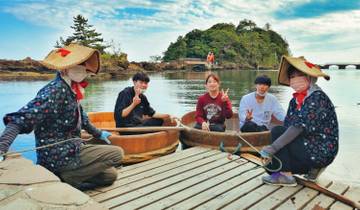
- In-depth Cultural
- Volunteering
Environmental Conservation Volunteering, Cultural Immersion and Temple Stay on Sado Island
Great to mix with younger people who want to make a difference in the world and a heap of new experiences for me!
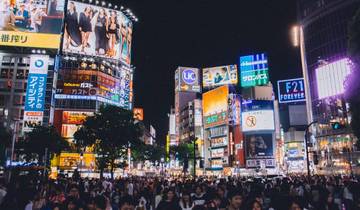
- Coach / Bus
North Japan
Overall 4.5 stars Itinerary 4 stars Hotels 5 stars Bus and driver 4.5 stars (no USB outlets at seats) Guide Ken Igarashi (Rei) 5 stars (knowledgeable, entertaining, well organised) Meals 5 stars (quality Japanese food) Ferries 4.5 stars Lucky to see cherry blossom in full flower in Hokkaido

North Japan End Sapporo
Very busy days - 12 hours most days.
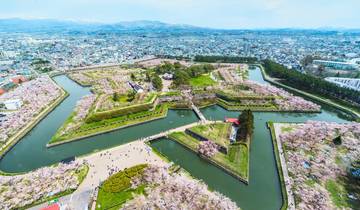
- Sightseeing
Hokkaido & Tohoku - 9 Days
Hokkaido tour , the hotels & meals, our tour guide being very helpful & knowledgeable , the people I travel with were great everything was great.

- Food & Culinary
- Language course
Culinary Internship Program + Cooking & Japanese lessons in Japan
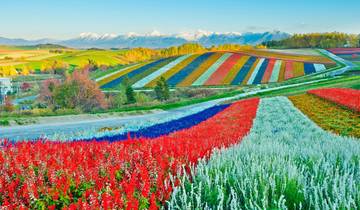
- Christmas & New Year
6 Days Hokkaido's Floral Symphony Tour (private guide & driver)The best time to visit falls between June and August in summer.
- €85 deposit on some dates Some departure dates offer you the chance to book this tour with a lower deposit.
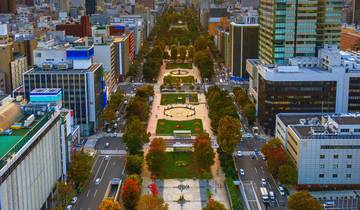
Hokkaido Blooms
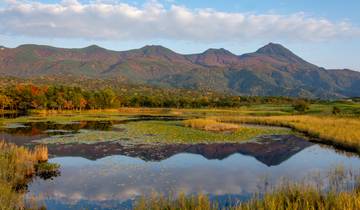
Hokkaido Fall Foliage - 8 Days

Journey to the East, featuring Sapporo Snow Festival
We got to see the Red Crowned Cranes and sea eagles on drift ice.

- Photography
- Wildlife & Nature Photography
- Intl. Flights Included
Photography in Hokkaido - Orcas, Bears and Cranes
- Flights included

Hidden Wonders of North Japan
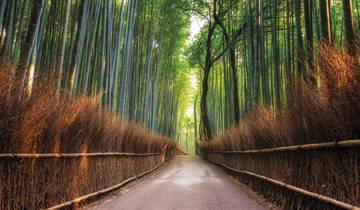
Traditional Japan and north of Japan
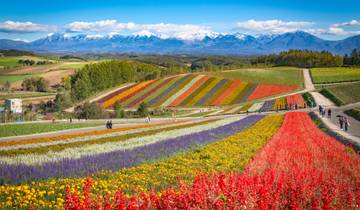
Hokkaido Tranquil Summer 8 Days
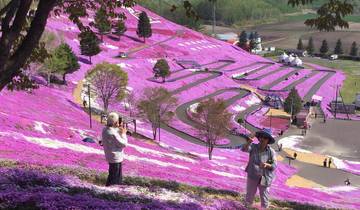
Hokkaido Spring Spectacular - 8 Days
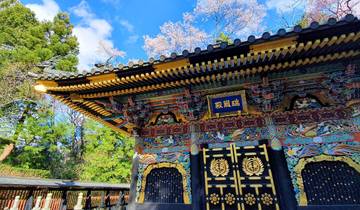
- Mountain Hikes
Cranes, Giant Lanterns and Mountain Gas Rockets
What people love about northern japan tours.
Ray, our tour guide was fantastic. Everything was planned to perfection. He ensured all tour members were taken care of with multiple languages to deal with as well. A couple of notes. We were told to look for aTour-Radar/Europamundo sign on arrival in Tokyo for a car ride to the first hotel. After phone calls it was determined to have been a Green- Tomato sign were to look for. This caused another couple to wait nearly an hour. Also the hotel in Hokadate was a bit of a disappointment. All other accommodations were excellent. This was the first tour we have been on as we normally go out on our own. Because of Ray we would really consider doing this again. He deserves nothing but praise and a raise in his salary.
Northern Japan Tours starting in:
- Sapporo (6)
- Family (15)
- Fully Guided (14)
- In-depth Cultural (12)
- Explorer (7)
- Personalized (7)
- Small Group (5)
- 10 Day Tours (8)
- Spring 2024 (7)
- Summer 2024 (10)
- Fall / Autumn 2024 (9)
- Winter 2024 / 2025 (2)
- Spring 2025 (3)
- Summer 2025 (1)
- Fall / Autumn 2025 (1)
- Winter 2025 / 2026 (1)
- April 2024 (3)
- May 2024 (8)
- June 2024 (9)
- July 2024 (9)
- August 2024 (8)
- September 2024 (6)
- October 2024 (10)
- November 2024 (2)
- December 2024 (1)
- January 2025 (1)
- February 2025 (2)
- March 2025 (1)
- April 2025 (2)
- May 2025 (2)
- June 2025 (1)
- July 2025 (1)
- August 2025 (1)
- October 2025 (1)
- February 2026 (1)
Other Regions in Japan
- Southern Japan (372)
- Central Japan (362)
- Honshu (356)
- Kansai (23)
- Mount Fuji (16)
- Shikoku (13)
- Hokkaido (11)
Travel Styles
- Singles and Solo (12)
- For Couples (6)
- Seniors (7)
Best of Northern Japan
Fine Cuisine, Temples and Hot Springs
Tour Highlights
brief explanation of what this Tour offers goes here.
Tour highlights
- Tokyo, It has Everything You Can Imagine
- Nikko Temples
- Aizu-Wakamatsu: Deep Japan
- Private Local Guide in Ouchijuku on Day 4
- Matsushima Bay
- Yamadera Temple
- Ginzan Hot Spring
- Picturesque Bath in Nyuto Onsen
What's Included
- Airport Pick-up and Orientation
- Destination Transfers
- Accommodations
- Meals, Guides and Activities as detailed
- Assistance from our Japan Office
Our Commitment
- Trips of Experience
- Personal Service
- Commitment to Excellence
- Responsible Travel
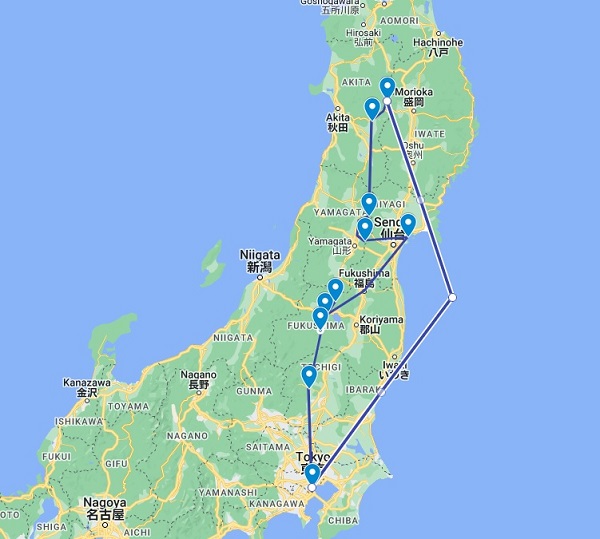
This unique tour will lead you to the most beautiful spots of Tohoku (Northern Japan). You will first start in Tokyo and soon head to Nikko . Nikko’s colorful shrines and temples and its national park offer visitors a wonderful combination of both Japanese history and natural beauty. The next day to will take a train to Aizu-Wakamatsu. This castle town is well known for its sake and samurai tradition because the Aizu clan remained loyal to the shogun even after the feudal leader was removed from power during the Meiji Restoration in 1868. While staying in Aizu-Wakamatsu we suggest you visit Ouchijuku a beautiful post town, Tsuruga Castle and Aizu Bukeyashiki (a large reconstructed samurai house), Suehiro Sake Brewery,… During the last day of your stay in Aizu-Wakamatsu, you will explore the beautiful and off-the-beaten-path area of Urabandai by charter taxi. The taxi drivers are very knowledgeable and can introduce you to the tasty food spots that only locals know about.
Your next destination will be Matsushima to appreciate one of the most beautiful views of the country. After breakfast, you will head to the mysterious temple of Yamadera. Today’s highlight after climbing about 1000 steps will be the Godaido Hall. After some good sleep, you will then head to Ginzan Onsen to rest in its hot spring baths. From Ginzan Onsen you will take a bus and a train to Kakunodate a small and traditional samurai town. Finally, it will be time to reach Nyuto Onsen: one of the most beautiful Japanese hot spring resorts.
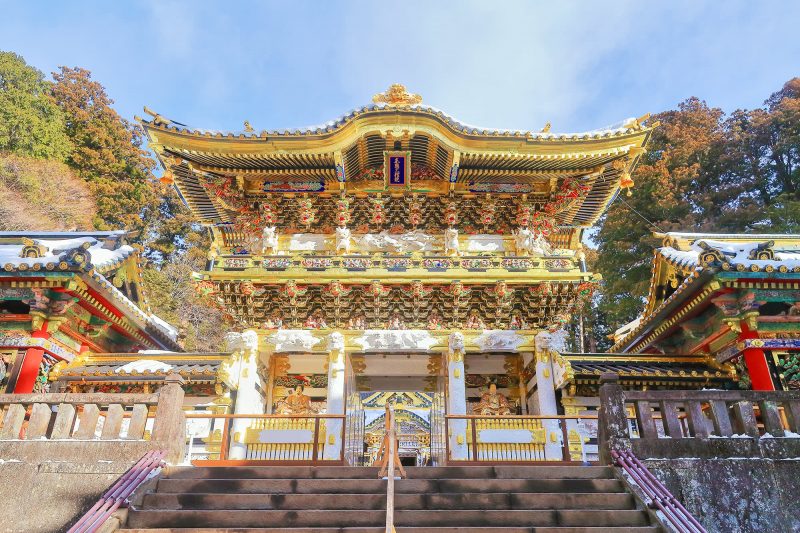
This tour can be fully customized. The below itinerary is an example of a Classical custom tour. Price per person based on double occupancy for two travelers: Classical : from US$4,810 Superior : from US$8,100 Luxury : price upon request Request a Quote
Sample Itinerary
The tours featured throughout our website are intended to give you ideas for what's possible when you travel with us. Treat them simply as inspiration, because your trip will be created individually by one of our specialists to match your tastes and budget.
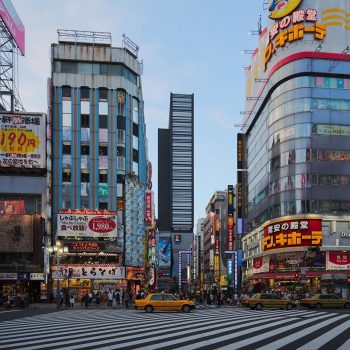
Your airport pick up will meet you at Narita or Haneda International Airport (assuming your flight arrives after 8:00am and before 21:30) and will take to your hotel by public transportation. They will answer any of your questions and hand you your pocket internet device to use during your trip. They will also hand you a rechargeable transportation card to use on non-JR trains with about 2,000 yen initial credit for each traveler. Details directions will be included in your tour organizer send to you about 2 weeks before you depart for Japan. Once you are checked in and had time to rest, you will be free to enjoy dinner anywhere you’d like. Make sure to ask your airport pick-up to provide a few recommendations before parting ways.
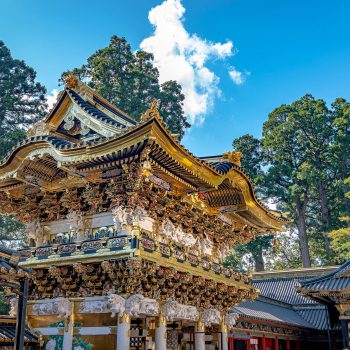
Today you will travel to Nikko and stay in one of their famous Japanese ryokan inns. Nikko’s colorful shrines and temples, and its national park offer the visitor a wonderful combination of both Japanese history and natural beauty. Nikko means “sunlight,” and its shrines and temples were constructed in the 17th century in honor of the great shogun, Tokugawa Ieyasu. This complex of temples and shrines at Toshogu are the highlight of Nikko. You will have dinner served at your ryokan and breakfast the following morning. After dinner we suggest bathing in one of the ryokan’s natural hot spring baths.
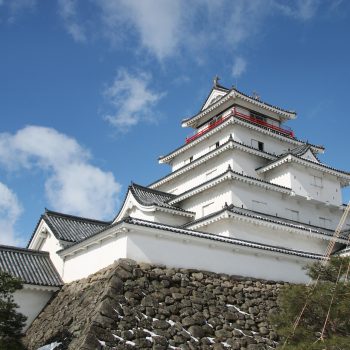
Aizu-Wakamatsu
This castle town is well known for its sake and samurai tradition because the Aizu clan remained loyal to the shogun even after the feudal leader was removed from power in the Meiji Restoration. While staying in Aizu-Wakamatsu we suggest you to visit Tsuruga Castle or Aizu Bukeyashiki (a large reconstructed samurai house), Suehiro Sake Brewery,… The ride from Nikko to Aizu-Wakamatsu for about 3 hours and 20 minutes
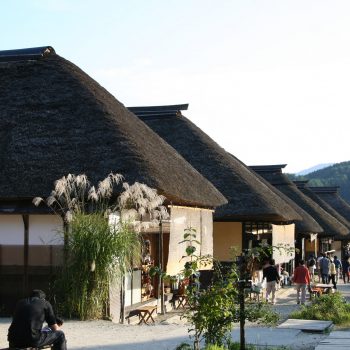
Today after breakfast at your ryokan in Aizu-Wakamatsu you will head to Ouchijuku. Like Tsumago or Magome along the Nakasendo road; Ouchijuku is a former post town along the Aizu-Nishi Kaido trade route, which connected Aizu with Nikko during the Edo Period. Ouchijuku is located in Shimogo Town, about 20 kilometers south of Aizu. The nearest station is Yunokami Onsen on the Aizu Railroad (it’s a 35 minutes ride, not covered by the Japan Rail Pass), from where Ouchijuku can be reached in a 15 minute taxi ride (around 2000 yen one way).
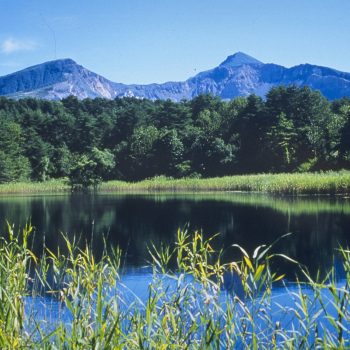
Today you will explore the beautiful and off the beaten path area of Urabandai. The best way to explore the area is to take a sightseeing taxi. The taxi drivers are very knowledgeable and can introduce you to the tasty food spots that only locals know. We will try our best to reserve an English speaking driver for you but it depends on availability so we invite you to reserve your tour as soon as possible.
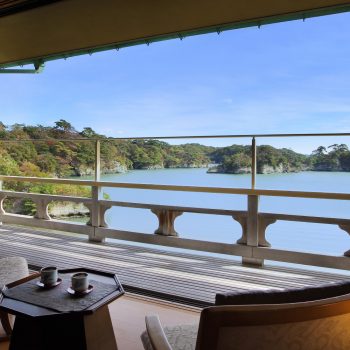
Today you will travel to Matsushima, a group of about 260 shima (islands) were covered in matsu (pine trees) and this is how the area got its name. Along with Miyajima and Amanohashidate, Matsushima Bay is considered one of the most scenic places in Japan. The islands can be viewed from various lookout points. You will take a local cruise to best enjoy Matsushima. The train from Aizu-Wakamatsu Station to Matsushima Station will take approximately 3 hours.
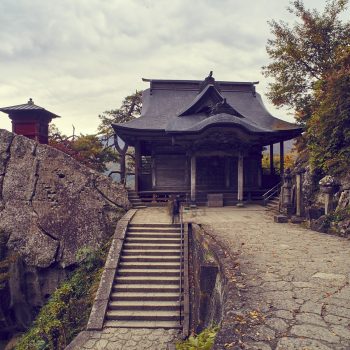
Today you will arrive in the town of Yamadera which is is famous for its scenic temple located in the mountains northeast of Yamagata City. The temple grounds extend high up a steep mountainside, from where there are great views down onto the valley. The temple was founded over a thousand years ago in 860 as a temple of the Tendai sect under the official name Risshakuji. Its popular name, Yamadera, literally means “mountain temple” in Japanese. Today’s highlight after climbing about 1000 steps will be the Godaido Hall. From there you will have a relaxing view on the valley. If time allows we invite to hike in the surrounding forest where you will find stone lanterns and small Buddha statues. Dinner will be served at your accommodations so check-in by 17:30. The train ride from Matsuhima to Yamadera is about 1 hour and 25 minutes long.
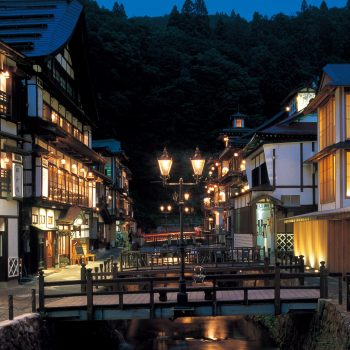
Ginzan Onsen
Ginzan Onsen is a well-known hot spring town in the mountains of Yamagata Prefecture. The area originally developed around a silver mine; however, these days it is better known as one of Japan’s prettiest onsen towns with historic ryokan lined up along the river. Ginzan Onsen’s traditionally styled ryokan occupy beautiful three and four story wooden buildings that, with their exposed woodwork and white plaster walls, evoke nostalgic feelings of a bygone era. There is one exception, however, in the Fujiya ryokan at the center of town, which was recently rebuilt by famous modern architect Kuma Kengo. Dinner is included at your ryokan so check-in by 17:30. The train ride from Yamadera to JR Oishida Station takes about 1 hour and 20 minutes. From there you will take a shuttle bus to Ginzan Onsen (30 minutes ride).
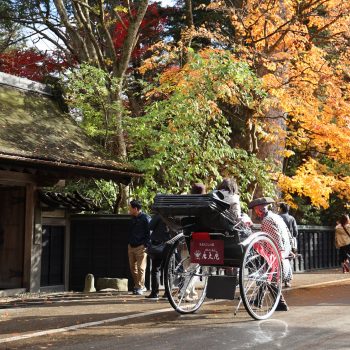
Kakunodate is a former castle and samurai town. Though the castle no longer remains, its samurai and merchant districts are relatively unchanged from its founding in 1620. Well preserved former residences that now serve as museums offer a glimpse into the samurai lifestyle. The Aoyagi House, with its thatched roof, is one of the most interesting. The Ishiguro House has a collection of samurai armor and clothing on display. This area is also famous for its cherry trees. The industry of cherry-bark veneer handicrafts, called kabazaiku, thrives here and visitors can purchase locally crafted items as souvenirs. Kabazaiku demonstrations are given in the Denshokan Museum, where these and other regional crafts are on display. The bus and train from Ginzan Onsen to Kakunodate Station takes about 4 hours.
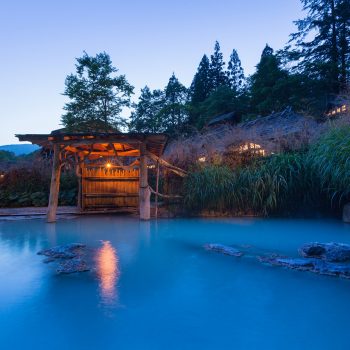
Nyuto Onsen
Nyuto Onsen is a hot spring resort in the rural setting, surrounded by deep forest and mountains. Main features of Nyuto Onsen are simply to enjoy plenty of mountain and forest scenery, taste traditional Japanese meals and appreciate their natural hot-springs. In summer, thousands of flowers blossom and open up around you. While leaves on trees change to shiny golden colors in autumn which attracts many season admirers, on the other hand you may surprise the volume of snow falls in winter. Dinner will be served early at your ryokan, check-in by 17:30. The transfer from Kakunodate to Nyuto Onsen will take about 45 minutes.
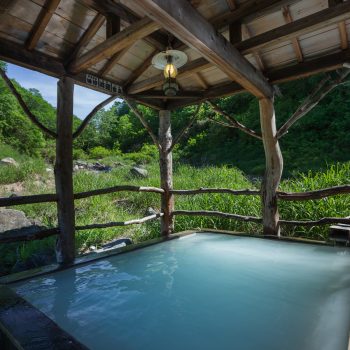
Today you can relax in your ryokan and enjoy its baths but if you like you can also visit other hot springs around Nyuto Onsen: Taenoyu, Kuroyu, Ganiba,… They charge a small fee for a bath during the day. Dinner will be served at your ryokan so come back on time.
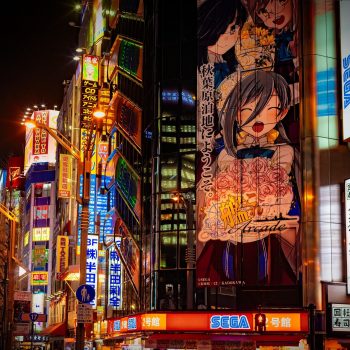
Today after breakfast in Nyuto Onsen you will come back to Tokyo. It should be the perfect time to buy souvenirs, visit a few more unique sights or take some rest. This will be your last evening on this journey, if you want to arrange a specific dinner or activity in Tokyo feel free to ask us. It takes about 3 hours and a half from Nyuto Onsen to Tokyo Station.
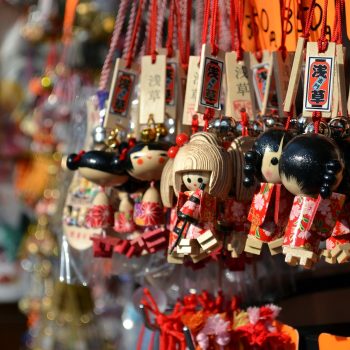
Today you will fly home with memories that you will keep for the rest of your life.
Other Tours Similar To Best of Northern Japan
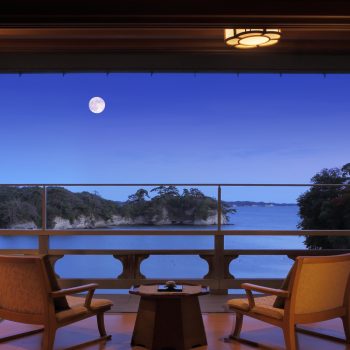
North Central Exploration
Explore northern honshu.
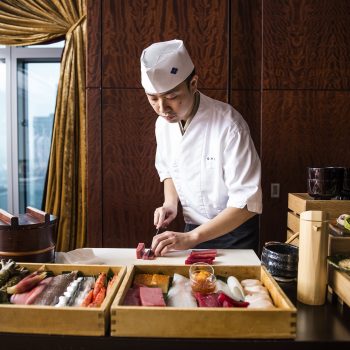
Japanese Alps, Cuisine & Culture
Explore the mountains, food and culture of japan.
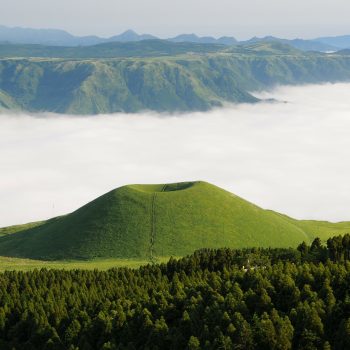
Best of Kyushu
From volcanoes to mangrove, virtual map tour.
Open Iframe
Best of Northern Japan In Pictures

What Our Customers Have To Say
John moawad, classical japan tour.
It was our first trip to Japan. Working with Jeff was a pleasure. His knowledge of the country and local contacts were very helpful. Choice...
Marina Boyer
Working with Jeff at Rediscover Tours was a wonderful experience. He helped me plan a 10 day trip of a lifetime to Japan with my mother...
Shoguns and Samurai
I would like to take this opportunity to commend and thank you for the marvelous vacation we recently enjoyed in Japan. The entire experience exceeded...
Our Team Of Local Experts
Our team of Japan experts have all lived in Japan for years and know its the hidden treasures. Our team is here to answer all your questions and to build your tour just the way you want it.
Jeff Aasgaard
Jeff was born in a south suburb of Chicago named South Holland and lived in Japan for 14 years. He now lives in Commerce Township, Michigan with his wife Yoshimi, son Shota, and daughter Mina. He enjoys playing with his kids, volunteering with his daughter’s marching band, cycling and training and teaching Aikido.

Michiyo Kakiuchi
Michiyo was born in Noboribetsu, Hokkaido Prefecture though currently lives in Takarazuka, Hyogo Prefecture. Her main passions in life is traveling all around the world and enjoying their cultures.

Izumi Yamauchi
Izumi has spent most of her life in the Kansai region, except for the 10 years that she enjoyed in the UK. Living abroad has made her appreciate her own culture and local beauty even more. She currently lives in Osaka with her family, including two cats and two dogs.
Why Rediscover Tours
Great trips don't just happen; it takes expert knowledge and years of experience to create a truly memorable holiday. You can rely on Rediscover Tours to make your perfect Japanese experience. Our dedication to excellence makes the difference.
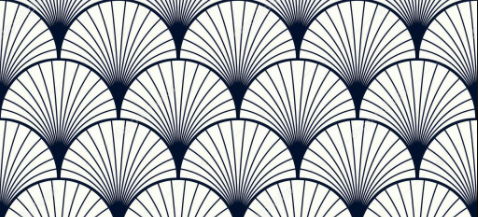
Trips Made for You
Your Japan travel expert will create your trip just for you
Your interests and travel style will be front and center when designing your tour
Accommodations will be selected based on your style and we will inform them of all your special meal and physical requirements
Japan Experts
Your Japan expert has lived in Japan or is Japanese
They know the hidden treasures of Japan that you will love and most tourists miss
Most of our team lives in Japan giving them first hand knowledge of the latest trends and experiences for you to enjoy
Finest Guides
Private local guides add a whole new depth to your Japanese tour
We only hire the best guides and review each trip with them insuring excellent experience
Your private guide will listen to you, show you sights of interest and will make on the fly changes to match the weather and crowds
With Confidence
Our office in Japan is here to assist and support you
Rediscover Tours has been organizing travel to Japan since 2000
You will arrive comfortable in the knowledge that all details are taken care of and that our Japan office is just a call away
Basho Tohoku Tour: Narrow Road to the North
7 Days, 6 Nights
Activity Level
Start / Finish
Sendai / Yamagata
Technical Level
A walk through beautiful Tohoku in northern Japan.
Guided, moderate walking following in the footsteps of Japan’s greatest poet, Matsuo Basho. Includes the pine-clad islands of Matsushima Bay, spectacular Japanese gardens at Hiraizumi, and the sacred mountains of Dewa. Accommodation in traditional inns, modern hotels, and a Shinto shrine, with Japanese cuisine and onsen thermal hot spring baths.

Day 1 Sendai
Day 2 sendai – matsushima, day 3 matsushima – hiraizumi, day 4 hiraizumi – akakura onsen, day 5 akakura onsen – mt. haguro, day 6 mt. haguro – shizu onsen, day 7 shizu onsen – yamagata, related tours, tohoku aizu explorer.
7 days | May - November Activity Level : 2
Self-Guided
Self-Guided Basho Wayfarer
6 days | May - November Activity Level : 2
Kunisaki and Yufuin Walk
5 days | March - June & September - December Activity Level : 2
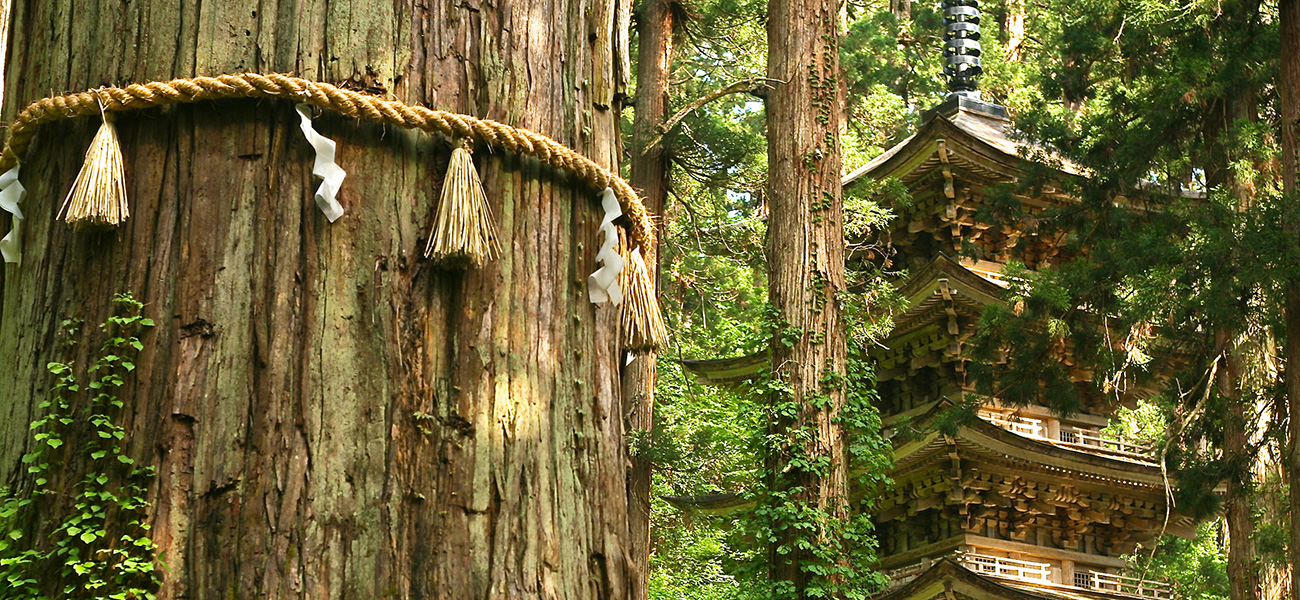
Please sign up here if you wish to receive our newsletter.
Walk Japan Ltd. will use the information you provide on this form to be in touch with you and to provide updates and marketing. Please let us know all the ways you would like to hear from us:
You can change your mind at any time by clicking the unsubscribe link in the footer of any email you receive from us, or by contacting us at [email protected]. We will treat your information with respect. For more information about our privacy practices please visit our website. By clicking below, you agree that we may process your information in accordance with these terms.
We use MailChimp as our marketing platform. By clicking below to subscribe, you acknowledge that your information will be transferred to MailChimp for processing. Learn more about MailChimp's privacy practices here .
Quick Links
- For Schools
- Destinations
- Japan Information
- Latest News
- Community Project & Sustainability
- Booking Conditions
- Privacy & Cookies Policy Statement
- Personal Information Collection Statement
Follow Walk Japan
© 1992-2024 Walk Japan Limited
Travel Agents License No. 354159
Website Design by Walk Japan and Development by Macareux Digital, Inc.

- GROUP TOURS
- TAILOR MADE TOURS
- MAKE A BOOKING
- MAKE A PAYMENT
- DESTINATIONS
- Cherry Blossom Tour
- The Heartland Tour
- Ancient Highway Tour
- Takayama Festival Tour
- Crimson Leaf Tour
- Kyushu Gateway Tour
- Fuji Paths Tour
- Takayama Reverse Festival Tour
- Northern Route Tour (to Kyoto)
- 2020 Tour Dates
- 2021 Tour Dates
- Autumn Tours to Japan
- Winter Tours to Japan
- Why Dragonfly?
- Who are we?
- Testimonials
- Tailor Made Tours
- Make a Booking
- Make a Payment
- Destination (of Japan)
- National Holidays of Japan
- Zen Gardens
- Terms & Conditions
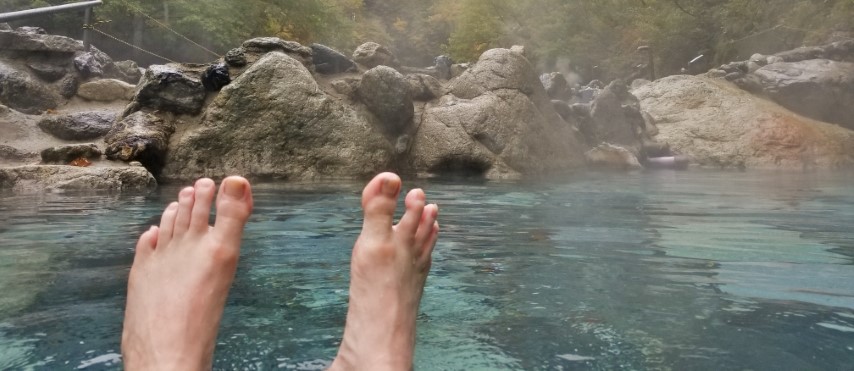
- "> Tour Overview
- "> Tour Itinerary
- "> Tour Accommodation
- "> Tour Gallery
- "> ">Other Tour Info
Our Northern Routes of Japan tour from Tokyo to Kyoto is a fast paced addition to our collection of Japan tours . Unlike our other tours, the Northern Route Tour to Kyoto is a quick paced tour for those who want to see and experience a lot of Japan in a short period of time, this tour of northern Japan is a 7 night getaway which delivers much in a short space of time.
We take you off the main tourist route connecting Tokyo and Kyoto making the most of the newer bullet train route running north through the rural plains and hills of Nagano.
We see the famous Snow Monkeys, have the opportunity to soak in a wild outdoor hot spring, travel through the Kurobe Gorge, stay in a 250 year old farmhouse, eat delicious local foods and see exquisite gardens and beautiful scenery. The Tour finishes in Kyoto, the old capital steeped in history, from here you may want to return to Tokyo, go skiing if in the winter, fly out from Osaka, or why not stay in Kyoto for a few more days. We’ll be happy to help with extra arrangements!
If you are looking for a fabulous trip through northern Japan, this is the tour for you.
Full Details
The tour starts this evening. After introductions and a tour briefing we go for a walking tour of neon-lit night time entertainment district of Kabuki-cho where we eat at a local restaurant (on us). This is a great opportunity to experience some local cuisine and meet the other members of the group.
.jpeg)
This morning we’ll board the bullet train bound for Nagano arriving there in around 90 minutes. After dropping off your baggage at the hotel near the station we’ll continue to the Jigokudani Monkey Park where we’ll walk through the forest to see the famous Snow Monkeys bathing in the volcanic hot springs. Here you’ll have plenty of free time to watch and photograph the monkey antics.
.jpeg)
We continue our journey north on the Hokuriku bullet train bound for Kurobe Unazuki. After dropping off your baggage at the hotel we take the scenic railway through the gorge, it’s best to sit on the right side, the views are amazing! We wind our way along getting off at the remote station of Kuronagi Onsen. A further 20 minute hike takes us to an outside onsen (hot spring) set beside the river, there is a mixed onsen, for both male and female, there is also a female only onsen if preferred. If you don’t fancy having a dip, that is fine, there is a restaurant here, a great place to admire the scenery from.
From here we continue along the gorge where you get off before making the journey back again.
From December through April due to the heavy snow in the region the train to the Kurobe Gorge is closed in the winter months and there is no entry. During the winter months the tour will visit Matsumoto instead, around 50 minutes from Nagano where we visit Matsumoto Castle and the old castle district. The following day we go to Takayama and continue as scheduled.
.jpeg)
Today we go to the mountain town of Takayama, famous for its old preserved quarter and cultural heritage buildings dating back to the Edo era (1603-1868). After arriving we’ll beeline for the historical district and visit a sake distillery first where you can sample some of the produce. Afterwards we continue along the atmospheric streets to the Kusakabe House, a merchant house which belonged to a wealthy family we before spit up for some free time. There is plenty to see whether it be shops, historical buildings, restaurants or a hill side walk along the Higashiyama Trail. You must try the local speciality beef too, Hida Beef – delicious!
.jpeg)
This morning after breakfast visit the Takayama morning market selling local wares and foods before taking the hour long bus ride today to the village of Shirakawa-go with World Heritage status. The picturesque village is famous for its old thatched farmhouses which until recently was difficult to get to and completely cut off during the winter. During the day the village is busy with tour bus groups but we stay in the village overnight and enjoy it once all the selfie-stick army have trundled off and the locals get back on with life again. Tonight you’ll be treated to a traditional home cooked meal in the farmhouse.
.jpeg)
Enjoy a beautiful traditional breakfast this morning in the farmhouse before we take the bus bound for Kanazawa about an hour away. Kanazawa was the second largest city after Kyoto which was fortunate enough to not be bombed during WW2 and has a wealth of things to see and do. Our first stop will be Kenroku-en, the large strolling garden built over a couple of centuries by the ruling Maeda family in the feudal days. Afterward to see the Nomura Samurai residence and its impressive walled garden within the preserved samurai district.
.jpeg)
The final leg of the trip we head south on the Thunderbird to Kyoto, Japan’s cultural capital where we’ll visit Sanjusangendo to conclude the tour. The hall is 120 metres long, the longest wooed hall in Japan and houses 1000 human sized Kannon Buddha (goddess of mercy) flanking the main statue in the centre, it’s an impressive sight dating back to the 1100s. During the Edo era the side of the hall was used by archers in extraordinary fetes of endurance firing thousands of arrows for long periods of time at a small target at the far end of the hall. Marks from these events can still be seen. The rest of the day is free and you’re tour leader will help with any train tickets and advice for your transfer.
.jpeg)
Why not stay a few more days in Kyoto? From Kyoto you can go to Osaka for your departing flight, or head back to Tokyo by bullet train. Alternatively you could continue west on a self-guided adventure to Hiroshima or Naoshima, the art island. For more ideas, just drop us a line and we’d be delighted to arrange a self-guided extension for you!
Accommodation
.jpeg)
A comfortable, clean, and efficient business hotel with helpful staff situated in a great location near Tokyo Station and the Imperial Palace. As you would expect for such a prime piece of real estate, the rooms are not so big but it has everything you need and much more!
LAN and Wifi
Breakfast included
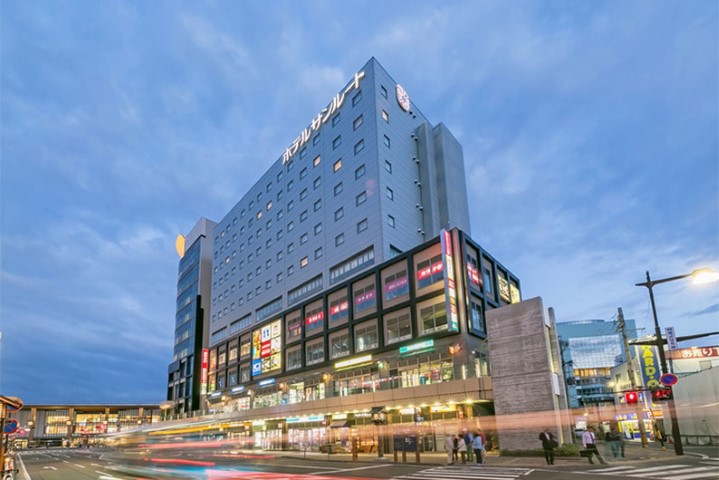
Hotel situated in a great location near the station.
All rooms have Wifi
Breakfast included.
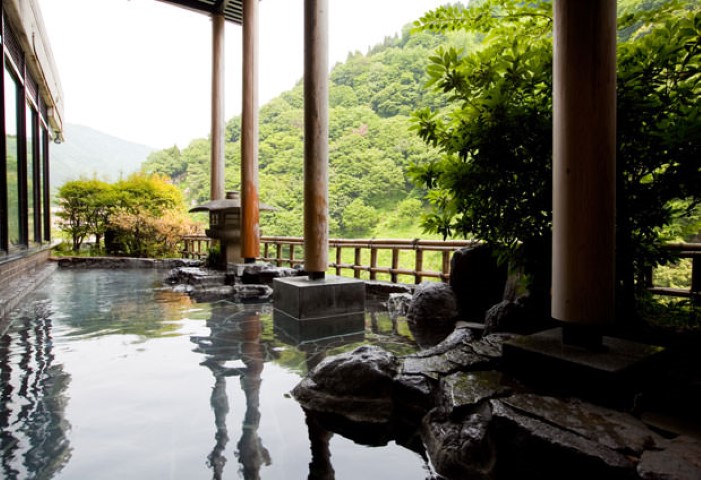
During Non-Winter (April - November)
Ryokan (tradition Japanese inn), with hot spring facilities and views of the Kurobe gorge.
Breakfast and dinner included (dinner is traditional kaiseki style with lots of tasty dishes)
.jpeg)
During winter (Dec - April)
Modern business hotel in central location.
All rooms Wifi
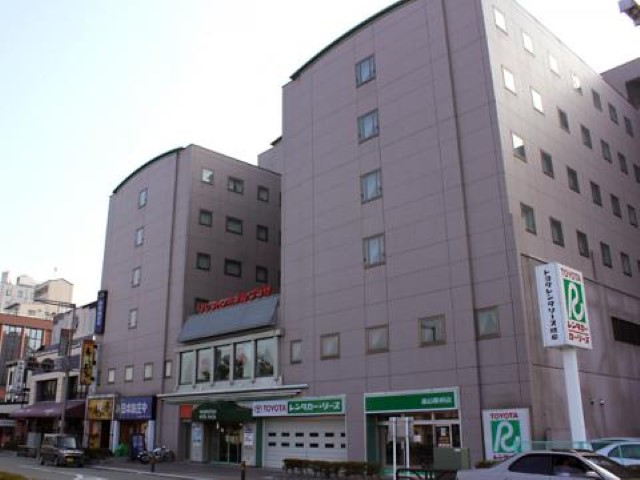
Hotel across from Takayama station, the perfect place from where to explore.
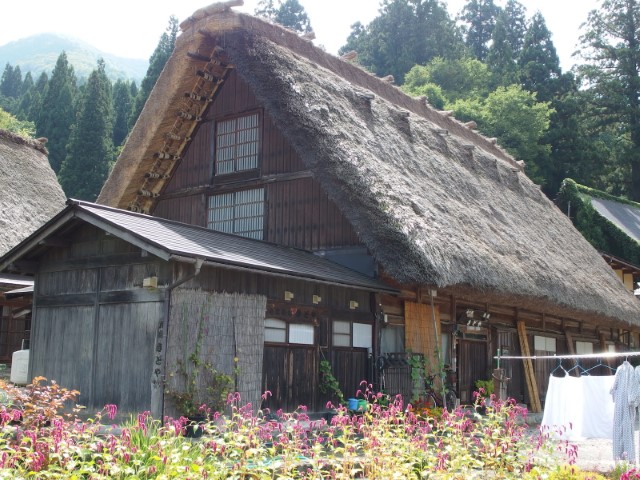
Staying in old traditional gassho-zukuri thatched family home
Homemade breakfast and dinner included
Even has Wifi!
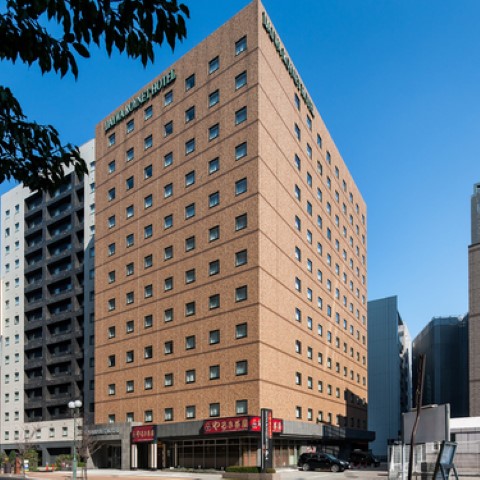
Hotel near the station with easy access to all the places of interest.
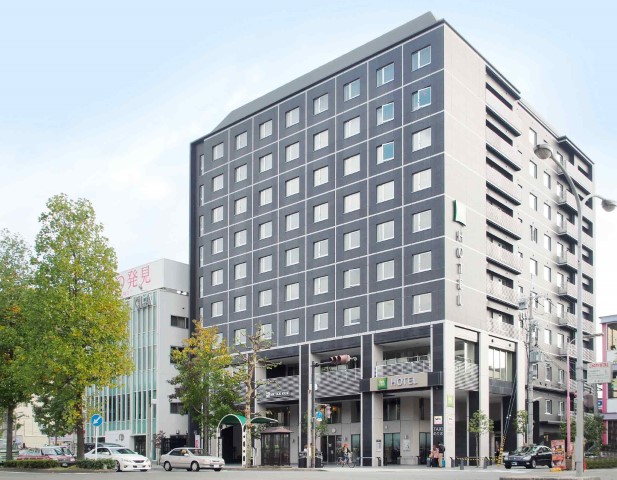
Sits across from Kyoto station, the transportation hub of the city with easy access for transferring to the airports of Osaka or Tokyo.
.jpeg)
Other Information
What is included.
- ALL accommodation (7 nights)
- The support of your Tour Leader for the entirety of the tour
- ALL Entrance fees to Museums, Temples, Shrines and Gardens when with the guide following the itinerary. Visiting alternative / additional sites at personal expense
- ALL city to city transportation including the shinkansen bullet train
- Meet & greet at the airport in Tokyo (either Narita or Haneda) on arrival and transfer (guided) to the tour hotel up to one week before the starting date of the tour
- All local transportation is covered while with the guide following the itinerary. Visiting alternative / additional locations at personal expense
- Suica card - An electronic travel card for your convenience (saves fiddling around with tickets especially while in Tokyo!)
- Baggage forwarding for one bag per person
- Breakfast every morning
- Group meal on Day 1 in Tokyo (Alcoholic drinks included!)
- Dinner at Kurobe on Day 3 (Kaiseki - traditional meal with lots of tasty dishes!)
- Dinner on Day 5 (Traditional Teishoku) at farmhouse in Shirakawa-go
- Tour Info-Pack
- 100% payment protection through the TTA (our membership number is U6165)
What's not included?
- Meals, except for the ones mentioned above
- Any coin lockers that you may use
- Airport transfer at the end of the tour / or back to Tokyo / or Osaka. Please contact us regarding the cost of this.
- Travel Insurance. You must take out travel insurance before travelling to Japan, we suggest this is done soon after a booking has been made.
- Flights to and from Japan!
After a booking request has been made through the “Make a Booking” section of this website, your booking will be processed. We’ll email you back to confirm it along with your invoice and payment details, we accept payments by card or bank transfer. The deposit of GBP 300 / USD 400 per person is requested within 7 days to confirm your booking. The balance is due by 12 weeks prior to the tour departure date. All payment made to us are protected by the TTA (Travel Trust Association). Our membership number is U6165.
Flexibility
The itineraries in our tours are flexible, and do vary occasionally, sometimes due to weather or on-going events such as festivals which guests may want to see. In addition if there is something else you’d like to do or see on your trip please mention this to your tour leader and we’ll try our best to ensure you can do it.
Age / Requirements / Fitness
The Northern Route Tour is suitable for ages of around 12 and upwards, and is ideal for families, couples, and singles alike.
Our only requirements are English speaking ability (all tours are conducted in English) and a zest for life! While Olympic levels of fitness are not necessary, on average we walk around 3 to 5 kilometres per day, steps are involved at some of the tourist sites we visit as are slopes. Most stations do have escalators but not all and an extended time is spent on the feet each day. If you have any questions about this, please just let us know.
Having said all that, walking is done at an easy pace, with plenty of stops for ice cream and to absorb the sights. In the unlikely event that an excursion is going to be too taxing or if you have another preference, you are welcome to break away from the group at any time. No part of the itinerary is compulsory; we like to keep things as fun and flexible as possible!
Transportation
As with all our Small Group Tours in Japan we use the extremely efficient, clean, safe and reliable public transportation network. - It's the most efficient way to get around, and by far it's the best way to experience the country and its people. This is not a tour bus holiday with fixed tourist trap set lunches and carpet sales in the afternoon! At times, particularly in Kyoto when using the city bus it might not always be possible to sit. For longer journeys we use the bullet train and seats are reserved in advance.
Some of the accommodation on the tour is more basic than our other tours.
Baggage Forwarding
We do at times forward your main cases ahead from one hotel to another (one case per person) allowing you to travel light and easy keeping things as fun as possible. If you bring too much luggage with you, or buy too many souvenirs during the tour and require additional use of the service, this can easily be arranged.
Minimum Numbers
The minimum number of passengers on the Northern Route Tour is two.
Single Supplement
Because we keep the group size to a maximum of 8, unfortunately we have to charge a single supplement of £ 250 if travelling alone. For this you'll be ensured to have a room to yourself for the entirety of the tour, except for when staying at the traditional ryokan, here we may ask you to share a room with another member of the group of the same sex. If you have any questions about this, please drop us a line.
If the Northern Route Tour to Kyoto isn't for you, have a look at our other tours to Japan, we have a fantastic selection of tours for all tastes and budgets.
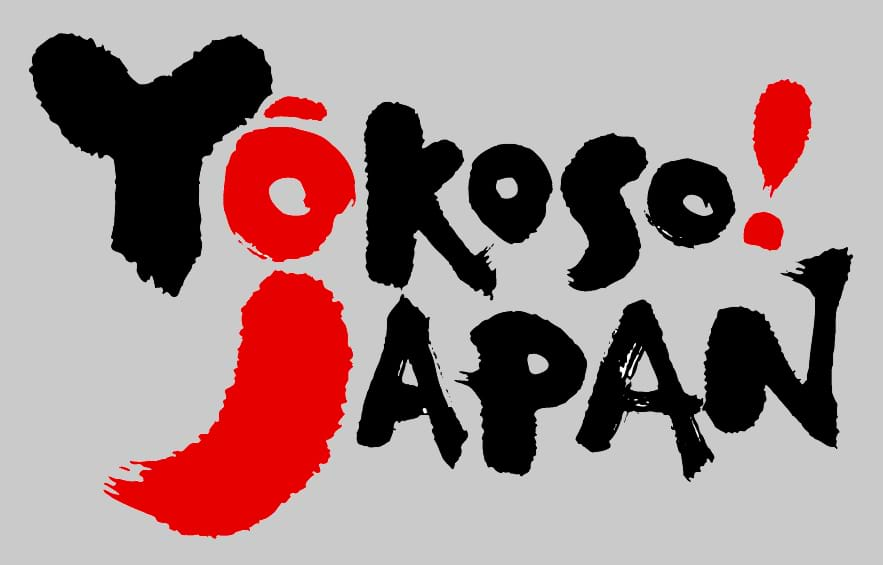
Request a call back


Travel Guide
- Things to Do
- Best Hotels
- Planning a Trip
- In One Week
- In Two Weeks
- For Families
- The North in Two Weeks
The North in Two Weeks in Japan
Tohoku and Hokkaido are usually ignored by travelers. Though it's true that the country's most significant historic treasures lie in the southern regions, Northern Japan, where the emphasis is on natural wonders and hot-spring spas, offers a more relaxed vacation for those who have already seen the country's must-sees.
Day 1: Arrive in Tokyo
Spend the night in Tokyo; if you wish to spend a few days in the capital sightseeing, refer to the itineraries earlier.
Days 2 & 3: Akan National Park
Fly from Tokyo's Haneda Airport 1 1/2 hours to Kushiro Airport, where you should stop by the small tourist office for a pamphlet on tours of Kushiro Marshland National Park; you may be able to join one that day. Otherwise, take the bus (1 hr. and 20 min.) to Akanko Onsen. Take a boat cruise of Lake Akan, famous for its marimo, a spongelike ball of duckweed, and tour the marimo museum. Visit Ainu Kotan Village with its shops and traditional Ainu dancing. Outdoor pursuits include hiking, canoeing, and fishing (including ice fishing in winter).
Days 4 & 5: Sapporo
Board an early morning sightseeing bus for a tour of Akan National Park and its natural wonders, and then board a train Bihoro Station for the 3-hour ride to Sapporo. Capital of Hokkaido Prefecture and the island's largest city, Sapporo is an easygoing city that's a snap to navigate. Highlights include Nopporo Forest Park, where you can visit the Historical Museum of Hokkaido and see vintage homes and buildings at the Historical Village of Hokkaido. Be sure to dine at the Sapporo Bier Garten on the grounds of the old Sapporo brewery.
Day 6: Noboribetsu Spa
En route to Noboribetsu, stop off at the Poroto Kotan and Ainu Museum in Shiraoi with its impressive collection of indigenous Ainu artifacts. In Noboribetsu Onsen, known for its curative hot springs, hike through Hell Valley for a view of the bubbling hot water that has made Noboribetsu famous, and then experience its magic at the Dai-ichi Takimotokan hot-spring baths.
Day 7: Hakodate Port Town
Take the train 2 hours to Hakodate. Wander the waterfront warehouse district and historic Motomachi, a picturesque neighborhood of steep slopes and turn-of-the-20th-century clapboard homes and other buildings, relics of when Hakodate opened as one of Japan's first international ports following 2 centuries of isolation. In the evening, take a cable car to the top of Mount Hakodate, renowned for its night view of Hakodate.
Days 8 & 9: Lake Towada
Visit Hakodate's morning market (famous for its hairy crabs) and then board a train for the 2-hour ride to Aomori Station, where you'll transfer for the 3-hour bus ride to Lake Towada. Take a boat cruise of the lake and visit Towada Jinja Shrine, but the highlight of a stay here is a hike along the Oirase Stream, a coursing river shaded by trees and marked by huge boulders.
Days 10 & 11: Back in Time at Nyuto Onsen
There's a sightseeing bus that departs Lake Towada every morning mid-April through October, arriving at Tazawako Station 7 hours later, where you then board a local bus for Nyuto Onsen, a secluded valley of hot springs and rustic inns. It's a good base from which to explore the many wonders of the Towada-Hachimantai National Park, including skiing in winter and hiking, biking, and swimming in summer. For the ultimate ryokan experience, spend the night in Tsuru-no-yu Onsen, a rustic and remote Japanese inn with outdoor baths.
Day 12: Kakunodate Castle Town
Only one stop away from Tazawako Station on the Shinkansen is Kakunodate, a small and relatively unspoiled castle town famous for its samurai district and cherry trees. Be sure to see the Aoyagi Samurai Manor, a compound of traditional buildings packed with Edo Period memorabilia. Spend the night here or return to Nyuto Onsen.
Day 13: Matsushima
Take the Shinkansen to Sendai (about 1 1/2 hr.) and then board a sightseeing boat for a 50-minute trip to Matsushima, famous for its scenic coastline of pine-studded islets. Visit the venerable Zuiganji Temple, northern Japan's most famous Zen temple; Entsuin Temple, with its nice gardens and restaurant serving Buddhist vegetarian cuisine; and a museum or two.
Day 14: Back to Tokyo
Return to Sendai and take the Shinkansen south to Tokyo.
Note : This information was accurate when it was published, but can change without notice. Please be sure to confirm all rates and details directly with the companies in question before planning your trip.

- All Regions
- Australia & South Pacific
- Caribbean & Atlantic
- Central & South America
- Middle East & Africa
- North America
- Washington, D.C.
- San Francisco
- New York City
- Los Angeles
- Arts & Culture
- Beach & Water Sports
- Local Experiences
- Food & Drink
- Outdoor & Adventure
- National Parks
- Winter Sports
- Travelers with Disabilities
- Family & Kids
- All Slideshows
- Hotel Deals
- Car Rentals
- Flight Alerts
- Credit Cards & Loyalty Points
- Cruise News
- Entry Requirements & Customs
- Car, Bus, Rail News
- Money & Fees
- Health, Insurance, Security
- Packing & Luggage
- -Arthur Frommer Online
- -Passportable
- Road Trip Guides
- Alaska Made Easy
- Great Vacation Ideas in the U.S.A.
- Best of the Caribbean
- Best of Mexico
- Cruise Inspiration
- Best Places to Go 2024

- All Group Tours 2024
- All Group Tours 2025
- Signature Tours (Non-Anime)
- Cherry Blossom Season
- Anime Related Tours
- Search Tours
- Tour by theme
- Cherry Blossom
- Anime / Manga / Game
- Highlights Japan
- Signature Tours
- Festival Tours
- Grand Tours
- Southern Japan
- Hokkaido & Northern Japan Tours
- Quilt Tours
- Snow Monkey
- Japanese Ancestry
- All Private Tours
- Cruise Connection Tours
- Custom Tours
- Last Minute Deal
- Offers & Specials
- Destinations
- Experiences
- Trip Advisor's Must-See
- Brochure Request
- Japan Tour Movies
- Terms & Conditions
- Trip Reviews
- Guest Login
- Tour Airfare
- Airport Transfer
- How to Book
- Travel Tips
Travel Insurance
- Documents Download
- USA/Canada 1-800-285-2726
- Australia (02) 8006 4411

- View Saved Tour
US/Canada Toll Free
1-800-285-2726
- US/Canada Toll Free 1-800-285-2726
- Australia (02)8006 4411
9 Days Hokkaido & Tohoku Japan Tour
- From Tokyo To Hokkaido
- Friday, November 3, 2023 Updated
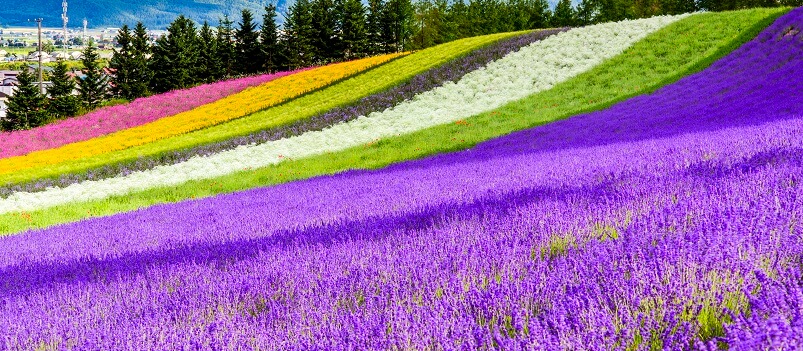
Book Now Promotion
Enjoy up to USD 600 off Tours from May 2024 onwards
No Promo Code required
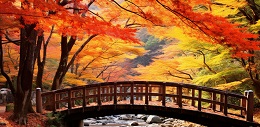
Tour Descriptions
- Dates & Quote
- Accommodations
Tour Departure and Prices 1) Price per person. 2) Airfare is not included.

Tour Includes
- - Travel Insurance
- - Optional Excursions
Travel Highlights
Important information, maximum group size.
The maximum number of participants will not exceed 26 people during your Japan tour. Your group may be joined with other tour groups during the tour. Please note that your bus and tour guide may be changed if other groups join the tour.
Single Supplement
Single travelers are required to pay a single supplement in order to guarantee single room accommodation.
We request one suitcase, one carry-on bag, and an overnight bag per person. The tote bag we provide can be used to hold any small merchandise/souvenirs purchased during your tour. When you check out, bring your luggage to the lobby and the bus driver will assist in loading it onto the bus. When you arrive at the next hotel, the bus driver will unload your luggage for you to bring to your room. Please note: The maximum weight of a checked in bag is typically 20 Kilograms or 44 Pounds. You will be traveling with your luggage except during the bullet train ride (if applicable).
Accommodation
All hotel rooms come with a full bathroom and room amenities free of charge unless stated otherwise.
Transportation
All motor coaches come equipped with air-conditioning, plenty of space, comfortable seats, and Wi-Fi.
International Flights
All of our tours begin in either Tokyo or Osaka/Kyoto. When beginning or ending a tour in Tokyo, please book flights to or from Narita International Airport or Haneda International Airport. For tours beginning or ending in Osaka/Kyoto, please book flights to or from Kansai International Airport or Itami Airport. We recommend you do not book your flights until the tour status changes from Book Now to Guaranteed Departure . You can also contact us if you would like for Japan Deluxe Tour's to arrange your flights.
Fitness & Shoes
Traveling and visiting sights in Japan includes a good amount of walking. To fully enjoy the tour, please be prepared to keep up with the pace of the group, climb stairs with no difficulty, and wear comfortable shoes for all day use.
Guests with tattoos may not be able to use the hot-springs or onsens while in Japan. We apologize if you are unable to enjoy this experience during your stay.
Meals & Dietary Requirements
Please notify us before your tour starts if you have any dietary restrictions or requirements we should be aware about. Japan Deluxe Tours can provide Vegetarian meals for guests, and we will do our best to cater to any serious allergies or dietary restrictions. We will not be able to substitute or change meals after your tour begins.
- B :Breakfast
Dining Experience
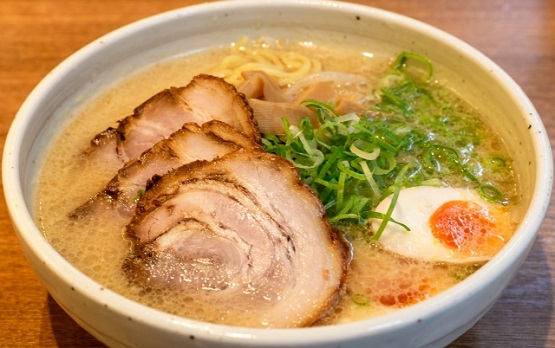
Ramen (JDT Recommends)
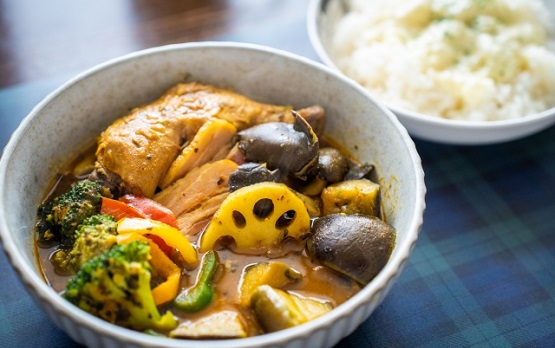
Soup Curry (JDT Recommend)
Cultural experience.

Otaru Music Box Museum

Otokoyama Sake Brewery Museum
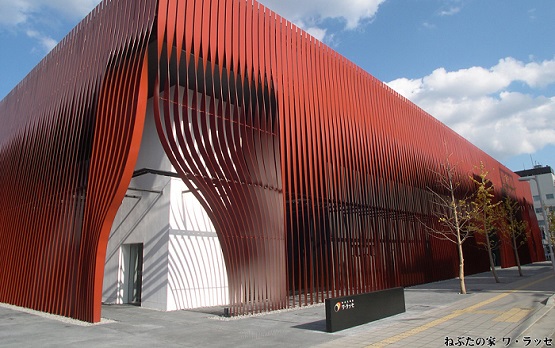
Nebuta Museum WA RASSE
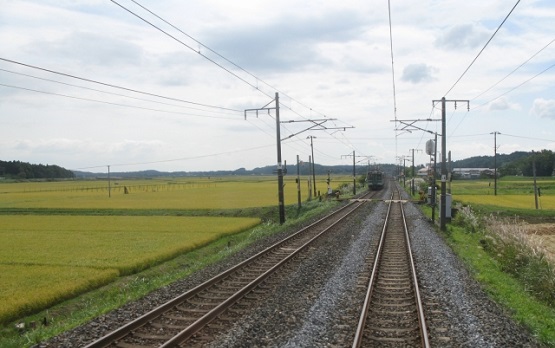
Chusonji Temple
Riding experience.
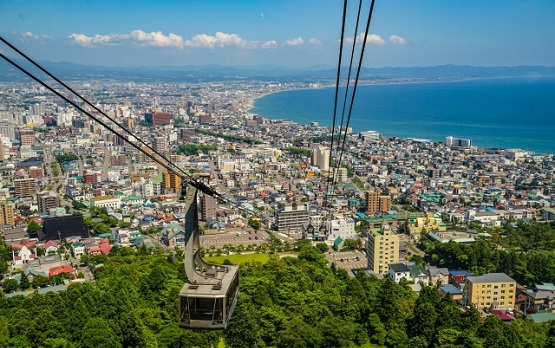
Hakodate Ropeway

Bullet Train
Customer reviews, book with confidence.
All small-group journeys are guaranteed to operate with just 6 guests.
- Detailed Itinerary
Reserve Your Air with Japan Deluxe Tours
Call for preferred rates through our partner.
Protect your investment.
Tour Standard
- All ground transportation
- All admission fees as listed
- Gratuities & Local Taxes
- Round-trip airport transfers
- licensed tour guide throughout
For a limited time, book your 2020, 2021 & 2022 group tour packages with no deposit required!!!

- Custom Groups Custom Groups Overview Student Groups MICE Special Interest Groups
- About Japan About Japan Destinations Attractions Must See & Do
- About Us About Us Contact us Testimonials Terms & Conditions Travel Agent Services Disclaimer Site Map
- News Press Releases Blog Media
- Your Trip Get Started How to make a reservation Travel Tip FAQs Inquiries
Last Name *
Charms of Northern Japan: Autumn Leaves Tour
- Japan Group Tours

Japan Deluxe Tours
Visit the must see sites of japan with group sizes ranging from 12 to 35 people..
These tours are great for first time visitors to Japan looking for comfortable accommodation with all entrance fees and most meals included. Our Japan Deluxe Tours are accomodated with professional tour guides, fluent in both Japanese and English, to ensure an educational and valuable visit. Air-conditoned, private coaches are also included, so you can enjoy a comfortable and hassle-free time in Japan. Our tours range from 7 to 21 days, to various regions of Japan.
Deluxe-Plus Small Group Tours
Experience the culture of japan at a slower pace with groups of 10 to 18 people. (smaller group departure available).
These tours combine enrichment, enjoyment, and education with time to truly absorb and appreciate your surroundings. Our Deluxe-Plus small group tours are created to cater to those who are interested in having a deeper understanding of Japan's culture. You will have the opportunity to participate in culturally rich activities and visit destinations only locals may know. Experience luxurious hotels and travel at a leisurely pace when you book a Deluxe-Plus small group tour.
Budget Group Tours
Our budget tours are designed for our guests who are on a limited budget..
Explore the must-see sights and enjoy the hassle-free trip to Japan at an affordable price. Our most cost-effective way to see the highlights of Japan while staying in budget-friendly accommodations. If you would like to have a quick stop to sample the must-see sights of Japan, or plan to explore Japan on your own but would like to take a short trip to learn about Japan before your self-guided journeys. These are the tours for you.
Active Small Group Tours
Travel japan more flexibly in groups of 6 to 13 people using public transportation..
Explore Japan off the beaten path via Japanese public transportation, walking, hiking, cycling and more. Take more time to enjoy local experiences and picturesque landscape. Our Active Small Group Tours combine the best of cultural destinations with off-the-beaten-path via Japanese public transportation, Discover the country of Japan the way the locals do and see Japan from a different angle. A focus on getting away from the crowds and into the real Japan, see the diversity of Japan’s countryside unfold before your eyes.
Group Tour | Deluxe Tour Code: GTE235435 10 reviews
Single Supplement:
The price is per person, based on twin or triple room occupancy
For single travelers, this tour has a single supplement. This guarantees a single room throughout the tour
Prices are excluding international flights

Single Room
Single room types are rooms for single room occupants. One person will be occupying the hotel room throughout the tour.

Twin room types are rooms set for two people who will occupy one room, but will have two separate beds.

Double Room
A double room is a room that has one bed for two people to share.

Triple Room
A triple room is one room where three people may share the same room. It has three separate beds.

Japanese Style Room
A Japanese-style room traditionally does not have a western-style bed, it is a tatami floor room with futon bedding. However, if you prefer a western-style bed, you may request one though we cannot guarantee it.
Please note: If you would like to request neighboring rooms next to your traveling companions, you and your traveling companions must have the same room types in order to be next to each other. For example, if you have requested a double room, but your traveling companions have requested a twin, or triple room, then neighboring rooms cannot be accommodated. However, if both you and your traveling companions match in room type, then neighboring rooms will likely be arranged for your convenience.
During the peak of the autumn season in Japan, the leaves of the maple trees and ginkgo trees turn red and yellow in concert presenting you with beautiful scenery at every turn. Hokkaido and Tohoku, the northeast region of Japan is considered the most popular autumn leaves viewing destination for the locals. For those interested in seeing this country as its natives do, a fall foliage trip to Hokkaido and Tohoku is in order. This t... View More
During the peak of the autumn season in Japan, the leaves of the maple trees and ginkgo trees turn red and yellow in concert presenting you with beautiful scenery at every turn. Hokkaido and Tohoku, the northeast region of Japan is considered the most popular autumn leaves viewing destination for the locals. For those interested in seeing this country as its natives do, a fall foliage trip to Hokkaido and Tohoku is in order. This tour begins in Hokkaido, where we will visit Otaru, Sapporo, Shiraoi, Noboribetsu, Lake Toya and Hakodate. Then we proceed to Aomori by crossing the Tsugaru Channel between the islands of Hokkaido and Honshu, via the undersea train tunnel. On the island of Honshu, we will visit the Nebuta Warasse, a well done museum about the Nebuta Matsuri in Aomori. Then proceed to Lake Towada, Japan's third deepest lake. A volcanic crater lake 44km in circumference and nature walk along the creek through Oirase Gorge. Then we head to Morioka and Hiraizumi for a cultural interlude and stroll around the magnificent Japanese Cedar Trees and photogenic buildings at Chusonji Temple. After that we will visit Matsushima, a picturesque bay full of pine tree covered small islands, where we explore ancient caves once frequented by meditating monks. Matsushima is famous for being one of the Three Most Beautiful Natural Sights in Japan. On the last day of the tour allow yourself to also explore the wonderfully ornate temples and shrines which have been designated as World Heritage sites in Nikko. We then proceed to Kegon Waterfall situated in Lake Chuzenji, it is one of Japan's three most beautiful waterfalls. Our tour will ends from there, we will head to Tokyo for a night stay before your return flight on the following day.
Tour Information
Experiences.
- Accommodation
Dates & Price
Please Note: All prices are per person, based on twin (double on request) or triple occupancy. International flights are not included on our tours - this allows you the flexibility to choose your own departure and get the best value for your money! We can arrange international flights for US customers if needed, please ask for details.
We require US$200 deposit per person to hold the space at time of booking and the final payment is due 2 month prior to departure.
What's included
- 6 nights Western style and 2 nights Japanese style accommodation
- Meet and greet upon arrival at Sapporo New Chitose Airport
- Airport transfers on arrival and departure
- Private coach transfers between destinations in Japan
- Comprehensive escorted with AJT professional English speaking tour guide
- Breakfast everyday
- 4 lunches and 4 dinners
Admission fees and activities
- All entry fees to sites, activities listed in the itinerary
What's NOT included
- International Airfares
- Meals that are not included in the itinerary
- Travel Insurance
- Alcoholic beverages and soft drinks
- Personal expenses such as telephone and laundry bills
Additional Information
Travel by private coach between destinations, hassle free baggage handling.
Arrival Departure Airports
- For arrivals at New Chitose Airport (CTS), this tour starts in Sapporo and ends in Tokyo, with departures at Narita Airport (NRT).
- If you will be flying out from Haneda Airport (HND) instead of Narita Airport (NRT) on the last day, airport transfer is not included. We will provide with full instructions to get to the hotel in advance, or we can arrange shared shuttle service for you at US$60.00 per person per way.
Meal Requests
Vegetarian or special meals can be arranged.
Meet and Greet
Please note that the meet and greet and airport transfer to the first hotel is ONLY available on the first day of the tour after 11 AM. If you plan to stay extra nights before the start of the tour, we will provide full instructions in advance for you to transfer to your hotel on your own.
Itinerary In Brief
- Day1 Arrive in Sapporo
- Day2 Otaru - Sapporo
- Day3 Sapporo - Shiraoi - Noboribetsu
- Day4 Lake Toya - Hakodate
- Day5 Seikan Undersea Tunnel - Aomori - Towada
- Day6 Morioka - Hiraizumi
- Day7 Matsushima
- Day8 Nikko
- Day9 Tour ends
Tour schedule and prices subject to change without notice
Detailed itinerary, sapporo new chitose airport.
Welcome to Sapporo! You will be met at the arrival gate by an AJT representative holding an "All Japan Tours" sign.
ANA Crowne Plaza Hotel Chitose or similar class
NOTE 1: The meet and greet and airport transfer to the first hotel is ONLY available on the first day of the tour after 11 AM. If you plan to stay extra nights before the start of the tour, we will provide full instructions in advance for you to transfer to your hotel on your own.
Otaru (Otaru Canal / Sakaimachi Street - Kitaichi Garasukan - Otaru Music Box Museum), Sapporo (Clock Tower / Odori Park / Susukino)
In the morning we will travel to Otaru, renowned for its canals and glassblowing in Kitaichi Garasukan. During the first half of the 20th century, the Otaru Canal was a vital part of the city's busy harbor. The canal allowed large vessels to be unloaded onto smaller ones, then transported to local warehouses. Although the canal became obsolete when modern dock facilities allowed for the direct unloading of large vessels, the canal remains an integral part of the city's history and culture. As part of a citizen's movement in the 1980s, the canal was beautifully restored and former warehouses have been transformed into cafes, restaurants, museums, and shops. Next, we will visit glass workshops and Music Box Museum in Sakaimachi Street. In the afternoon, we will visit Sapporo city. The tour includes a visit to the Sapporo Clock Tower and Odori Park, where you can stroll along the promenade. The next stop is Susukino, Hokkaido's largest entertainment district. In the evening is for you to enjoy your free time.
ANA Crowne Plaza Sapporo or similar class
Sapporo (historical village of hokkaido / sapporo beer museum), shiraoi (upopoy national ainu museum), noboribetsu (jigokudani).
In the morning our tour of Sapporo continues with a visit to the Historical Village of Hokkaido, you can view architecture from the Meiji and Taisho periods when Japan experienced rapid expansion. From there we will visit the Sapporo Beer Museum, dedicated to all things beer. Sapporo is Japan's oldest brewery and exports its beer throughout the world. Then, we will visit the Upopoy National Ainu Museum, a newer museum facility that celebrates the cultural heritage of the native Ainu people, including exhibits on Ainu language, culture, history, crafts, music, and dance. In the afternoon, we will stop at Hokkaido's most famous hot spring resort, Noboribetsu Onsen. Our group will spend some time in Jigokudani, or "Hell's Valley", the main source of the town's hot spring water. Visitors can experience the area's hot steam vents, picturesque walking trails, and a sulfurous pond known as Oyunuma. Tonight, we will stay in a traditional Japanese style hotel in Noboribetsu, where you can unwind in a soothing hot spring (onsen) bath.
Breakfast / Lunch / Dinner
Noboribetsu manseikaku or similar class, lake toya (usuzan ropeway), hakodate (fort goryokaku / mt hakodate ropeway).
After breakfast, we will head to Lake Toya and take the Usuzan Ropeway to the observation deck and have a panoramic view of Lake Toya and neighboring Showa Shinzan. From Lake Toya, we head to Hakodate. Hakodate was one of the first Treaty Ports in Japan which opened up to world trade in 1854, so there are many preserved buildings around the area from that time. We will continue our tour to visit Goryokaku Pentagonal Fort, built in 1868 and the only structure of its kind in Japan. The surrounding moat and defensive grounds are now a city park and gardens. In the evening, we will take a ropeway ride up to Mt Hakodate from where we can look down upon the twinkling lights that surround Hakodate Bay. The view from the mountain are spectacular and it's listed as Japan's three best night view alongside with the view from Nagasaki's Mount Inasa and Kobe's Mount Rokko.
Breakfast / Lunch
Four points by sheraton hakodate or similar class, undersea train from hakodate to aomori (nebuta warasse), towada (lake towada / oirase gorge).
Today we will travel across the Tsugaru Channel between the islands of Hokkaido and Honshu by train via the undersea train tunnel, before arriving to Aomori. We will visit the Nebuta Warasse, a well done museum about the Nebuta Matsuri in Aomori. Then we will visit Japan's third deepest lake - Lake Towada, a volcanic crater lake 44 km in circumference. We will go for a nature walk along the creek through Oirase Gorge. Over a dozen waterfalls cascade down into the stream all along its length from the walls of the gorge.The stream flows along the floor of the Oirase Gorge, winding among trees which a lush green in spring and summer and turn brilliant shades of red, yellow and orange from late October through early November.
Breakfast / Dinner
Towadako lake view hotel or similar class, morioka (morioka castle ruins / wanko soba), hiraizumi (chusonji temple).
In the morning we proceed to Morioka for a visit to the Morioka Castle Ruins, considered one of the most popular autumn leaves viewing spots in Tohoku area. Then, you will have the chance to try one of the Morioka’s most famous eating experiences: Wanko Soba. This is not so much a dish as it is an eating challenge. Many locals get competitive and strive to eat over 100 bowls of soba in one sitting! But don’t worry, there’s no shame in sitting back and enjoying the flavor. After lunch, visit to Hiraizumi for a cultural interlude and to stroll around the magnificent Japanese Cedar Trees and photogenic buildings at Chusonji Temple. Hiraizumi is now listed as a World Heritage site and is home to Konjiki-do (Golden Hall) within Chusonji Temple, which attempts to re-create an ideal Buddhism world. As such, it is host to an ensemble of exquisite "culture of gold" remnants from the brand of Buddhism that developed independently in the Tohoku region far away from the cultural center of Kyoto in the late Heian era of the 11th century. UNESCO has recognized this area as being a globally rare example of local culture to manifest on such a high level in the transitional period from the ancient era to the medieval period. Tonight we will stay in Matsushima where we will have dinner in the hotel.
Matsushima Taikanso or similar class
Matsushima (matsushima cruise / matsushima fish market / godaido / zuiganji temple).
After breakfast at the hotel, you will be visiting Matsushima, a picturesque bay full of small islands covered in pine trees where we will explore ancient caves once frequented by meditating monks. Matsushima is famous for being one of Japan's three most scenic views alongside Miyajima and Amanohashidate. The bay is dotted by over 200 small islands covered by pine trees. We will enjoy the best way to view the islands by boarding one of the sightseeing boats. After your cruise, we will stop by the Matsushima Fish Market, with fresh seafood of the highest quality. Be sure to visit the restaurants to try the famous Miyagi Oysters, known for their creamy and slightly nutty flavor. Many of the restaurants even offer all-you-can-eat oysters! We will then visit Godaido which overlooks the bay and has become a symbol of Matsushima. Godaido was enshrined by the same priest who founded the nearby Zuiganji temple – one of Tohoku’s most famous Zen temples – Date Masamune. At Zuiganji, you will be able to see golden sliding doors known as fusuma featured inside the temple.
Hotel Floracion Nasu or similar class
Nikko (toshogu shrine / futarasan-shrine / rinnoji temple / kegon waterfall / lake chuzenji).
After a Japanese breakfast at the ryokan, we will start a tour of Nikko. The shrines and temples of Nikko, together with their natural surroundings, have for centuries been closely associated with the history of the Tokugawa Shoguns. We will visit the lavishly decorated Toshogu Shrine set in a grove of magnificent ancient Japanese cedars. Then, visit Futarasan-Shrine and the Rinnoji complex of Buddhist temples founded in 766 BC by the Buddhist hermit Shoto. Next is a visit to the Lake Chuzenji and Kegon Waterfall. The almost 100 meter tall Kegon Waterfall is the most famous of Nikko's many beautiful waterfalls. In fact, it is even ranked as one of Japan's three most beautiful falls, along with Nachi Waterfall in Wakayama Prefecture and Fukuroda Waterfall in Ibaraki Prefecture. In the evening, we will proceed to Tokyo for a night stay before your return flight on the next day.
Hotel Mystays Premier Narita or similar class Hotel Metropolitan Tokyo Ikebukuro or similar class (NOTE 2 & 3)
NOTE 2: If you wish to stay in the center of Tokyo for the last night instead of Hotel Mystays Premier Narita, we can arrange for you to stay at Hotel Metropolitan Tokyo Ikebukuro (or similar class). In this case, airport transfer is not included. We will provide full instructions for you to get to the airport in advance, or we can arrange shared shuttle service for you at US$65.00 per person per way.
NOTE 3: If you will be flying out from Haneda Airport (HND) instead of Narita Airport (NRT), we can arrange for you to stay at Hotel Metropolitan Tokyo Ikebukuro (or similar class) instead of Hotel Mystays Premier Narita. In this case, airport transfer is not include. We will provide full instructions for you to get to the airport in advance, or we can arrange shared shuttle service for you at US$60.00 per person per way.
After breakfast, our tour officially ends. Checkout time is 11 am and Narita Airport can be reached by hotel shuttle bus.
NOTE 4: If you would like to stay longer in Japan, please contact us to book hotel accommodations.
Otaru is a small harbor city in Hokkaido near Sapporo. There are various activities in Otaru, including food (especially seafood), sightseeing and shopping. There are many hills, including the very steep slope called Jigoku-Zaka, thus is a popular location for skiing and other sports. Otaru beer is also well known in Hokkaido, places like the Otaru Soko No. 1 Brewery is a popular place for beer lovers. The Otaru Canal is a very popular place for tourist to gather. The Otaru Canal is also one of the locations of the Snow Light Path Festival held every February, where the area is decorated in lights and small snow statues. Tourist can visit the various glass workshops and shop for famous Otaru glassware or even make their glassware. The Music Box Museum is one of the most popular destinations in Otaru, guests can explore the sea of music boxes in this Museum.

Beautiful canal lined by old warehouses.
The Otaru Canal was employed by businesses to transport their merchandise to warehouses with smaller ships since the bigger ships could not directly unload their goods to their destinations. However, eventually there was no use for the smaller vessels when the facilities were modernized, making the use of canals less necessary. Now the area is a tourist attraction, during the day people take leisurely walks about the scenic route where there are museums, restaurants, and shops. Furthermore, Otaru Canal is the main site of the Snow Light Path Festival which is celebrated annually during February as a winter festival.

Otaru's famous blown glass factory.
The glass made in Otaru is refined and is made in many workshops that also offer hands-on experience for guests who take interest in making their own glassware for a fee. Otaru is located in the prefecture of Hokkaido, neighboring the city of Sapporo. Aside from glass workshops, there are also many cafés, restaurants, and other shops that also allow guests to admire and purchase their artistic glass.

A unique museum about Music Box.
Among the many shops found on Sakaimichi Street is the Otaru Music Box Museum. It not only displays various objects, but also sells a wide range of music boxes, some of which are more elaborate than others; some move and others light up along with their melody. Midst the various types of music boxes are some made from glass, wood, or even traditional Japanese fabric, some are fashioned after sushi or Western-themed concepts. These music boxes also carry different songs according to a collection that the establishment has at their disposable.
Located in Hokkaido Prefecture, Sapporo was once a dense forest with wildlife that included bears, deer, and wolves until its construction started in 1871. A man named Shima Yoshitake began the city’s development which eventually led to the current North American form it has as a grid-like system layout. Consequently, the northern and southern parts of the city are divided by the main boulevard called O-dori, which runs through the center of the city. Sapporo is known mostly for its beer, beer museum, dairy products, and its annual snow festival every February. One of the oldest standing structures established is the Sapporo Clock Tower, introduced by the North Americans, is now employed as a history museum. Dr. William Clark, a scholar from America, became one of the founders that established educational policies at the Sapporo Agricultural College. Later, this same college became the University of Hokkaido.

The symbol of Sapporo.
The Sapporo Clock Tower is a museum and a symbol of Sapporo’s city. Once used as a drill house for physical education and military training for the students in the Agricultural College, it now holds small displays of the origins of Sapporo’s development and local history. The clock itself was bought in 1881 from Boston, Massachusetts. Its appearance now consists of red roofs and white walls that stand out to people passing by this historical monument. It was once the tallest building when it was constructed, but is now overshadowed by the taller business buildings around it.

Pleasant public park in the city center.
Located in the center of Sapporo, running from east to west is Odori Park. It was supposed to be the main street separating Sapporo north from south as a fire break, but now represents the area holding the annual Snow Festival events. It has 92 types of trees and many flowerbeds, enough to attract tourists and locals for a relaxing time in its vicinity. For guests wishing for good views and photographs, there is the Sapporo TV Tower’s observation deck available to the public for a fee. The deck is especially popular during the Snow Festival’s events held every February.

Sapporo's entertainment district.
Nightlife plans for guests in Sapporo might include activities like hitting the pachinko machines, nightclubs, bars, karaoke, and restaurants. If that is the case, it will probably lead them to Sapporo’s biggest entertainment neighborhood, Susukino, which is similar to Shinjuku’s Kabukicho red light district. As such, it should not come as a surprise that expenses might run a little higher here than in other parts of the city. Susukino is one of the sites that hosts the annual Snow Festival held every February in Sapporo. Genghis Khan nabe, or Susukino’s Ramen Yokocho are local foods recommended to all.

Open air museum about Hokkaido.
The Historic Village of Hokkaido is a restored area based of what remained from the Meiji era and Taisho era. It is now an open-air museum with shops, households, and horse-drawn trams that run through the village. It displays various buildings and shops that were once constructed during Hokkaido’s growing development, including 60 different buildings from all over this northern island. It is also a place where many who lost their positions in the Edo Shogunate went to start their lives anew, especially samurai. It is located in the suburbs of Sapporo. It consists residential, mountainous, fishing, and agricultural zones.

Museum of the Sapporo Beer Breweries.
Sapporo is considered the birthplace of beer in Japan since it started manufacturing beer in the Meiji Period. The building for the Sapporo Beer Museum was originally used as the Sapporo Sugar Company around 1890. Then, it was employed as a location for the cleaning process of barley leaves that were used to make beer in 1965. Finally, it was made into a brewery and, then, the museum that now has two neighboring beer gardens. There are tasting lounges and tours offered at the Sapporo Beer Museum for a fee, though there are few signs containing English for foreign guests.
Shiraoi is a small town in Hokkaido Prefecture. Though officially established in the mid-1800s by the lords of Sendai during the feudal era, this coastal town’s history goes back even further as a former settlement of the native Ainu. In recognition of this dual heritage, the town has constructed the Ainu Museum, which celebrates the language, history, culture, and legacy of the Ainu, through various exhibits and demonstrations for nearly every aspect of daily Ainu life. The museum apparently has collected over five thousand various folk items related to the Ainu people. Shiraoi is also noted for its beautiful nature, especially Lake Kuttara, which, according to Japan’s Ministry of the Environment, is one of Japan’s clearest lakes. Shiraoi wagyu beef is a famous local product, with local farms of black Japanese cattle scattered around the nearby countryside.

A replacement facility for the old “Porotokan” Ainu Museum, this newer exhibit space works to further expand visitors’ understanding of the Ainu People.
Initially opened in 1990, the Porotokan Ainu Museum was dedicated to cataloging, preserving, and teaching the history and culture of the original native peoples of Hokkaido: the Ainu people. In 2018, however, the Porotokan closed down in order to clear the way for the new and expanded National Ainu Museum. This newer museum’s philosophy is based on the ideals of multicultural coexistence and presents various exhibits divided into six separate Ainu-centered themes: history, language, lifestyle, livelihood, worldview, and trade with other peoples. The museum is one building in a larger facility called Upopoy (“singing in a large group” in Ainu language). This facility includes, in addition to the museum, a National Park near Lake Poroto, and a Memorial Site for deceased Ainu.
Noboribetsu is located in southwestern Hokkaido along the southern coast of Hokkaido. Noboribestu is part of the Shikotsu-Toya National Park, which is located in southwestern Hokkaido. This place is known throughout Hokkaido and hosts Hokkaido’s best-known hot spring resort. Surrounding the area is a forest and if visitors wish to, they can travel to Shikotsu-Toya National Park. There are numerous outdoor activities within the park which include hiking, hot springs, camping, boat tours on the lakes, canoeing, and many other activities. Noboribetsu is also home to the famous Noboribestu Jigokudani. The Jigokudani (or known as “Hell Valley”) is just above the town, this valley is the number one destination for nature lovers making a visit to Noboribestu.

Hell valley - displaying volcanic activities.
There are many hot springs in Japan, one of which is located in Hokkaido with the name of Jigokudani, meaning “Hell Valley.” The very characteristics of the valley itself justify the name given to the location. Other physical features of the valley include its crater foundation that is more than a kilometer and half all around.
Lake Toya is located southwest of Sapporo, at the center of the lake are four islands called Nakajima. On the island called O-shima, which is the largest of the four islands, is the Toyako Forest Museum. Kannon-jima used to enshrine a sculpture of Kannon, Goddess of Mercy, from the Edo Period, but now there is just the temple in its place. Benten-jima is connected to Kannon-jima by a sandbank called Toppmoshiri. Benzaiten, Goddess of everything that flows like music, time, water, speech, rivers and knowledge, is enshrined on the island. Manju-jima is off limits to casual visitors because it is known for having many vipers thus it is called “Snake Island.” Another thing you can do around Lake Toya is rent out bicycles and pass by sculptures surrounding the lake shore.

A young volcano standing next to Usuzan.
Showa Shinzan Mountain is known as one of the youngest mountains in Japan. The young mountain rose from what once was a field of wheat in the years 1943 until 1945. Before it stopped growing in 1945, a nearby postmaster recorded the frequent earthquakes leading up to Showa Shinzan’s current form. Eventually, his records were turned in and are now placed on display for visitors to read at the Mimatsu Memorial Museum. Visitors planning on observing Showa Shinzan in a different angle can ride the Usuzan Ropeway and have a bird’s eye view of the young mountain.

A volcano which has erupted four times in the past 100 years.
Mount Usu, Japan’s most active volcano. The unusual thing with Mount Usu is that it does not spew out tons of lava, but instead forms new landmarks. The rise of volatile magma creates the lava domes as well as the crypto domes. There are several walking trails that can be taken to see the destruction left behind. There are also wrecked houses, confection factory, telephone poles, cars and other buildings that remain there to educate individuals on the destructive power of volcanoes. The trail then leads to the craters where you can still see steam emitting from the fissures.
Hakodate is a port city and is the third largest city in Hokkaido. It was one of the first ports to be open to foreign trade and the influences of other countries can be shown in the Motomachi area of the city. The architecture still survives even after the 1934 Great Hakodate Fire, which destroyed over 11,000 buildings and World War II bombings. The night view from Mount Hakodate is one of the top tourist spots people go to and is the symbol of the city. Since Hakodate is a port town there is a place called the morning market where you can buy a plethora of fresh seafood and other delectable items. Hakodate is a city of cultural importance that not only reflects the past, but possibilities of the future. As the gateway to Hokkaido it would be a great place to stop and visit all the sites.

Japan's first Western style fortress.
The Goryokaku Fort was first built over a hundred years ago, this established structure held the magistrate’s office where Hokkaido was administered and was the first western-styled stronghold of its kind in Japan. The fort was not always affiliated to military, once it lost its importance for military self-defense, it was employed as a park in 1910. This area is one of the best places to see cherry blossoms in early May because it has more than a thousand trees blooming there each year. An observation tower is also available for public use to view the grounds from above.

One of the Japan's three best night views.
Known as “Lying Cow” for its shape, Mount Hakodate offers one of the best views from its summit some 334 meters high, overlooking both sea and land. The views that can be seen from Mount Hakodate include the peninsulas located south from the summit, the Tsugaru and Shimokita Peninsulas belonging to Aomori Prefecture. In addition to the peninsular views, the night time and daytime views in either direction are popular among the tourists, so tourists need only worry about the observation deck and ropeway operational times when visiting Mount Hakodate.
Aomori is the capital city of the Aomori Prefecture. Before the Seikan Tunnel opened, the main method of traveling to Hokkaido was by ferry departing from Aomori. There is plenty to do in this city, from museums to aquariums, and to the famous Nebuta Festival held every August. The Nebuta Festival is a summer festival held every year at the beginning of August, this festival features large lantern floats, music, drums, and dancers. If the loud festival crowds do not appeal to visitors, then they can visit the many museums like the Aomori Museum of Art or the Aomori Asamushi Aquarium. There is plenty of places to scope out food like the Furukawa Fish Market or Auga Fish Market for the fresh seafood.

The longest railroad tunnel in the world that goes under water.
The Seikan Undersea Tunnel is one of the world’s longest and deepest undersea tunnel in the world. Originally opened for operation in 1988, this long undersea tunnel connects Hokkaido to the rest of mainland Japan by train. Prior to the tunnel, ferries were the most used mode of transportation to travel to Hokkaido.

A well done museum about the Nebuta Matsuri.
Nebuta Wa Rasse is a museum dedicated to the history of the Nebuta Matsuri and allows visitors to see the floats all year round. The museum will displays approximately 300 years of Nebuta festivities on display followed by pictures of floats and the participants of the celebrations. The museum building itself holds floats where visitors can view the details of the huge structures that were used in previous parades, though they change them out every year.
Towada is a city located in the Aomori Prefecture. The local attractions that many visitors come to experience include the Towada-Hachimantai National Park, the Oirase River, or the Towada Art Center. This area is known for its beautiful autumn scenery and colors. Tourist can visit the beautiful Oirase Stream which is ranked as one of the top 100 Soundscapes of Japan. The beautiful Lake Towada is a popular destination and the Matsumi Falls is ranked as one of the top 100 Waterfalls in Japan.

Barely developed caldera lake.
Lake Towada is a large lake located in Towada in the Aomori Prefecture. During autumn, Lake Towada is a popular destination for tourist to experience the beautiful colors of autumn in Japan. Attractions include the Towada Shrine, a small museum of nature, and the sightseeing boats. The ferry cruises on Lake Towada gives visitors a up close view of the beautiful lake.

A picturesque mountain stream.
The Oirase Mountain Stream is located in Towada in the Aomori Prefecture. Visitors can walk the trail that runs along the stream, the trail is about 9 kilometers long (about 5.5 miles) and takes about two to three hours to complete one way. This stream features over a dozen of beautiful waterfalls that can be viewed from the trail, and is a popular destination for nature lovers, especially during the autumn season.
Morioka is the capital of Iwate Prefecture and is known for their various noodle dishes like Wanko Soba. In the background of the city is the active volcano Mount Iwate. One of the best places to see the mountain is from Kaiunbashi Bridge in Morioka. Mount Iwate is considered one of the 100 Most Beautiful Mountains in Japan. Morioka is also famous for the different types of noodles they have like the Wanko Soba, Reimen, and Jajamen.

One of the Tohoku's most popular autumn leaves viewing spots (National Historic Site).
In 1906, the Morioka Castle ruins were open to the public as Iwate Park. The Morioka Castle Site Park is now a popular spot for the cherry blossom and autumn seasons. At its centennial celebration the name of the site changed from Iwate Park to Morioka Castle Site Park to commemorate its history.

Wanko-soba (buckwheat noodles) is the local cuisine of Iwate and is eaten in a very unique and entertaining manner.
Wanko-soba (buckwheat noodles) is the local cuisine of Iwate and is eaten in a very unique and entertaining manner. As soon as you finish the first bowlful, a server flings a fresh ball of noodles into the empty bowl with a wild cry and keeps on filling it until you have had enough! Only about a mouthful of noodles is served each time, so if you are an adult male you should be able to eat about 50-60 bowls. Some say that this tradition stems from when landowners hospitably served their guests until they were full. It is now known throughout Japan as a specialty of Morioka and Hanamaki. The trick to eating a lot is to slurp it down without chewing. National championships are held every year in Morioka and Hanamaki, so if you are confident of your appetite, why not take up the challenge?
Hiraizumi was once the home of the powerful Northern Fujiwara Clan and rivaled Kyoto as a city during the Heian Period. In 2011 Hiraizumi was inscribed as one of Japan’s World Heritage sites. Because of their representation of the Buddhist teachings of Amida, Hiraizumi is a reflection of a world centered on peace and harmony. Hiraizumi is located within the Iwate Prefecture of the northeastern region of Tohoku. It was once part of the ancient Mutsu Province. It was also the place where the Northern Fujiwara Branch thrived for nearly 100 years. For those 100 years Hiraizumi was in a Golden age of economic and political grandeur. Also it served as the capital of Oshu. Visitors can expect to receive a great cultural experience from the many temples and learn some history from this historical site.

Hiraizumi's most famous temple (UNESCO World Heritage Site).
Iwate Prefecture’s Chusonji Temple was built on the Kanzan Hill, which is why it is also commonly referred to as the Kanzan Chusonji Temple. The grounds originally had many buildings created like pagodas, temples, and halls, however, only two of the buildings remain standing. One of these structures is called Kyozo Hall, which holds Buddhist scripture. The second building is called Konjikido, which is covered in gold and is often compared to the famous golden pavilion located in Kyoto.
Matsushima is famous for having one of the most scenic views in Japan and is located half an hour away from Sendai. Matsushima is located half an hour away from Sendai the largest city in Miyagi Prefecture. It is also a Prefectural National Park on top of being a city. Matsushima has 260 small and large islands located 10 kilometers away from the city, which are covered by pine trees. There are a couple of islands that can be reached by a bridge and is open to the public. Near the pier of Matsushima is the Godaido, a small temple hall, which has become the symbol of the town. Matsushima Bay is one of the top three most scenic places within all of Japan.

One of Japan's three most scenic views.
Matsushima Bay has been known as one of the top most scenic places in all of Japan for many years. Without a doubt the most popular and best way to see the bay is by boat cruises. There are many cruises available for visitors to ride on to experience one of Japan’s best scenic views.

Visit a popular indoor fish market with stalls selling top quality seafood and with restaurants offering all-you-can-eat Miyagi Oysters.
The Matsushima Fish Market is a popular location for guests to enjoy local seafood specialties and shop for all of their seafood needs. Run by a captain who owns 7 large tuna fishing boats, visitors will find several kinds of fresh seafood being sold. As an indoor market, guests will find several stalls selling their products on the first floor, whether it be ingredients to cook with or live fish. Another popular aspect of the market, and Matsushima in general, are the Miyagi Oysters, known for their creamy and slightly nutty flavor. You will also find food vendors at the market, which serve these Miyagi Oysters as an all-you-can-eat treat for a low price. Because the water near Matsushima is rich with nutrients, their seafood is considered to be one of the highest quality in Japan. The market also holds tuna cutting shows every month as well as other events. Be sure to give the fresh tuna or the Miyagi Oysters a try, whether you prefer them raw, steamed, or fried, there is something for everyone. Even if you're not a fan of seafood, there are several other foods offered at the market including rice bowls, sushi, and even ramen.

Small temple hall and symbol of Matsushima.
Godaido serves as a symbol of Matsushima since it is a on an islet of the bay in Miyagi Prefecture, which is known for its cruises and natural scenery. Inside the temple itself are five statues that are presented to the public once every 33 years. The small island is connected a short, red bridge that gives the scenery a particularly attractive elegance to the temple’s surrounding environment. Admission to this temple is free, however it does close in the evenings.

One of Tohoku's most famous Zen temples.
One of the most distinguished temples of the Tohoku region is the Zuiganji Temple. The temple is so notable that it has been received as a national treasure in Japan; particularly special places are the main hall with golden sliding doors, the Kuri of the main hall, the “Gate of Honor”, and the “Inner gates” are some examples. Visitors going to the temple can also visit the museum called Seiryuden, also called the Zuiganji Art Museum, where many artifacts and some temple treasures are displayed, in particular a wooden statue of an armored Date Masamune.
Nikko is a city that developed around the temples that were established in the 8th century. The shrines and temples of Nikko were inscribed as a World Heritage site in 1999 for its breathtaking sceneries, magnificent craftsmanship and cultural impact. The 103 structures and nature surrounding area of Nikko is a World Heritage Site, however the most famous are the Toshogu Shrine, Futarasan Shrine and Rinnoji Temple. The Toshogu Shrine is home to the famous carving of the “See no Evil, Hear no Evil and Speak no Evil” monkeys. The Futarasan Shrine was the first Shinto shrine built and is comprised of smaller reliquaries that embody the fusion of man with nature much like the city Nikko itself. The Rinnoji Temple, which was built in 766, provided solitude for monks because of its location deep in the mountains.

Lavish mausoleum of Tokugawa Ieyasu (UNESCO World Heritage Site).
Nikko is famous for the Toshogu Shrine, which holds the mausoleum of Tokugawa Ieyasu, the famous founder of the Tokugawa Shogunate that ruled for over 200 years (1603-1868). The original resting place for Tokugawa Ieyasu was much simpler in design that it is today. The construction was carried out in accordance to his father’s will by Ieyasu’s son, Hidetaba Tokugawa, in 1617. However, it was later expanded to its modern size by Ieyasu’s grandson, Tokugawa Iemitsu. The dozens of buildings were built with grandiose designs, unique with its brightly- colored carvings of animals and various types of images.

Dedicated to Nikko's sacred mountains (UNESCO World Heritage Site).
Futarasan Shrine is situated next to Toshogu Shrine and is dedicated to the three deities of Nikko’s sacred mountains. The shrine is dedicated to the three deities of the sacred mountains in Nikko. This refers to Mount Nantai, Mount Nyoho and Mount Taro, which are known as the most sacred mountains in the area. When entering the Futarasan Shrine area there is a place to the left of the haiden (offering hall) which can only be accessed by paying a nominal fee. Inside the paid area is a small garden, spring, old sacred trees and a couple of more halls.

Nikko's most important temple (UNESCO World Heritage Site).
Rinnoji Temple is the family temple of the Date Clan, who ruled Sendai for many generations until the Meiji Restoration. The outer appearance of the entrance is not too spectacular, which is odd since Date Masamune favored the Momoyama style. Appearances can be deceiving because once you pass the main hall you will be greeted by Japanese style garden and three story pagoda. Visitors can stroll around the garden taking in the quiet serenity and sit on a few of the benches to relax. The trees, flowers, and plants have been meticulously maintained and the koi adds to the picturesque scenery.

One of Japan's three most beautiful falls.
Kegon Waterfall is listed as one of the three most beautiful falls in Japan along with Nachi Waterfall in Wakayama Prefecture and Fukuroda Waterfall in Ibaraki Prefecture. It is located in Nikko and is the most famous waterfall out of the many in the area. Kegon Waterfall is about 100 meters high and is the only exit for the waters of Lake Chuzenji to exit from. The best time to see the waterfall would be in the autumn season. The surrounding foliage of Kegon Waterfall painted in fall hues is a sight not to miss.

Lake at the foot of Mount Nantai.
Lake Chuzenji is located in the mountains near Nikko at the foot of Mount Nantai and is beautiful around the autumn season. On the eastern side of the lake is a small hot spring town called Chuzenjiko Onsen. From mid to late October the nature around Lake Chuzenji is very attractive. It is around this time that the autumn colors of the trees reach their peak. Since Lake Chuzenji is a scenic body of water there is a hiking trail that goes around the entire area. It is also possible to enjoy the scenery by going on a sightseeing boat that departs from the onsen town.
Accommodations

Chitose (Day 1)
Western Style Accommodation
Located just a five minute walk from JR Chitoise station and a 10 minute drive from the airport, the hotel offers guests comfort and convenience. The in- house restaurant serves up traditional Japanese dishes. However, if you are in the mood for other cuisines, just step out of the hotel and you will find numerous restaurants and bars where you can indulge with your favorite cuisine or drink.

Sapporo (Day 2)
This modern luxury hotel and resort, situated in the northernmost major city of Japan, is a landmark for opulence and leisure. Guests will enjoy a location that is just a short walk from the Sapporo Subway Station and an additional six minutes from the JR Sapporo Station. ANA Crowne Plaza Sapporo is an ideal choice for guests who want a central location close to public transport links and a vast selection of on- site facilities as well as first class professional service.

Noboribetsu Onsen (Day 3)
Japanese Style Accommodation
Noboribetsu Manseikaku is standing at the entrance of Hokkaido's famous hot-springs Resort, Noboribetsu Onsen and promises the stay in comfort and relaxation. It is the modern style ryokan which offers genuine courtesy services.

Hakodate (Day 4)
Four Points By Sheraton Hakodate (formerly Loisir Hotel Hakodate) combines top notch accommodation essentials with a fantastic location in Hakodate, Hokkaido. From the grand views offered by its restaurant and bar area, to the warm guestrooms, you won't be disappointed. Step beyond this Hakodate hotel's walls and you will find yourself right in the city centre.

Lake Towada (Day 5)
Towadako Lake View Hotel is a Western style resort hotel located by the side of Lake Towada and 5 minutes walk from Yasumitai. It is a very calm and gentle resort with views of the lake. The restaurant and the tea lounge also offer a great view of the lake in any season.

Matsushima (Day 6)
Hotel Taikanso is located on the highland overlooking Matsushima bay in the three most famous scenic places in Japan. The largest resort hotel sprawls atop a plateau surrounded by pine- covered hills and offers the best views in town. Matsushima's splendid view are enjoyed from the observatory public bath, open-air bath, lobby and several other locations in the hotel.

Nasu (Day 7)
Surrounded by a forest and an expansive pasture, this stylish, Northern Italian-style hotel is wrapped in the verdant, peaceful bosom of nature. The baths use water from the hotel's own constant and free-flowing hot spring.

Narita (Day 8)
The Hotel Mystays Premier Narita is conveniently located ten minutes from Narita Airport and 80 minutes by car from central Tokyo. Guests can relax in the tranquility of the hotel’s traditional Japanese garden or explore nearby places of historical beauty such as the Narita Shrine and Shinshoji Temple. The rooms are functional, well kept and convenient with essential facilities such as direct line telephones and cable TV. There is an excellent choice of sports and recreational activities including indoor and outdoor swimming pools, tennis courts and a fitness club. Guests can be spoiled by the choice of dining options which include restaurants specializing in Western, Chinese and Japanese cuisine in locations with impressive views of the airport.

Tokyo (Day 8)
Hotel Metropolitan Tokyo Ikebukuro is located 3 minutes by foot from Ikebukuro Station, a massive terminal with eight different subway and JR lines. From the station, over 17 round trip buses depart to both Narita and Haneda International Airports each day, assuring convenience for guests arriving by or planning to make a transfer by air. When setting off from the hotel, guests can easily reach popular attractions such as the Tokyo Metropolitan Theatre and Ikebukuro Café, a unique space where visitors can play with owls and other animals.
PLEASE NOTE: These are the hotels All Japan Tours generally uses on the touring styles and regions shown. There is no guarantee that you will stay in the lodgings listed on the website. We encourage you to check your travel documentation for confirmation of the exact accommodation you will be staying in.

Destinations
Sapporo / Otaru / Shiraoi / Noboribetsu / Lake Toya / Hakodate / Seikan Tunnel / Aomori / Towada / Morioka / Hiraizumi / Matsushima / Nikko
Other Japan Tours you may interested

Charms of Northern Japan (Reverse): Autumn Leaves Tour

Samurai, Gardens & Arts: Autumn Tour


Charms of Southern Japan Tour Autumn (Reverse) with Koyasan

- Escorted Tours by Itinerary
- Escorted Tours by Date
Add-On Tours
- Escorted Tours FAQs
- Escorted Tours Terms and Conditions
- Self Guided Packages
- Self Guided FAQs
- Self Guided Tours Terms and Conditions
- Specialty Tours
- Private Tour Groups
- Pre and Post Cruise Tours
- How to Register and Booking Process
- Tour Discounts
- Staying In Ryokans
- Japanese Etiquette
- Food in Japan
- Preparing For Your Trip
- Baggage Transfers
- Smart Traveler Enrollment Program
- Weather in Japan
- Pocket WiFi Rental
- SUICA and ICOCA Cards
- Why Choose Samurai Tours?
- Meet Our Staff
- Frequently Asked Questions
- DIY vs Samurai Tours
- Ten Tour Commitments
- Gaijin on Getas Blog
- Travel Agents
Northern Japan Onsen
Enjoy the good life – Japanese style. Our Onsen tours only stay at Onsens. On the Northern Japan Onsen tour, you will enjoy the best local food specialties and the famous Japanese hospitality while relaxing in some of the best onsens in Japan and visiting out-of-the-way destinations.
Proceed Booking
Already a member.
Forget Password?
Don't have an account? Create one.
Or continue as guest, adding item to wishlist requires an account, tour factors, cultural immersion, physical activity, got a question.
Don’t hesitate to contact us. We are an expert team and we are happy to talk to you.
1.866.316.7268
[email protected]
Tour Details
Visiting an onsen is the Japanese version of the good life. At Japanese onsens, you will enjoy excellent food and experience the famous Japanese hospitality. And don’t forget the Japanese baths. The Japanese have raised bathing to a whole new level, and they are an important experience that should be included in every visit to Japan. And in between all of this, we will be visiting some of Japan’s most remote sightseeing destinations. If you like Japanese food and enjoy the Japanese baths, this tour should not be missed.
In Aizu-Wakamatsu you will have the opportunity to explore an old Samurai city full of history and Samurai tradition. At Kakunodate, we will visit some of the best preserved samurai homes in Japan.
You will soak in the thermally-heated waters of some of Japan’s best onsen, including Zao Onsen with its sulfuric waters that are among the most acidic in Japan with a PH value of close to 1.
You will enjoy the natural charm of Lake Akan, the secluded beauty of Shiretoko and Matsushima, ranked as one of the three most scenic spots in Japan.
You will explore the morning market of Hakodate, where you can have the local specialties of crab, sea urchin or squid prepared for you for breakfast. You will visit the Akan International Crane Center where research is being done to bring the cranes back from the brink of extinction.
PLEASE NOTE: Tattoos in Japan are stigmatized, and therefore tattoos are not widely accepted at onsen baths in Japan. If you have tattoos, you may not be allow
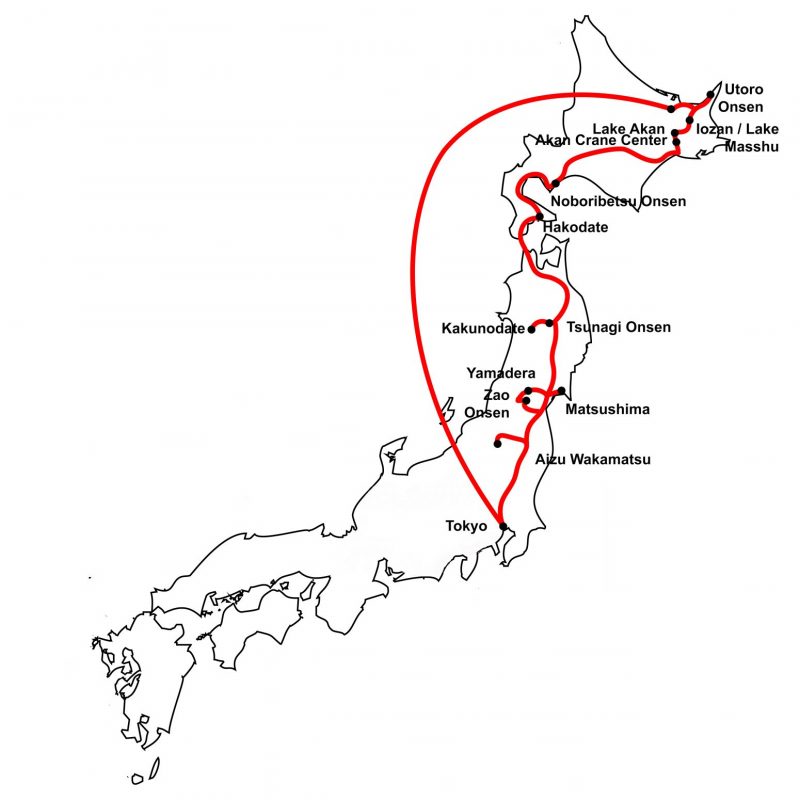
Destinations
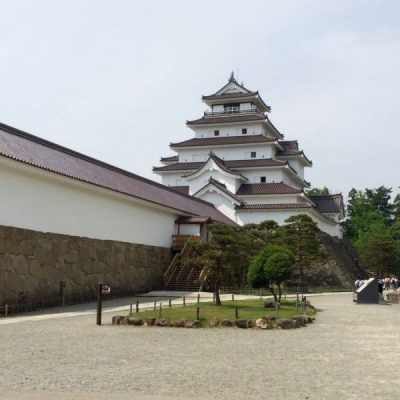
Aizu-Wakamatsu
Samurai Mansion, Sazaedo Pagoda, Nisshin Samurai School, Tsuruga Castle
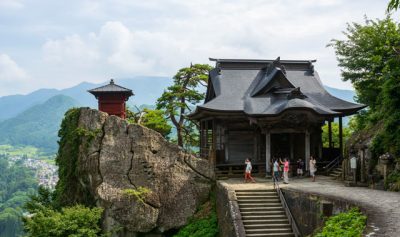
Yamadera Temple
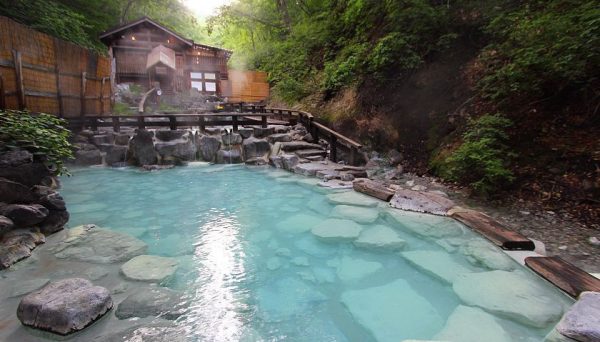
Matsushima Bay Cruise, Godaido, Zuiganji Temple
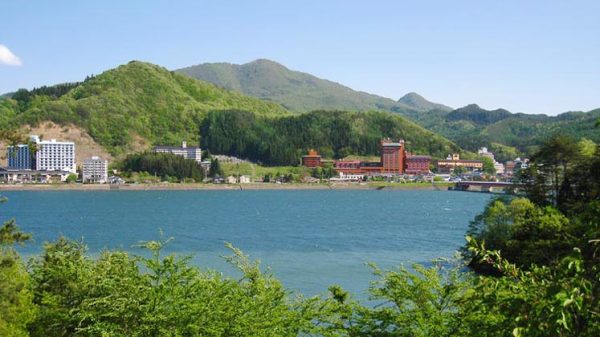
Tsunagi Onsen
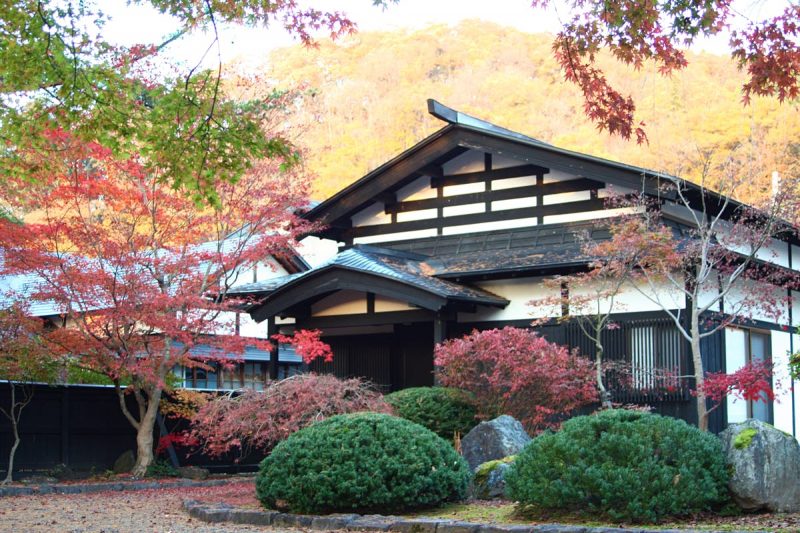
Kakunodate Denshokan Museum, Samurai Residences
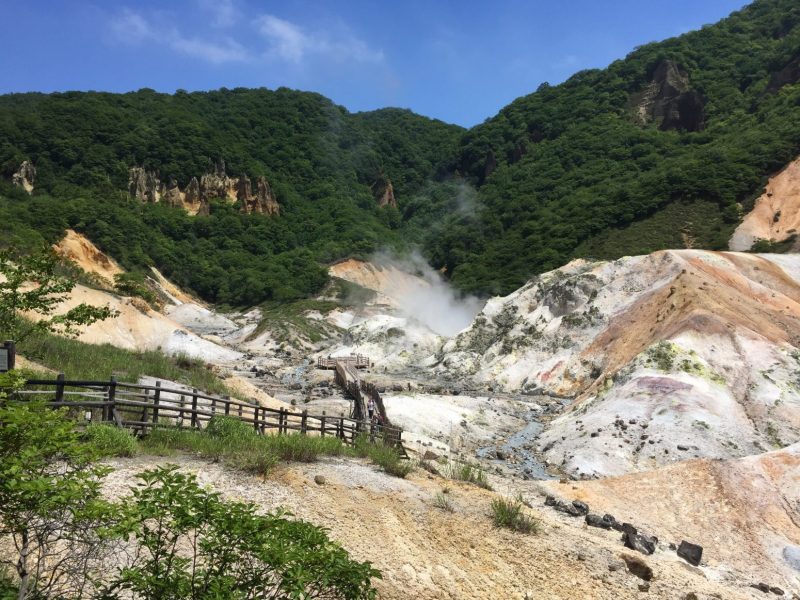
Noboribetsu Onsen
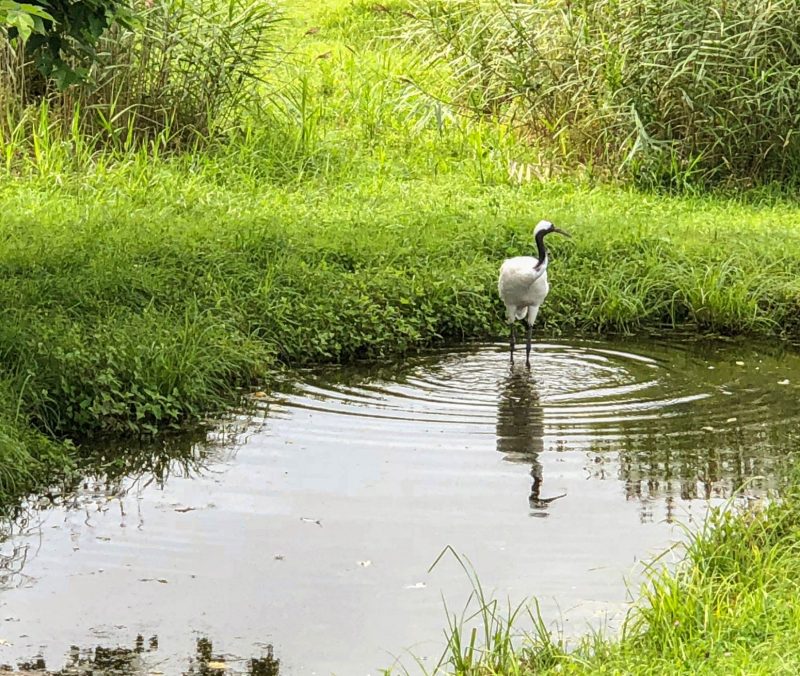
Akan Crane Center
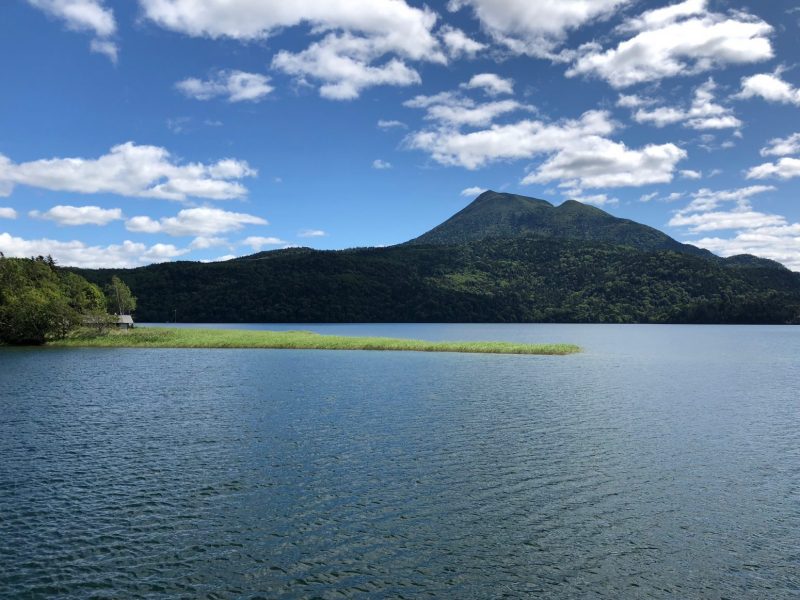
Lake Akan Onsen
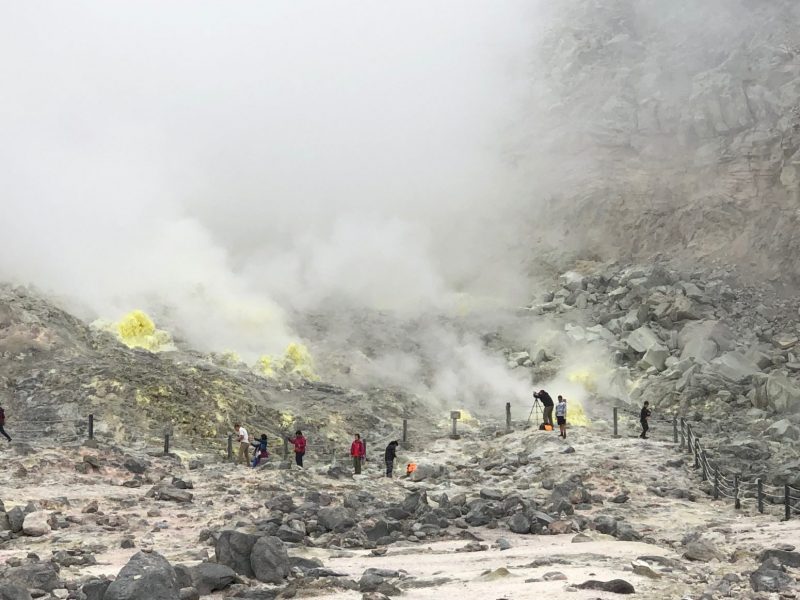
Lake Masshu
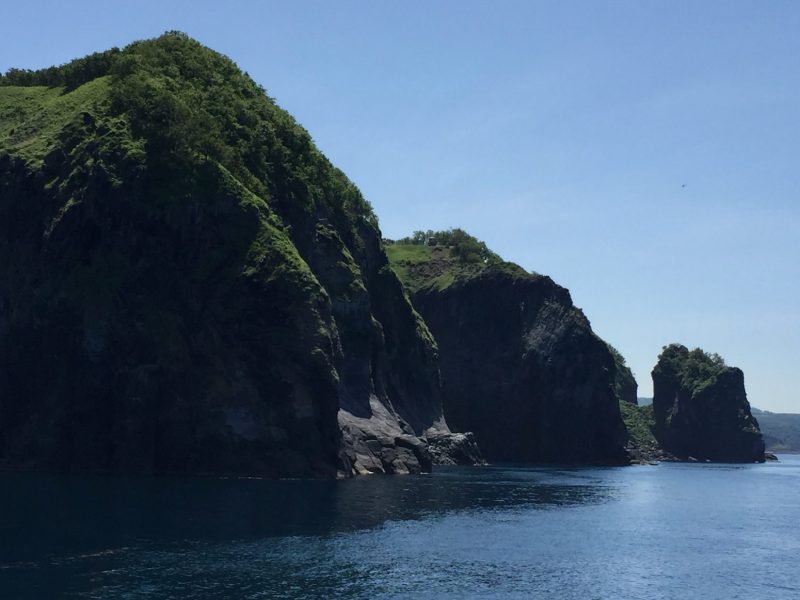
Utoro Onsen
Shiretoko Peninsula Cruise
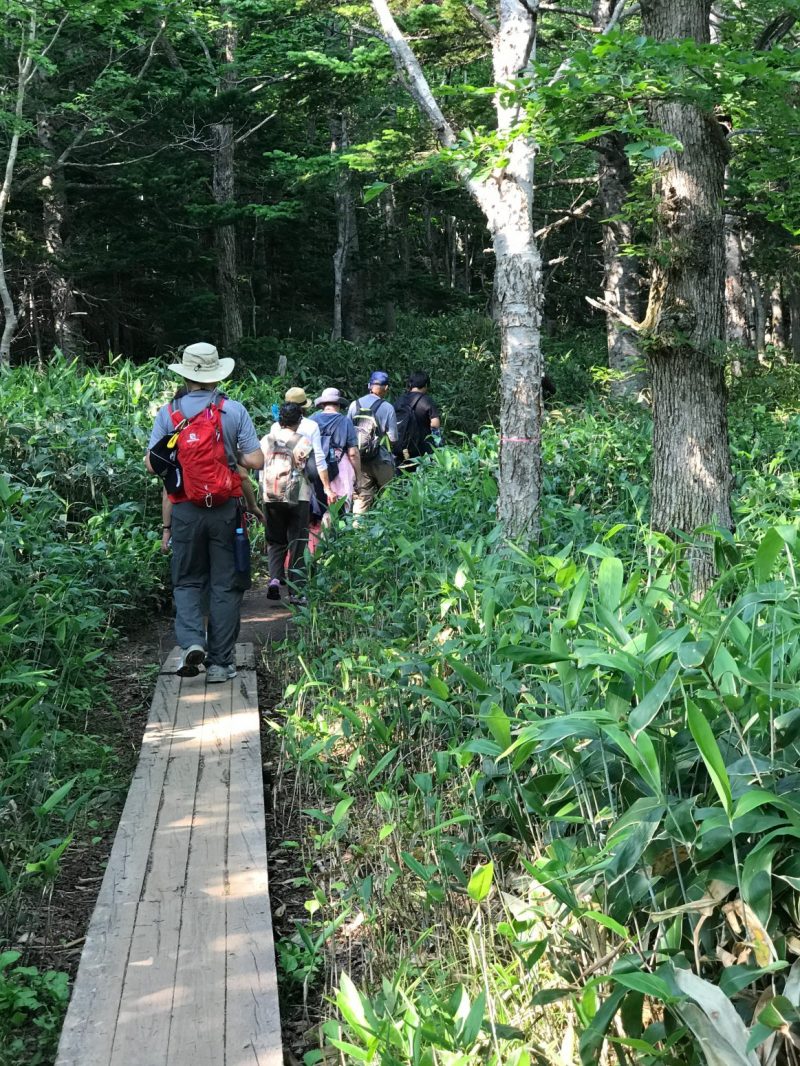
Shiretoko Goko Walk
Walking level descriptions: Light – 0 to 2 miles on level ground Medium – 2 to 4 miles on level ground or 0 to 2 miles on hilly ground Heavy – 4 to 6 miles on level ground or 2 to 4 miles on hilly ground
Day 1 Arrive in Tokyo, Travel by limousine bus to the hotel
After clearing customs and immigration, you will be met at Tokyo’s Narita Airport or Haneda Airport by a Samurai Tours meeting staff member. They will help you board the bus to the hotel. After checking in, the evening is free. No meals are included.
Travel: 1 to 1 1/2 Hours; Walking: Light
Day 2 Travel to Aizu-Wakamatsu; Aizu-Wakamatsu - Samurai Mansion; Overnight Higashiyama Onsen
Before leaving Tokyo, you will need to prepare your luggage for transfer to Aizu-Wakamatsu. We will be traveling to Aizu-Wakamatsu with an overnight bag only. Please prepare your overnight bag for 2 days and 1 night. After breakfast you will start the day with a Welcome/Orientation meeting, and then travel to Aizu-Wakamatsu. Aizu Wakamatsu is a former castle town with a long Samurai tradition. After arriving at Aizu Wakamatsu and dropping off our luggage, we will visit the Aizu Bukeyashiki (Samurai Mansion). This was the home of an important Samurai, and therefore is very large with dozens of different rooms and sections including gardens, guest rooms, a tea house, an archery range, and a rice mill. Breakfast at the hotel and dinner at the ryokan included.
Travel: 3 Hours; Walking: Medium
Day 3 Aizu-Wakamatsu - Sazaedo Pagoda, Nisshin Samurai School, Tsuruga Castle
Today we will further explore the Samurai city of Aizu Wakamatsu. We will start at the Sazaedo Tower. Completed in 1796, the wooden Sazaedo temple isn’t huge but what makes it unique is its double helix staircase on which the people going up and the people going down never pass each other. Next, we will tour the Samurai School where the children of the Samurai attended. In the afternoon we will visit Tsuruga Castle, originally built in 1384. Tsuruga Castle was one of the last strongholds of the Boshin War. However, it was destroyed by Samurai still loyal to the Tokugawa Shogunate after the Boshin War of 1868, a rebellion against the newly formed Meiji government. The castle was rebuilt as a concrete reconstruction in the 1960s, and in renovation works completed in 2011 the color of the roof tiles was changed from grey to the original red tiles. The inside of the castle houses a museum with displays depicting the history of the castle and the Samurai lifestyle. After touring the castle, we will return to the ryokan to retrieve your main luggage. Breakfast at the ryokan and dinner at the ryokan included.
Travel: 1 Hour;; Walking: Heavy
Day 4 Travel to Yamadera, Tour Yamadera, Travel to Zao Onsen
After breakfast we will travel to Yamadera. Yamadera is a scenic temple located in the mountains northeast of Yamagata City. The temple grounds extend high up a steep mountainside (the name Yamadera literally translates to “mountain temple”), from where there are scenic views overlooking the valley below. The temple was created over a thousand years ago in 860 as a temple of the Tendai sect. We will finish the day by continuing to Zao Onsen where we will stay for the next two nights. Zao Onsen is at an altitude of about 900 meters (3000 feet) on the slopes of Mount Zao, an active volcano. During the winter months, Zao is one of Japan’s leading ski resorts. The sulfuric waters at Zao Onsen are among the most acidic in Japan with a pH value close to 1. Before leaving Aizu-Wakamatsu, you will send your main luggage ahead to Zao Onsen. You will need enough items for 2 days and 1 night. Breakfast and dinner at the ryokan included.
Travel: 3 1/2 Hours; Walking: Heavy
Day 5 Zao Onsen - Free Day
Today is a free day to enjoy Zao Onsen. Take the gondola to the top of Mt Zao, an active volcano. From here you can get a great view of the surrounding area. And for the more energetic, there are many easy walking trails around the mountain. You will also be able to get a view of Okama Crater, a beautiful crater lake at the top of the mountain. Or visit one of the many public baths located around the onsen. Breakfast and dinner at the hotel are included.
Travel: N/A Walking: TBD
Day 6 Travel to Sendai; Matushima - Matsushima Bay Cruise, Godaido, Zuiganji Temple; Travel to Tsunagi Onsen
After breakfast, we will continue our adventure by traveling to Sendai, dropping off our overnight bags, and continuing to Matsushima. For hundreds of years, Matsushima has been celebrated as one of the Japan’s three most scenic view along with Miyajima and Amanohashidate. Matsushima Bay has more than 200 small islands covered with pine trees, and the best way to see these is by boat. After arriving at Matsushima, we will tour Zuiganji. Zuiganji was a former Tendai sect temple founded in 828, but later changed to a Zen temple in the 13th century. After years of decline, Zuiganji was restored to prominence by the feudal lord Date Masamune who rebuilt it as his family temple in 1609. We will then visit Godaido. Godaido was originally built in 807 and contains five statues which were enshrined there by the same priest who founded Zuiganji. The statues are displayed to the public only once every 33 years, and were last displayed in 2006. The present building is a 1604 reconstruction by Date Masamune. Later in the afternoon, you will board the boat for a cruise around Matsushima Bay. After returning to Sendai, we will travel on to Tsunagi Onsen. With a history stretching back 900 years, Tsunagi Onsen is a popular hot spring on the outskirts of Morioka. Before leaving Zao Onsen, you will send your main luggage ahead to Tsunagi Onsen. You will need enough items for 2 days and 1 night. Breakfast and dinner at the ryokan included.
Travel: 3 1/2 Hours; Walking: Medium
Day 7 Travel to Kakunodate; Kakunodate - Kakunodate Denshokan Museum, Samurai Residences, Return to Tsunagi Onsen
After breakfast, we will continue our adventure by traveling to Kakunodate. Kakunodate is a former castle town. And while the castle no longer exists, the samurai tradition is still strong. There were two distinct sections of Kakunodate: the merchant district and the samurai district as designed in the Edo Period. Today, the samurai district has some of the best preserved examples of samurai architecture anywhere in Japan. We will tour two homes: the Aoyogi and the Ishiguro homes. The Aoyogi home is the largest in Kakunodate, and includes multiple buildings with musuem collections documenting the samurai traditions and history in Kakunodate. The area open to visitors at the Ishiguro home is limited because the Ishiguro family still maintains a residence in the home. We will finish the day at the Denshokan museum. This museum has numerous local arts and handicrafts on display, the most prominent being items made from cherry tree bark. During the cold winter months, the samurai would earn extra income by making these items. In the afternoon, we will return to Tsunagi Onsen for the evening. Breakfast and dinner at the ryokan is included.
Day 8 Travel to Noboribetsu Onsen
Before leaving Tsunagi Onsen, you will need to send your main luggage to Lake Akan. You will need to take whatever you will need for three days/two nights with you. After breakfast, we will travel to Noboribetsu Onsen, one of Japan’s most popular onsen. Breakfast and dinner at the accommodations are included.
Travel: 6 Hours; Walking:Medium
Day 9 Upopoy Ainu National Museum
Today we will visit the nearby Upopoy National Ainu Museum where we will learn more about and experience Ainu culture. Breakfast and dinner at the ryokan included.
Travel: 1 Hour Walking:Heavy
Day 10 Travel to Akan International Crane Center; Travel to Akan Onsen
After breakfast, we will travel to Kushiro and then on to the Akan International Crane Center. It was once thought the cranes were extinct. However, about 50 years ago, a few cranes were found, and extensive efforts were made to bring them back from the brink of extinction. While much work remains to be done, the crane population has stabilized and is even growing. In the afternoon, we will continue on to Akanko Onsen where we will be staying for the evening. Before leaving Noboribetsu Onsen, we will send the luggage to Utoro Onsen. You will need enough items for 3 days and two nights. Breakfast and dinner at the accommodations are included.
Travel: 6 1/2 Hours; Walking: Light
Day 11 Free Day at Lake Akan
The day is free to enjoy the quiet and solitude of Lake Akan. Visit the Ainu dance theater to enjoy a demonstration of traditional Ainu dances. The Ainu were the original inhabitants of Japan. Or take a cruise on Lake Akan, where you can see Marimo. Marimo is a ball-shaped algae that is only found at Lake Akan. Or take an easy forest walk along the shores of the lake to a small geo-thermal area. Breakfast and dinner at the accommodation are included.
Travel: 1 Hour; Walking: Medium
Day 12 Akan National Park - Lake Masshu, Iozan; Travel to Utoro Onsen
Today, before traveling to Utoro Onsen we will visit two popular locations in Akan National Park; As soon as we arrive, you will discover how Iozan (Sulpher Mountain) got it’s name. Next we will travel to Lake Masshu, considered by many to be one of Japan’s most beautiful lakes because of its clear, deep blue water. But the lake is shy, and is often shrouded by fog. In the afternoon, we will travel to Utoro Onsen where we will staying. Breakfast and dinner at the accommodations are included.
Travel: 3 1/2 Hours; Walking: Light
Day 13 Shiretoko National Park - Oshinkoshin Waterfall, Shiretoko Peninsula Cruise; Shiretoko Goko Nature Walk
Today we will explore the remote and beautiful Shiretoko National Park. Shiretoko is an ancient Ainu word meaning ‘edge of the world’. Shiretoko National Park is famous in Japan for its beautiful scenery and abundant wildlife including deer, bear and foxes. In the morning, we will start with a quick stop at Oshinkoshin Waterfalls, included in the list of 100 Best Waterfalls in Japan. Next we will take a sightseeing cruise along the Shiretoko peninsula where we can see the dramatic and spectacular coastline with its tall cliffs and waterfalls and the mountains in the background. In the afternoon, we will take an easy 3km (2 mile) hike around the Shiretoko-go-ko area. (PLEASE NOTE: Depending on weather conditions, the boat cruise may be cancelled. The walk around Shiretoko Goko is flat, but the trails are not paved.) Buffet breakfast and buffet dinner at the hotel included.
Travel: 1 Hour; Walking: Heavy
Day 14 Travel to Tokyo
Today is a travel day to Tokyo. You will have some free time in Tokyo in the afternoon. We will enjoy the Sayonara dinner in the evening. Breakfast at the accommodation and dinner at a local restaurant.
Travel: 5 Hours; Walking: Light
Day 15 Return Home
It’s time to say “sayonara” (Goodbye). Breakfast at the accommodation is included.
Travel: 1 to 1/2 Hours; Walking: Light
Dates & Pricing
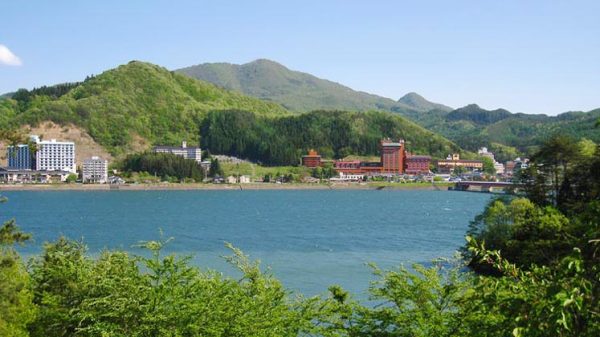
Our tours and tour itineraries are the best, but as the saying goes, “you can’t make everyone happy all of the time”. There may a specific destination or a specific experience you may want to include in your visit to Japan that may not be included your tour. Choose from our Add On tours to include your interests and make your Japan tour even better.
Click HERE to view all of the Add-On Tours.
Or, use the arrows to scroll though the recommended list of Add-On Tours for this tour.
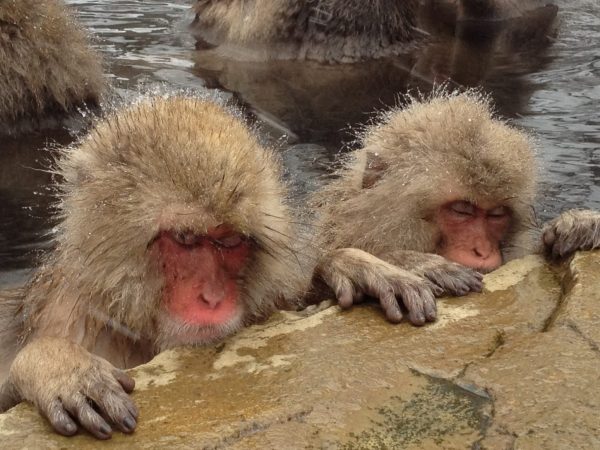
- Local, licensed, English-speaking, Japanese guides
- For residents of the following states please click here for your available plan. CO, FL, IN, KS, MN, MO, MT, NY, and WA
- For all other states and the District of Columbia click here
- Up to 69 – $0
- 70-74 – $175
- 75-79 – $375
- 80-84 – $700
- 85+ – $1,175
- Travel Insurance Opt-Out: If you would prefer to opt out of the travel insurance, please note this at the time of registration. You will receive a $100 credit per person, which will be reflected on your invoice. In the event that you would need to cancel your tour, cancellation penalties may apply. See the Terms and Conditions page for the Cancellation Fees Schedule.
- Domestic airfare from Hokkaido’s Memanbetsu Airport to Tokyo
- The meeting service will meet you at the airport and provide you a transfer to the accommodations in Tokyo
- Meeting service can only be provided between 6am and 9pm. If you arrive at a time outside of these hours, we will need to provide alternative directions for you to get to the hotel on your own.
- The sending service will escort you to the Shinagawa station and make sure you board the correct train or subway depending on the airport. The sending service will not accompany you to the airport.
For those requiring meeting or sending services on other than the scheduled arrival/departure dates, there will be a $100 fee for the meeting service from the airport into Tokyo or the sending service to the Kyoto train station.)
- Lodging for 14 nights in Japanese-style hotels or ryokans and western style hotels
- Japanese-style or Western-style breakfast every morning (Please Note: Some ryokans offer Japanese breakfasts only.)
- Japanese-style or Western-style dinner every night
- The appropriate amount of free time to allow you to explore and discover your own personal Japan.
- All transportation costs when traveling with the group. (Transportation costs during scheduled free times are the tour member’s responsibility.)
- Admission fees to the destinations and activities (Itinerary specifics subject to change)
- Electronic version of itinerary
- Sayonara dinner at the end of the tour
- Baggage transfer from Tokyo to Aizu Wakamatsu (one bag only)
- Baggage transfer from Aizu Wakamatsu to Zao Onsen (one bag only)
- Baggage transfer from Zao Onsen to Tsunagi Onsen (one bag only)
- Baggage transfer from Tsunagi Onsen to Lake Akan (one bag only)
- Baggage transfer from Lake Akan to the hotel in Tokyo (one bag only)
Each tour member receives an electronic copy of our tour handbook. This handbook is full of tips and suggestions taken from our Japan travel experiences that allow you to better plan and prepare for your trip, and therefore enjoy your trip even more. The tips and suggestions included cover everything from how to save while exchanging money, what to pack, some basic Japanese-language tips, general etiquette do’s-and-don’ts, ryokan customs, etc.
- International airfare is NOT included.
- A printed itinerary is not included
- Alcoholic beverages, soft drinks and desserts are NOT included
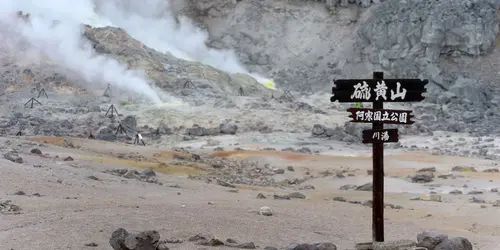
Volcanic fumaroles in Akan-Mashu national park
©Payless Japan/123RF
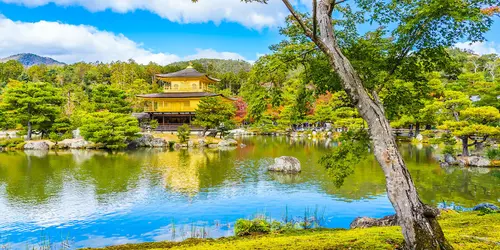
Golden Pavilion Kinkaku-ji : a must-see in Kyoto ancient capital
©siraphol/123RF
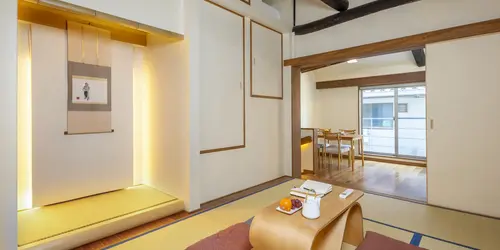
An authentic stay in one of our traditional houses in Kyoto
©JapanExperience
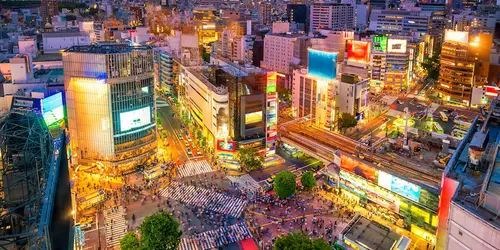
Worldwide famous Shibuya crossing, Tokyo
©Wasin Pummarin/123RF
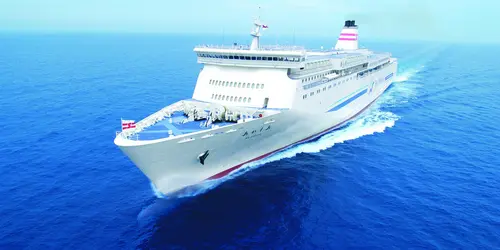
In one night and one morning, enjoy a cruise between the main island of Honshu and Hokkaido
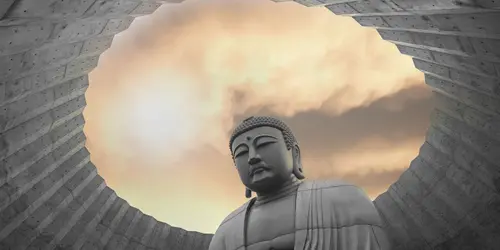
Sapporo city - Buddha hill designed by Tadao Ando
©Athichoke Pimviriyakul/123RF
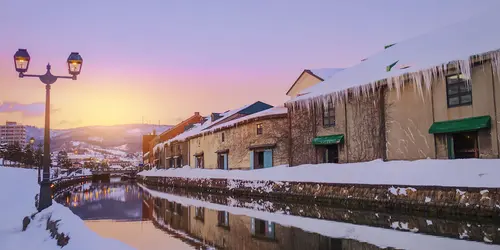
Otaru river dock in winter in Hokkaido
©Phongthorn Hiranlikhit/123RF
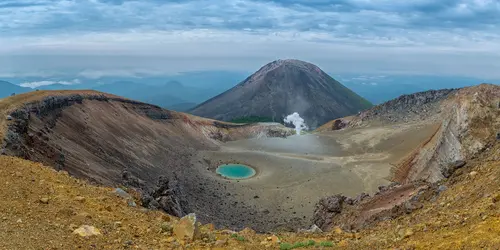
Volcano in Akan-Mashu national park
©Martin Capek/123RF
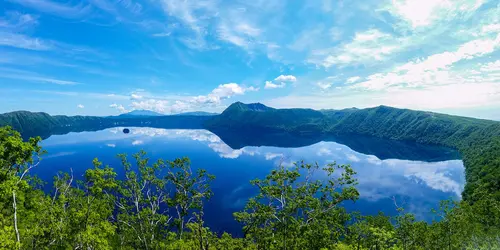
Crater lake in Hokkaido
©Ooriya Ron/123RF
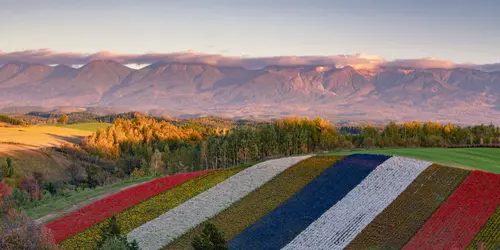
Furano flower fields with Daisetsuzan-Nationalpark mountains
©Pranodh Mongkolthavorn/123RF
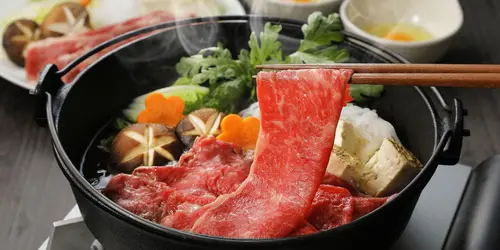
Shabu-shabu hot pot - traditional Japanese cuisine
©wnaoki/123RF
- Travel insurance
- Japan Experience
Hokkaido and the northern Japan
- Duration : 19 days
- Locations : Osaka, Kyoto, Nara, Tokyo, Sapporo, Sounkyo Onsen, Akan-ko, Furano, Sapporo
- Add to favorites
This trip to Japan will take you from Kyoto to Tokyo and then up again, by boat, to the island of Hokkaido !
Discover a less touristy Japan, closer to nature . Travel around Hokkaido by car and discover the natural parks of this large island in the north.
A variety of accommodation and transport , a guided tour of Kyoto and pocket Wi-Fi : an organised trip in total freedom !
3 week itinerary (19 days)
- Departure city/airport : Osaka (Kansai international airport : KIX )
- Kyoto (4 nights including 1 day in Nara )
- Tokyo (3 nights)
- Ferry (1 night)
- Sapporo (3 nights)
- Sounkyo Onsen (1 night)
- Akan-ko (3 nights)
- Furano (2 nights)
- Sapporo (1 night)
- End Return airport : Sapporo (New Chitose international airport : CTS )
Please find below the itinerary details.
Tour length : 18 nights / 19 days (+ 1 day at the beginning if you leave from Europe)
Indeed, the tour departure and end dates presented on this page relate to your stay in Japan. On departure, you will have to leave Europe on the day before. The return flight is on the same day due to the time difference.
Example :
- Departure from Europe : January 1st
- Arrival Osaka (date to be selected in the tour calendar while booking ) : January 2nd
- Return flight from New Chitose international airport : January 20th
Fancy Northern Japan's nature but also the South's beaches? Our combined tour " Japan from North to South " is perfect for you!
Why this trip to Japan ?
- Welcomed at the airport by our team, you will be taken to your hotel in Kyoto by shuttle bus
- In Kyoto, a travel angel will welcome you to a traditional Japan Experience house
- A guided tour of the Gion district will complete your stay in Kyoto
- Head for Tokyo by high-speed Shinkansen, for 3 days in the heart of the capital
- Enjoy a cruise along the coast to the island of Hokkaido in less than a day!
- In Hokkaido, fabulous natural landscapes dotted with majestic volcanoes await you
- Included in your tour : car rental to explore the far north of Japan!
- End your stay in Sapporo, host city of the 1972 Winter Olympics
- Take advantage of your Japan Rail Pass and car rental
- Enjoy unlimited internet access thanks to your pocket Wi-Fi
- If needed, contact our bilingual Japanese/English-speaking assistance team available 7/7
- A number of guided days or other optional activities are available
- Benefit from the expertise of Japan Experience , European leading travel agency in Japan.
Your trip in detail
Day 1 : wake up in kyoto 京都.
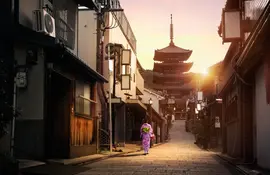
Arrival in Japan - Kyoto and Yasaka Pagoda at rising sun
©pat138241/123RF
Arrival at Kansai International Airport (KIX). Welcome to Japan! Yokoso 日本へようこそ!
Pocket Wi-Fi collection at the airport.
Reception at the exit from Customs in English by our airport assistant, who will give you all your travel documents. Unaccompanied transfer from the airport to your traditional Japan Experience house!
Check in before 8:00 p.m. in your accommodation. A Travel Angel will welcome you, show you some unique details and help you to have an unforgettable stay in Kyoto. You will be able to "live the Japanese way" for a few days, with a space much bigger than a hotel room and a kitchen to prepare good Japanese food!
Day 2 : First steps in the old capital
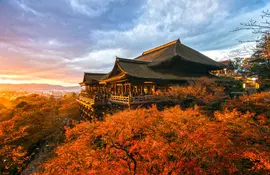
Kiyomizu dera temple in Kyoto during fall leaves
©Luciano Mortula/123RF
What is there to do in Kyoto in 3 days?
We advise you to start your visit to Kyoto slowly by visiting the city centre and the Gion district: - The Nijo castle, former shogun's residence - Nishiki, Kyoto's culinary market - Kiyomizu-Dera, the great water temple - The historical streets of Sannen-zaka & Ninnen-zaka - Kodai-ji, the maple and bamboo temple of Kyoto
Finish off seeing the sunset in Gion. Meet your guide at 19:00 to start your late stroll around Gion, Kyoto's historic district.
At the end of this 1 hour 30 walk, your guide will be able to advise you on the best places to eat out! Please note that it is strictly forbidden to take photographs in the historic district of Gion.
Day 3 : Gold and Silver Treasures
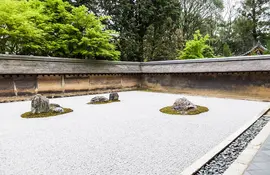
Visit Ryoan-ji, Kyoto, the most famous rock and zen garden in Japan
©Philippe Voisin
We recommend the following itinerary for this second day's visit to Kyoto: - Ryoan-ji Zen Garden - The Kinkaku-ji ( Golden Pavilion ) - Ginkaku-ji ( Silver Pavilion ) - The bewitching path of philosophy - The Nanzen-ji temple
One of our many experienced English-speaking guides can accompany you on a tour of these symbolic sites (optional, from 9:00 to 17:00).
Day 4 : Between temples and deer
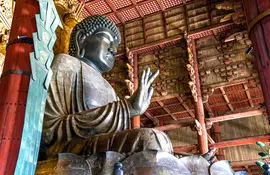
Todai-ji temple and its imposing statue of the buddha : a must-see in Nara
©Surachet Shotivaranon/123RF
For your last day in Kyoto and its surroundings, we recommend taking the 50 minute journey to Nara, which is included in your package.
Visit to Nara, the first permanent capital of Japan in the 8th century. Discover: - The Shinto shrine Kasuga Taisha and its thousands of lanterns - The Todaiji, its great bronze Buddha and the imposing Nan-Daimon gate - Kofukuji temple and its beautiful pagoda
Return to Kyoto and stop for sunset at Fushimi Inari, the huge 10,000 torii sanctuary in Kyoto. If you wish to be accompanied on this day, one of our English-speaking guides will unveil all the secrets of Japan's first capital (optional, return trip from Kyoto).
Final night in your traditional Kyoto house.
Day 5 : First steps in the capital
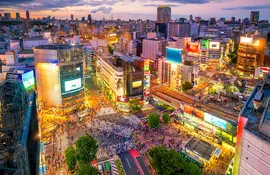
From Kyoto Station, get to Tokyo in 2 hours 40 minutes on the Shinkansen high-speed train, included in your package.
Check-in at Hotel OMO3 Tokyo Akasaka by Hoshino Resorts or hôtel de même catégorie 3*.
We advise you to slowly start visiting Tokyo from its western districts: - Harajuku: the avant-garde district - Meiji Jingû, the imperial shrine - Takeshita-Dori: the most famous street in Japan - Omotesando: Tokyo's Champs-Élysées - Shibuya and its unmistakable "crossroads"
Day 6 : The big loop
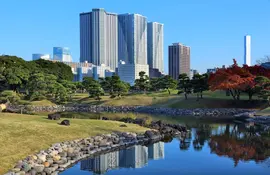
Hamarikyu gardens : One of Tokyo must see
©tupungato/123RF
For this third day of visiting Tokyo, we recommend the following "loop". Start from Tokyo Central Station, with its original architecture, then go to visit: - Ginza, Tokyo's chic district - Tsukiji, the small outdoor food market - Hamarikyu, the Japanese garden between Tokyo's buildings - Asakusa, a traditional district and place of pilgrimage, accessible by a cruise on the Sumida River - Sensô-ji Buddhist temple, one of the oldest in the city - Tokyo Sky Tree reaching a height of 643mn and its panoramic view of Tokyo at sunset
Enjoy a cruise on the Sumida River between Hamarikyu and Asakusa.
Day 7 : Now for some activity...
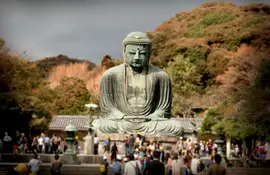
For nearly eight centuries, the great Buddha has watched over the ancient capital of Japan in Kamakura
Sanil Chitrakar
This is your last full day to visit Tokyo, so make the most of our many optional activities: - Are you looking more for fun? Ghibli Museum, Disneyland or Hello Kitty Park are waiting for you! - Do you prefer a themed activity? Book a visit on an architecture tour, gardens, home cooking or Noh's theatre. - Chasing thrills? Let yourself be tempted by a helicopter ride or a sumo tournament (in season)!
If you wish to continue the visits at your own pace, Kamakura will seduce you. This small coastal town just 45 minutes by train (no reservations required) from Tokyo was once a shogun capital. The great Buddha of Kamakura is the symbol of the city. Our English-speaking guides can help you discover this city full of history.
Day 8 : Back to the future
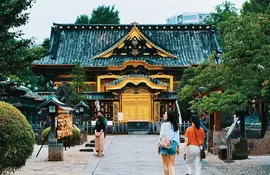
Lovely Toshogu shrine in Ueno park, Tokyo
©Juan Broullon/Unsplash
Travel back in time for this 4th day: - Yanaka, the old Tokyo - Ueno, the place of resistance of the last Samurai, and its park full of cherry trees - Akihabara, the electronic and manga district - Odaiba, the island of futuristic entertainment in Tokyo Bay
In the afternoon, travel to the port of Niigata on the Sea of Japan (2 hours direct by Shinkansen, departing every 30 minutes until late at night, included in your package). Spend the afternoon and evening in this lively city with its many bars and restaurants. This is a far cry from the tourist circuit, in a Japan off the beaten path. Don't hesitate to try Niigata's rice and sake, the most famous in the country. You'll reach the port of Niigata in the middle of the evening, 3 kilometres from the centre, to board a comfortable cruise ship (see details below). After a night on the waves along the Japanese coast of Tohoku, you will get to Hokkaido in the early morning. After passing through the Tsuruga Strait , a crossing about 20 km wide between the two largest islands of Japan, Honshu and Hokkaido, you will arrive at the port of Tomakomai. Not tempted by the boat trip? As an option, you can select the Tokyo -> Sapporo day trip by Shinkansen and train (1 change, about 8 hours, included in your Japan Rail Pass).
Day 9 : The North's big city
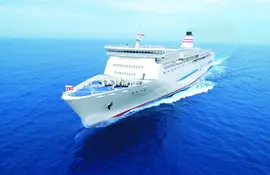
Possibility of breakfast and/or lunch on board the cruise ship (payment on site). Arrive in the middle of the afternoon at Tomakomai port. A shuttle bus (about €8, to be paid on the spot) or a taxi will take you to Minami-Chitose station, from which a direct train will take you to the heart of Sapporo in 35 minutes (train every 10 minutes, included in your Japan Rail Pass). Check in to the Unwind Hotel or hôtel de même catégorie 3*. Spend your first evening strolling through the 4500 restaurants and bars of the lively Susukino district!
Settle into your 3* hotel in the heart of the city.
Day 10 : Hokkaido in a nutshell
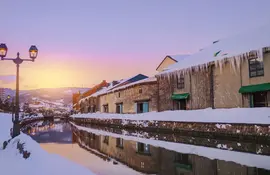
For the last valid day of your Japan Rail Pass, we advise you to go to the Sea of Japan with Russia in the distance: - Otaru, a charming port city (45 min by JR train, included in your offer) - And 20 minutes further by JR train, Nikka whisky distillery, the oldest in Japan: selected for its climatic similarity with Scotland You can also head south: - In Shiraoi, the brand new Ainu National Museum (opening April 2020), 1 hour by JR train. - Noboribetsu, the village with the most famous onsens in Japan. Most of them are integrated into hotel complexes but are open to non-residents. Not to miss in this village: Hell Valley, whose volcanic fumaroles give off a strong smell of sulphur! 1 hour 15 direct JR train, then 10 minutes by bus (tpsy on site).
Overnight stay in your hotel in Sapporo.
Day 11 : A young, dynamic city
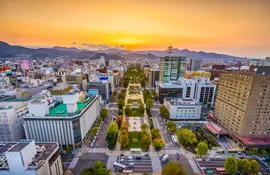
Sapporo city in Hokkaido - Odori Park
©Sean Pavone/123RF
Huddled under a blanket of snow for most of the year, the city of Sapporo still bears the traces of its colonial past. Don't miss : - Ôdôri Park, a huge green border that stretches between the buildings and divides the city in two - The Sapporo Beer Museum, created in Japan's first brewery (dinner available) - The Clock Tower, Television Tower and Three-Eight Tower - Nijo Seafood Market - The former seat of government and its botanical garden
Last night in your hotel in Sapporo.
Day 12 : In the heart of Daisetsuzan National Park
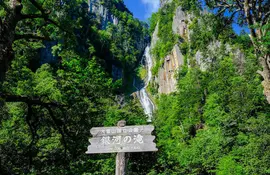
Sounkyo waterfall, Hokkaido
©Satoru Kobayashi/123RF
Over the next week, you can only explore the island of Hokkaido by car from Sapporo, as the rail network is not developed enough to reach the various points of interest on the island. Don't be put off by the idea of driving a car in Japan! If in your country you are used to driving on the right, after a few minutes of apprehension about driving on the other side you will be impressed by the ease of driving on Japan's roads. Indeed, the Japanese/English bilingualism of most of the signs and GPS, very good road conditions, automatic cars, low traffic jams and the courtesy of Japanese people behind the wheel will make this visit of an unusual Japan pleasant! Remember that petrol in Japan is slightly cheaper than in the UK and many other countries. Pick up your rental car next to your hotel in the morning. Leave for Hokkaido's most famous national park, and the largest in Japan. You will reach Sounkyo Onsen, a spa in the heart of the national park at an altitude of 670m, in 3 hours by car. 200 kilometres, 3/4 on motorway, 1/4 at the end on national road easily passable through dense forests. No mountain roads. Arrive at noon and check into your ryokan. In the afternoon, take the cable car up to the top of Kuro-dake Mountain. A magnificent view of the national park awaits you. At the end of the day, enjoy relaxing in the onsen of your ryokan, or in a different one in the village.
At night at the ryokan, you will be treated to a tasty traditional Japanese dinner before retiring to your tatami room.
Day 13 : A vast wilderness
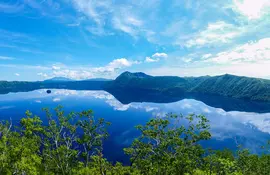
Traditional Japanese breakfast at the ryokan.
After an essential stop at the 2 most famous waterfalls of Hokkaido , at the exit of Sounkyo village, you will head to Akan lake, sacred land of the Ainu people, the island's indigenous nation. 3 hours 30 of national road, with a bit of sufficiently wide mountain road and no major difficulties. You will gradually leave the Sounkyo Gorge and the thick forests of the park to reach small farm valleys. Restaurants and farmers' shops along the roadside will welcome you with pleasure. Arrive in the middle of the afternoon at the edge of Lake Akan, in the heart of the eponymous national park, which is even wilder and more volcanic than Daisetsuzan.
Settle into your 3* hotel in the small village of Akanko onsen, on the shores of the lake. Later in the afternoon, you will have the opportunity to discover the lake on a small cruise.
Day 14 : Natural beauty
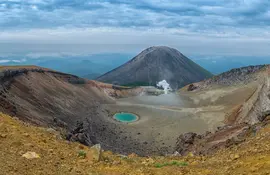
Breakfast at the hotel.
Here is an overview of a day's exploration of this wilderness area (by car, within a 50 km radius of your hotel): - Deep caldera lake - Easy to see volcanic gas - Ainu village - Onsen in the middle of nature - Free onsen inside reputable hotels
Day 15 : Tackling the volcano
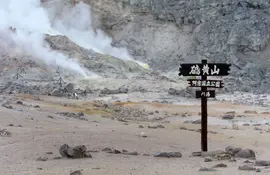
Drive to an active volcano (about 20 minutes by car) via a picturesque lake with clear waters. A 5-hour hike, topped off with a swim in the volcanic waters when you arrive. You can also discover the fabulous Shiretoko National Park, the last natural enclave inhabited by bears, classified as a UNESCO World Heritage Site. The park can be reached in 2 hours by car, and an additional 1 hour by car is necessary to reach the heart of the park. A wild paradise that has to be earned... Final night in your hotel in Akan-ko.
Day 16 : Crossing Hokkaido
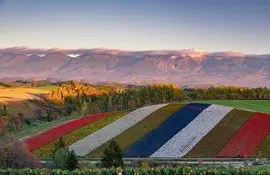
Departure for Furano (225 km, 3 hour 30 drive). Highway and national road. Some mountain road towards the end, not particularly difficult). On the way, passing by the "Church on the Water", the most secret building of the architect Tadao Ando.
Arrival in the Furano Valley, a bucolic winter sports resort famous for ... its Camembert and its red wine!
Settle into your 3* hotel.
Day 17 : Lavender, cheese and a blue pond
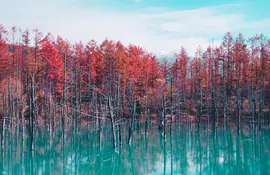
Blue Pond in Hokkaido
©Jarrett Kow/Unsplash
Breathe the air of Japanese nature in Furano, a small village famous for its lavender fields in summer and its beautiful ski area in winter. Our recommendations: - Admire the lavender fields, and enjoy a sublime panorama of Mount Tokachi to the west and Mount Yubari to the south. Taste the many lavender specialities! - Taste the local wine in the Furano vineyard, as well as its cheese, which is famous throughout Japan (try the squid ink cheese!). - Lake Biei, a picturesque lagoon blue lake (a 40 minute drive from your hotel). Second night in your hotel in Furano.
Day 18 : Return to the island's capital
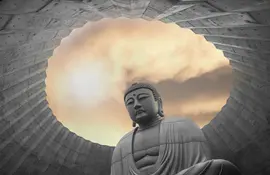
In the morning, drive to Sapporo (2 hours 15, national road and highway, some mountain road to be expected at the start). Before arriving in Sapporo, we recommend one of the following 2 stops: - Moerenuma Park, designed by the famous designer Isamu Noguchi. - With a short, 30-minute diversion, the impressive Takino Cemetery : where the architect Tadao Ando has installed monumental statues and a 13m high Buddha Hill.
Arrive in Sapporo in the middle of the afternoon (car to be returned before 6pm) and settle in the same hotel as in the middle of your stay in this city. Final evening in the lively streets of the city
Day 19 : Sayonara, and see you next time!

Sayonara - bye bye Japan !
©Sezer özger/123RF
Transfer to Sapporo International Airport (5th Japanese airport, 20 km to the south) in 40 minutes by train from Sapporo central station, see details below.
Return flight to Europe, North America, Australia with a change in Tokyo, Helsinki or one of the major Asian cities.
Don't hesitate to extend your trip by one or more days, to Hokkaido...We will be able to advise you!
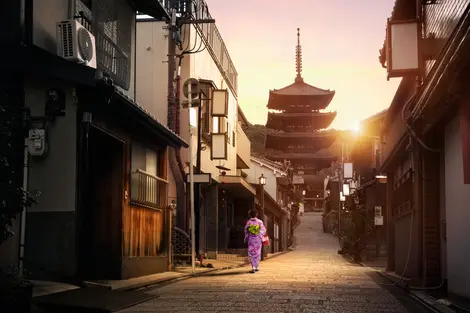
Included in your self-guided tour
Accommodation
- 4 nights in a traditional Kyoto house
- 3 nights in a 3* hotel in the heart of Tokyo, close to public transport
- 1 night on board the ferry to Hokkaido
- 3 nights in a 3* hotel in Sapporo
- 1 night in a 3* ryokan in Sounkyo Onsen, traditional half-board
- 3 nights in a 3* hotel in Akan-ko
- 2 nights in a 3* hotel in Furano
- 1 night in a 3* hotel in Sapporo
The basic rate includes a twin room for two people.
- Airport transfers
- Prepaid public transport card
- Japan Rail Pass for 7 days
- Licence translation for 1 person (see details below)
- 7-day rental car, English GPS and basic insurance
Experiences and meals
- Airport welcome
- Traditional dinner and breakfast in the ryokan
- Breakfast except in major cities (Tokyo, Kyoto, Sapporo)
- Welcome to Kyoto by a travel angel
- Guided night tour of Gion (1h30)
Additional services
- Unlimited Wi-Fi access with pocket wifi
- Complete e- travel diary
- The helpline is available from 8am to 10pm Japanese time, 7 days a week, in English and Japanese . The number will be given to you in your travel pack. It is valid for telephone calls and Whatsapp.
Not included in the price of your trip
- Flights Europe <> Japan
- Optional insurance policies
- Personal expenses including meals (breakfasts optional)
- Public transport when all 3 cards are exhausted (see details)
- Fuel for the car
- Anything not included in the "included in your tour" section
More about your trip
Your tour :
- The prices displayed on this page may vary according to the exchange rate of the Japanese ¥.
- Unfortunately, this tour is not accessible to people with reduced mobility.
- Pets are not allowed.
- Children and babies accepted. From 3 to 11 years old a child rate is offered. In each accommodation, a standard adult bed will be offered to them, and a standard seat will be allocated to them in transport. From 0 to 2 years old inclusive, a "baby" rate is offered. This price corresponds to the allocation of a cot in the majority of the accommodation of the chosen circuit. However, we cannot guarantee a baby cot in each accommodation.
- This programme is subject to change due to circumstances such as weather conditions or any other case of force majeure. Please note that due to the current circumstances, any information mentioned is subject to change or modification.
- Travel diary by email maximum 8 days before departure, and other electronic documents
- Paper documents (airport transfer tickets, transport cards) when you arrive at the airport by our airport assistant.
- Your pocket Wi-Fi at the airport.
- This tour is not open from 15 November to 15 March. The weather conditions in Hokkaido during this period causes the closure of several roads on this tour.
- At least one person participating in the trip must have a valid driving licence in their countr
- Note: In very rare cases, mostly in very high season, steps might be reversed. You will be informed in your mini travel-guide. Thanks for your kind understanding.
Your accommodation :
- Some hotels may ask you to pay a tourist tax on arrival. This depends on the city and even the hotel, as some do not include it in the booking price. Normally, it is 200¥/night/person (about £1.37/1.93$) but can be slightly higher in 4* hotels. It must be paid in cash at the hotel reception. For traditional Japan Experience accommodations, it is included in the initial tour price.
- Room size: in Japan, a densely populated country where everything is compact, 3-star luxury hotels are of very good quality but the rooms are often quite narrow (12 to 20m2/129 sq ft to 215 sq ft) depending on the hotel. Please note the size of the single room, between 10 and 16m2 (107sq ft and 172 fq ft). For more comfort, you can choose our luxury 4* accommodation upgrade option.
- Double room: Rooms for two people in western hotels have 2 single beds (twin rooms) by default, which can usually be joined together. As an option, you can select a double room instead of a twin if you prefer a double bed. This option is not valid in the Japan Experience house in Kyoto nor in the ryokans (on individual futons).
- Single room: People travelling alone and wishing to book a single room must pay a supplement at the time of booking. The single room supplement is compulsory for orders with an odd number of participants. Please note that if you request more than two people in a single room, the single room supplement will be applied to all accommodation except for the ryokans (3 and 4*). In fact, as this is traditional accommodation, people with the same reservation are grouped together in spacious rooms for up to 5 people.
- 3-person room: If there are 3, 5 or more of you and you do not select the single supplement, a triple room will be allocated to you.
- In the case of a group order (> 5 people), it is possible, depending on hotel availability, that not all members of the group will be accommodated in the same hotel. Nevertheless, we aim to keep you close.
- Names of the hotels : The names given on the site are for information only. In the event of unavailability, an establishment of equivalent standing will be scheduled. Hotels, corresponding to local standards, are given as an indication and may be changed on site for hotels of a similar category.
- In the ryokan, the rooms have a private sink and toilet. The single-sex collective Japanese baths ("onsen") then act as shared bathrooms, with showers and thermal baths. They are freely accessible, at the times in force on the site. These baths are often not accessible to people with clearly visible tattoo (s). The latter are invited to contact us to evaluate the possibilities of accommodation with private baths or shared baths that can be reserved. The 4* ryokan (see 4* option) have comfortable futons raised on either western beds in a traditional tatami room. The bathrooms and toilets of the 4* ryokans are private.
- Traditional house in Kyoto: each house has been chosen for its location (transport, shops, temples...) and thus to facilitate your stay. Most of them are either located in the historical district of Gion or on the edge of the Path of Philosophy and the Silver Temple. All lodgings have at least one Japanese tatami room and are equipped with a minimum of 3 beds, either in a single western bed (not double) or on a futon. Do not hesitate to specify in your comments that you want to sleep in a western bed.
- Bedroom on the ferry to Hokkaido: standard room with 2 bunk beds, a TV and small bathroom. No porthole. Option for a higher quality room with balcony.
Your transport :
- Flights are not included in this tour. Do not hesitate to contact us if you would like to include flights in your order: Flights in economy class with stopovers or direct flights, eco-premium or business air upgrades, provincial departures or abroad: we will be able to advise you.
- The tour departure and end dates presented on this page relate to your stay in Japan. You will arrive in Japan via from Kansai airport (KIX, not Itami ITM) and will leave from Sapporo airport (CTS). You will have to leave the day before from Europe and land at the latest at 4pm in order to be at your hotel at 6pm to meet your travel angel in the traditional house in Kyoto.
- The return flight is on the same day due to the time difference, with a departure time of 9am at the earliest. Please do not hesitate to consult us for any uncertainty or need for precision in the choice of international flights.
- Please note that for the return flight from Sapporo International Airport, you will need to change at Tokyo, Helsinki or one of the major Asian cities. In Tokyo and Seoul, please check that the connecting airports are the same. Sapporo -> Tokyo and Sapporo -> Seoul flights sometimes land at different airports (Tokyo Haneda HND or Seoul Gimpo GMP) from those from which international flights to Europe depart (Tokyo Narita NRT or Seoul Incheon ICN).
- If the flights have been purchased by your care without the intervention of Japan Experience, it is necessary to send us by mail 1 month before your departure your flight information (flight number, airport, date and time of arrival) to allow us 'Organize your welcome and airport transfer.
- Airport transfers: The shared shuttle bus leaves from the airport and stops in front of your Japan Experience home or very close to it. Our airport assistant in Kansai Airport will drive you to the platform to take the airport transfer. Afterwards, this hotel transfer is unassisted. If you would like to be accompanied from the airport to your hotel reception please choose the option "Accompanied Airport Transfer".
- The return transfer from your hotel to Sapporo International Airport is by public transport from the central station (40 minutes by train) It's a straightforward journey, with the train arriving directly at the airport. Cost: 1150¥ (about €10, paid with your pre-paid transport card, already loaded with the amount for the transfer). From 5:50am to 9:50pm, with train every 10 to 15 minutes. If you want door-to-door transport, we recommend that you contact your hotel reception to order a taxi. It will cost you approximately €45 for a 45 minute journey.
- Included in your tour is a pre-charged transport prepayment card of ¥ 1,500 (around £10.30 / 14.54$) (suica or Pasmo brand); and a 7-day Japan Rail Pass. Upon expiry of the 1,500¥ Transport Prepayment Card, or if the line you are travelling on is not covered by your Japan Rail Pass, any travel will be at your own expense by recharging your pre-paid transport card (at vending machines in all stations and metro stations).
- Travel by metro and bus in the cities (payable by pre-paid transport card, included in your package)
- Transfers from the train station to the hotels (by foot, bus, metro or taxi)
- Travel on private train lines (other than JR)
- Travel on Nozomi and Mizuho high-speed trains (shinkansen)
- Trips made outside the validity period of the Japan Rail Pass
- Japan Rail Pass: It is not necessary to possess a Japan Rail Pass which covers your entire stay. This is only cost-effective if it is used for long journeys between the different stages of your stay (especially in shinkansen) which are very expensive. In large cities like Tokyo, only about ⅓ of public transport is covered by the Japan Rail Pass and getting around is relatively cheap (Tokyo metro tickets: £1.71 / 2.42$; Kyoto daily bus card: £1.71 / 2.42$). Thus, providing you with a Japan Rail Pass for more than 7 days (14 or 21) would not be cost-effective and, on the contrary, would significantly increase the cost of your trip.
- If a person taking part in the tour is a Japanese national and a resident of Japan, or a foreigner with tax residence in Japan (including a student), then that person is not eligible for the Japan Rail Pass. Please contact us to get the price of the tour without a Japan Rail Pass. They will have to buy the train tickets for the tour directly in Japan. The Kansai Thru Pass is also subject to the same nationality/residency requirements. This is not the case for the Hakone Free pass. If this person is a Japanese citizen but not a resident of Japan, then he/she can benefit from the Japan Rail Pass under certain conditions (see https://www.japan-experience.com/frequently-asked-questions ).
- Licence translation for car rental: The translation of the driving licence into Japanese is included in your tour: we take care of all the necessary steps once you have sent us a valid driving licence. Once in Japan, the translation of the driving licence along with the original license allows you to drive legally and easily. This translation is only necessary for driving licences from the following countries France, Germany, Belgium, Switzerland, Monaco and Taiwan. For licences issued from other countries, you must obtain an international licence.
- Travel by boat to Hokkaido: the ferry leaves at 10:30 pm from Niigata harbour, located 3 km from the central station. You can travel on foot, by local bus or by taxi at your own expense. There is a large waiting room where you can wait for the ferry. The ferry has a restaurant, theatre and spa, which are available at no extra charge. Unfortunately, people with visible tattoos are not permitted in the spa. When the ferry arrives the next afternoon, a shuttle bus (to be paid for locally) will be waiting to drive you to the JR Minami Chitose Station. If the ferry from Niigata is not available, we will provide a ferry from Oarai, a 1.5 hour ride from Tokyo (included in your package). Same travel time and arrival city.
Your activities :
- Airport reception is in English. Your airport assistant will be waiting for you at the customs exit holding a sign with the name of the reservation. They will give you your travel documents and take you to your airport transfer. They will not accompany you to Kyoto (this is possible, but optional).
- An English and French speaking Travel Angel who is a specialist in Japan will be there to welcome you to your traditional house in Kyoto. They will give you the keys, explain how the house and its facilities work, give you a tour of the area (tourist sites, supermarkets, bike rental...) and answer all your questions. They will be available throughout your stay in case of any problems or questions.
- The guided tour of Gion takes place in groups of 12 people maximum, from 6pm to 7:30/8:00pm. In English. More details on the meeting place in your travel journal. Dinner is not planned but your guide will be able to give you their best spots.
Your meals :
- Traditional Japanese dinner and Japanese breakfast (mostly savoury) are included in your ryokan. Do not hesitate to indicate any dietary requirements you may have, we will pass them on to the ryokan so that they can take them into account when planning the meals. If the ryokan does not take any of these dietary requirements into account, we cannot be held responsible and no compensation will be issued.
- Breakfasts which are not included in your package can be added at the reception when you arrive at the hotel. However, you will find many cafés near your hotel serving copious breakfasts, often tastier than those in the hotels, which sometimes have tight schedules and are predominantly savoury. However, if you would like to add breakfast to your offer when you make your reservation, you can select it as an option.
- The traditional Japan Experience houses are equipped for cooking and are located close to supermarkets and markets.
- Meals on the ferry to Hokkaido are served in the large restaurant. They are optional, in the form of a buffet and must be paid for on the spot.
When you buy, Japan Experience offers you 2 types of protection:
Japan Experience Flex : Cancellation insurance before departure under conditions.
Japan Experience Protect : Pre-departure cancellation insurance under conditions and on-site assistance under conditions.
Frequently asked questions
Do I need a visa? Do I need vaccinations?
As of October 11, 2022, Japan will open its borders to all Europeans (including the European Union, the United Kingdom and Switzerland) and North Americans (Canada and the United States) without requiring a visa.
Only non-triply vaccinated travelers need a negative PCR test performed within 72 hours prior to departure.
Do I still need a visa to travel to Japan as a tourist?
No, no visa is required for blue countries including all European countries (European Union, United Kingdom and Switzerland included) and North American countries (Canada and United States). List of blue countries: https://www.mofa.go.jp/j_info/visit/visa/short/novisa.html . If you have another nationality, please contact the Japanese embassy in your country of residence to obtain this visa.
Do I still need a PCR or antigen test to go to Japan?
No, if you are triple vaccinated with the vaccines approved by Japan (Pfizer, Moderna, ...exhaustive list here : https://www.mofa.go.jp/ca/fna/page24e_000317.html ) there is no need for any test.
I do not have 3 doses of vaccine or I am not vaccinated against COVID, can I enter Japan?
Proof of Covid vaccines is no longer required for travelers from "blue" countries. Therefore, unvaccinated travelers can enter Japan if they live in blue countries. But a negative PCR test is required at embarkation for travelers who are not vaccinated 3 times.
Is there still a quarantine upon arrival in Japan?
Quarantine and testing on arrival have been eliminated for travelers from blue countries.
Is insurance mandatory?
No, but it is recommended. Japan Experience, as an option of its tours, provides appropriate travel insurance solutions.
What anti-covid measures are still in place in Japan?
The mask must be worn indoors (except in exceptional cases) and in transportation.
What applications should I download before entering Japan?
For tracking the evolution of the coronavirus epidemic, the Japanese government recommends downloading several applications:
MySOS, the health and location tracking app (it will be used to confirm your location, health status and accommodation).
COCOA, the COVID-19 contact confirmation app (this will be used to notify you of possible contact with a COVID-19 positive person).
For more information, please visit: https://www.hco.mhlw.go.jp/manual/pdf-en/summary.pdf
Do Japanese people speak English?
Few Japanese speak English, even in the tourism sector. With the exception of hotel staff in the major tourist cities, few Japanese are fluent in English. However, this does not prevent them from doing everything to help tourists in need. One or more guided activities are included in all Japan Experience tours. This will allow you to get a closer look at Japan's thousand-year-old culture. Feel free to add one or more optional guided days. Guided tours are led by bilingual Japanese guides, for total immersion without effort!
How much should I budget for a trip to Japan?
Travelling in Japan is cheaper than travelling in Europe, except for transport: a. By train (that's why a Japan Rail Pass is the best solution) b. By taxi: with the exception of short trips, taxis are expensive. Please note that fruit and vegetables in supermarkets are also significantly more expensive in Japan. For meals and accommodation, there are some interesting options. You can find tasty lunches for €7-8, even in Tokyo. For accommodation, Japan Experience offers traditional accommodation in the major tourist cities of Japan, with good value for money. In short, it is entirely possible to quickly reduce the price of a trip to Japan by adjusting your various budgets (food, accommodation, transport), without sacrificing the quality of your stay! Finally, we advise you to go to Japan with Yen (¥) from our partner Comptoir Change Opera ( https://www.ccopera.com/ ). The vast majority of payments in Japan are still made in cash.
What are the procedures for entry?
Due to the current crisis, we advise you to visit the website of the Japanese embassy in your country to find out about the procedures for entry. Normally, for citizens of the European Union, Switzerland and Canada, you just need a valid passport (for the duration of your stay). A visa is not necessary for a tourist stay of less than 90 days.
Guided or self-guided tour... what type of tour should you go for?
Whether you want to discover new things or discover yourself, stay in a fully organised tour or take a leisurely one: at Japan Experience, you will find a tour to suit your needs! Discover our 3 tour formulas now: guided, self-guided or personalised tour: Guided tours: Travelling with a specialist Would you like to travel with a small group of 8 to 12 people, accompanied by a private English-speaking guide? Classic destinations or off the beaten path, Japan Experience offers many guided tours, for all kinds of budget. Offering several departure dates throughout the year, these tours start at €2,890 per person. Self-guided tours: Independent travel These tours, with pre-planned itineraries, include accommodation, flights, transport, 24-hour assistance and optional guided activities. From €540 per person, plan your days as you wish, following the recommendations in your travel diary. Tailor-made tours: Travel according to your desires Design the trip you've always dreamed of! Our specialist advisors are available by email, telephone or directly in one of our agencies to answer all your questions and help you design your own customised tour.
Our commitments as Japan Experience, Europe No. 1 travel in Japan
- The guarantee of the first tour operator specialised exclusively in Japan for 40 years
- A wide range of products to let you Experience Japan from the inside
- Competitive prices thanks to a single team in UK, Europe, USA and Japan, with no intermediaries
- Assistance available in Japan throughout your trip
- A specialised team is available 7 days a week by phone or email
- The best advice thanks to the 3,500 articles available on our website
Optional services
Our other self-guided tours.
Discover other Self-Guided tours like « Hokkaido and the northern Japan »
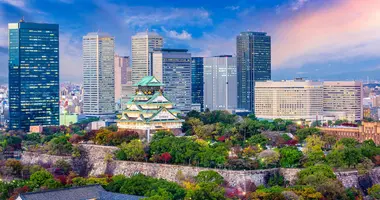
City break - Osaka tour Self-Guided Tours in Japan
- Duration : 8 days
- Locations : Osaka
- Included : Airport Transfers, 3* Hotels, Non-flight transportation, Guided activity, Travel diary, Pocket wifi, Assistance
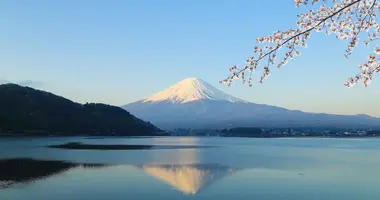
Tokyo, Mount Fuji & Kyoto Self-Guided Tours in Japan
- Duration : 10 days
- Locations : Tokyo, Hakone Mt Fuji, Kyoto
- Included : Airport Transfers, 3* Hotels & Ryokan, Non-flight transportation, Guided activity, Travel diary, Pocket wifi, Assistance
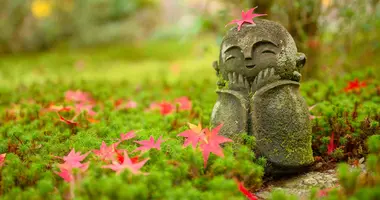
Japanese Immersion Self-Guided Tours in Japan
- Duration : 13 days
- Locations : Tokyo, Hakone Mt Fuji, Hiroshima, Osaka, Koyasan, Kyoto
- Included : Airport Transfers, 3* Hotels & Ryokan, Non-flight transportation, Guided activities, Travel diary, Pocket wifi, Assistance
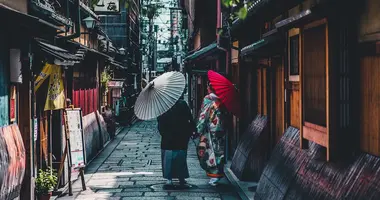
Romantic tour in Japan Self-Guided Tours in Japan
- Locations : Tokyo, Hakone Mt Fuji, Okayama, Miyajima, Kyoto
- Included : Airport Transfers, 3* Hotels & Ryokan, Japan Experience house, Non-flight transportation, Guided activities, Travel diary, Pocket wifi, Assistance
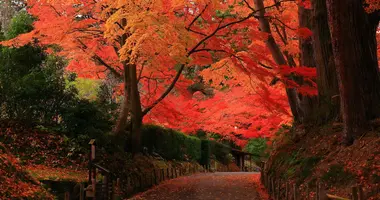
Tohoku: Traditional Japan Self-Guided Tours in Japan
- Duration : 18 days
- Locations : Kyoto, Tokyo, Nikko, Sendai, Tohoku, Aomori
- Included : Airport Transfers, 3* Hotels & Ryokan, Japan Experience house, Non-flight transportation, Guided activity, Travel diary, Pocket wifi, Assistance
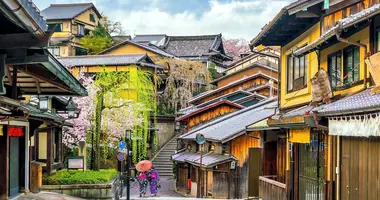
Slow Travel Japan Self-Guided Tours in Japan
- Duration : 21 days
- Locations : Tokyo, Hakone, Kyoto, Osaka, Hiroshima, Okayama
- Included : 3* Hotels & Ryokan, Airport Transfers, Non-flight transportation, Travel diary, Pocket wifi, Assistance, Activities
Our activities in Kyoto, Nara, Tokyo, Sapporo, Sounkyo, Akan-ko, Furano
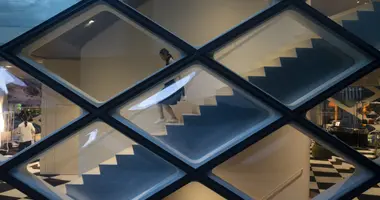
Tokyo Architectour Activities in Tokyo
- Duration : 8 hour
- Location : Minato City
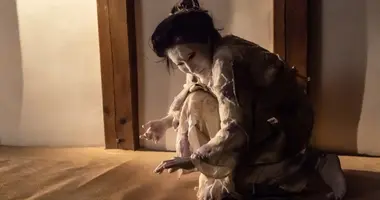
Butoh Dance Activities in Kyoto
- Duration : 45 minute
- Location : Kyoto
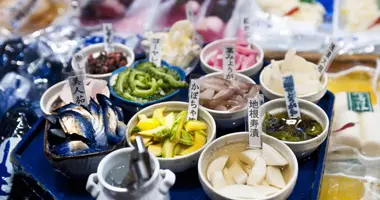
Culinary tour in Kyoto Activities in Kyoto
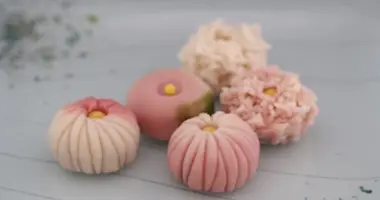
Wagashi, Japanese pastry Activities in Kyoto
- Duration : 1 hour
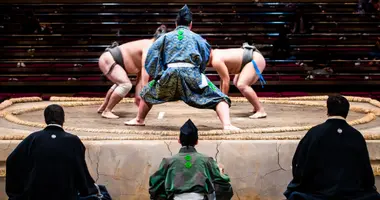
Tokyo Sumo Tournament (January, May and September) Activities in Tokyo
- Duration : 3 hour
- Location : Tokyo
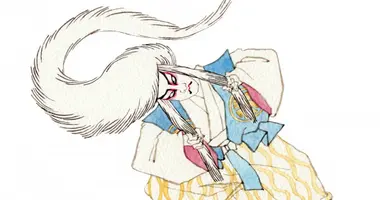
Kabuki, the Japanese popular theatre Activities in Tokyo
Please select your country on the list below:
- Switzerland
- United Kingdom
- Other countries
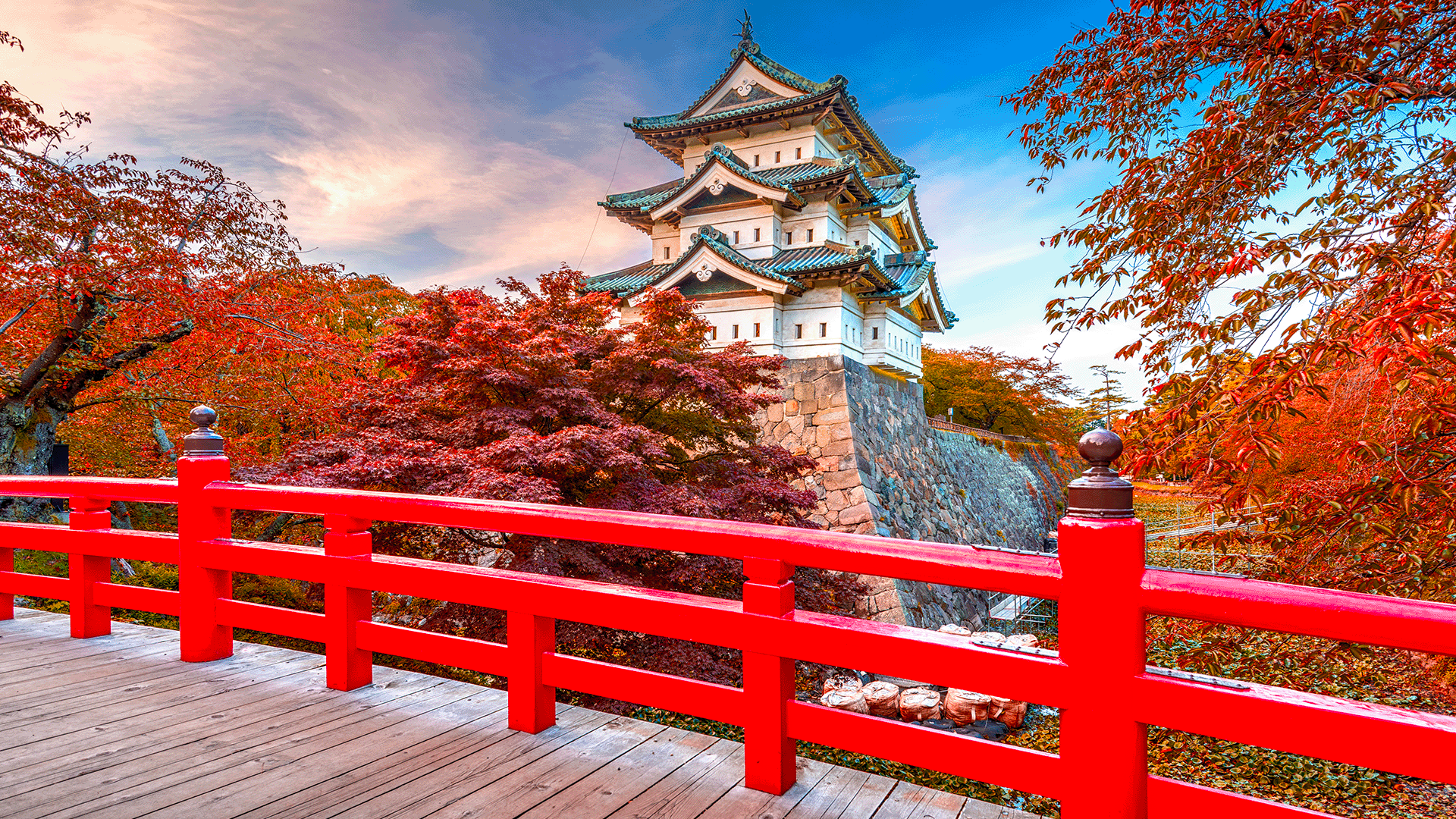
Northern Japan 2024/25 Small-Group Tour with Sapporo, Lake Toya Cruise, Sake Tasting & Shinkansen Bullet Train

Sapporo, Otaru, Rusutsu, Hakodate, Aomori, Kuroishi, Hachinohe, Hakone, Kamakura, Yokohama, Tokyo
Where scenic landscapes, enriching heritage and modern marvels converge, dive into the soul-stirring allure of Northern Japan on this 13-day small-group tour (max. 24 travellers). Cruise across the hypnotically blue surface of Lake Toya surrounded by lush hills and discover the allure of the star-shaped Fort Goryokaku, where legends of the Samurai are told. See Hirosaki Castle, seemingly frozen in time and surrounded by seasonally blossiming cherry trees, then traverse the scenic Oirase Gorge, where crystal-clear streams meander through vibrant greenery. Marvel at Mount Fuji's grandeur as you over the calm Lake Ashinoko before it, and delve into the heritage of Hachinohe's sake production during a tasting of this traditional rice brew.
Zip between cities on included bullet train rides and enjoy this thrilling testament to Japanese ingenuity as your well-informed guide educates you about everything from Owakudani's geothermal wonders to the historic styles of architecture featured in Sankeien Garden and the significance of the ancient Asakusa neighbourhood's Sensoji Temple, dedicated to Buddhist practice. Take in the dynamic allure of Yokohama's Chinatown – one of the oldest and largest in the world – and stop by fresh food stalls of Tokyo's Tsukiji Outer Market. With its captivating blend of serene landscapes and historic gems, Japan's north offers you the chance to dive deep on this unsurpassable odyssey.
Your journey takes you to: Sapporo – Otaru – Rusutsu – Hakodate – Aomori – Kuroishi – Hachinohe – Hakone – Kamakura – Yokohama – Tokyo.

Konnichiwa! Welcome to Japan. Upon arrival in Sapporo, make your own way to your hotel for check in, and a comfortable rest before your journey begins.
Today your journey through Northern Japan begins. From Sapporo, head northwest to Otaru, a small harbour town with a well-preserved canal, where you'll enter the renowned glassware haven of Kitaichi Garasukan. Built into a heritage shipping warehouse, this treasure trove of artistic wonders featuring delicate ornaments and functional glass pieces from all around the world. Climb to the second floor to discover the remarkable tea room there, fantastically lit only by glass lamps.
Continue your adventure to the Music Box Museum, a whimsical sanctuary brimming with the melodic charm of more than 80,000 exquisitely crafted music boxes. Listen as delicate tunes echo through the air, with each box telling a unique story through its intricate design. Complete your port visit with a wander along the idyllic Otaru Canal, where history and romance intertwine. Admire vintage warehouses and the picturesque bridges connecting them to the piers along Ishikari Bay.
This evening, return to Sapporo for a restful slumber.
This morning enter the annals of Hokkaido's past as you explore its Historical Village, an immersive open-air museum that breathes life into history. Wander among more than 60 meticulously preserved historical buildings, each telling a tale of bygone eras. From quaint homes to charming schools and even a nostalgic post office, this museum offers a fascinating glimpse into the rich tapestry of Hokkaido's heritage.
Transition from history to nature as you journey from vibrant Sapporo to the tranquil beauty of Rusutsu. Watch as the landscape transforms, giving way to a picturesque alpine backdrop, before checking into your hotel for the evening.
From Rusutsu, you'll head to enchanting Hakodate, with a stop at the mesmerising Lake Toya along the way. Nestled within a volcanic caldera, Lake Toya is a haven of natural beauty surrounded by lush fields and forests. Embrace tranquillity as you embark on a cruise across the water's mesmerising surface. Feel the gentle breeze as you soak in panoramic views of the majestic Mount Yotei – an active stratovolcano standing tall in the distance.
Savour dinner among your travel companions this evening, perhaps taking time after to capture the view of shimmering Hakodate by night from a high vantage point, before heading to your room to rest.
After breakfast at your hotel, embrace morning by exploring the enchanting Fort Goryokaku, set amid its star-shaped canal. With manicured banks, adorned with lush cherry blossoms in spring, this site offers a picturesque blend of history and natural beauty. Wander through the fortress grounds, originally constructed during the Edo Period to defend Hakodate, they later became the site of a samurai civil war before reemerging as a public park in the 20th century.
Next, brace yourself for your first of two exhilarating journeys aboard the Shinkansen bullet train, covering the distance to Aomori in just one hour. Feel a rush as the landscape whizzes by, unveiling the diverse vistas of Japan's scenic countryside.
Upon reaching Aomori, delve into local culture at the Nebuta Museum Wa Rasse, which features floats from the Aomori Nebuta Festival, held each year in August. Marvel at the masterpieces on display, each telling a story of the region's cultural heritage.
After a fulfilling breakfast, begin your day by exploring the timeless Hirosaki Castle. Built in the Edo Period, it stands as a testament to Japan's rich heritage, surrounded by cherry blossom trees. Continue your exploration along the charming Nakamachi Komise Street, a nostalgic avenue lined with traditional shops and eateries, still standing in their original state, built with wood from the Hansei Period.
Take a hands-on detour to the Tsugaru Traditional Craft Centre, where artistry comes to life. Engage in a Tsugaru lacquerware class where you can unleash your creativity and decorate your own unique piece of cypress-wood diningware. Delve into the intricate techniques of this time-honoured craft, creating a tangible connection to the region's heritage.
Following a sumptuous dinner, return to your hotel for a leisurely evening.
This morning, journey to the scenic marvels of Oirase Gorge. This river valley's crystal-clear streams extend from the calm waters of Lake Towada, reaching nearly 14 kilometres into the lush greenery of Honshu.
Continue your exploration to the Towada Art Center, a series of white monoliths housing contemporary art installations overflowing with ingenuity and imagination, pushing traditional boundaries.
As the day unfolds, treat your taste buds to the delights of the Hasshoku Center, an expansive marketplace offering a variety of fresh seafood and regional specialties, then complete your day with a sake tasting. Sample some of the finest varieties made from fermented local rice, each sip carrying the essence of the region's rich brewing tradition.
Today, relax as you embark on another thrilling bullet train journey from the Hachinohe area to Hakone. Upon arrival, enjoy the rest of your day at leisure, stopping for a sumptuous dinner before retiring to your hotel room.
Begin your day with a scenic trip to Lake Ashinoko. Here, you'll set out on a cruise across tranquil waters as you take in the iconic, snow-capped Mount Fuji – Japan's highest mountain and an active volcano.
From here, ascend to new heights on the Hakone Ropeway, a cable-car lift travelling all the way to Owakudani, a geothermal valley that captivates with its sulphurous hot springs and unique offerings. Witness the earth's raw power as steam rises from the earth, creating an otherworldly atmosphere. Perhaps you may like to taste the traditional local delicacy – a black egg, boiled in the valley's spring to give the shell its distinct colour.
Following a delicious dinner, enjoy the evening at your leisure.
Depart early this morning to leave for Kamakura, otherwise known as Little Kyoto, and marvel at the Great Buddha. This colossal bronze statue is located on the grounds of Kotokuin Temple and at 11 metres high, stands the second largest in the country.
Venture into the heart of Kamakura to wander up the lively Komachi-dori, a modern street in the centre of this heritage city full of trendy cafes and boutiques. Here, you may choose to enjoy lunch at one of the many local eateries.
Conclude your day at the ancient Tsurugaoka Hachimangu, a prominent Shinto shrine engulfed in lush greenery. The retreat's grounds stand as a testament to Kamakura's enduring spiritual legacy, offering a serene escape in the midst of vibrant city life.
Today, visit the largest city in the Kanagawa Prefecture – Yokohama, the bustling port born from a small fishing village. Begin your day in peaceful Sankeien Garden, a masterpiece of Japanese landscaping. Wander through this spread of historic buildings and seasonal flora, each installation telling a story of timeless beauty.
Transition from the tranquillity of Sankeien to the vibrant energy of Chinatown, a cultural hub that beckons with its bustling streets and delectable cuisine. Dive into a colourful atmosphere, exploring the myriad shops and eateries that line the vibrant streets of this cultural burrough.
Continue to the iconic Red Brick Warehouse, a historic complex transformed into a vibrant mall of shops, restaurants and event spaces. Marvel at the architectural mastery of this repurposed landmark, where the echoes of Yokohama's industrial past blend seamlessly with contemporary life.
From Yokohama, enter Japan's vibrant capital, Tokyo, where each suburb and side street captures a new element of the city's many facets. Ignite your tastebuds this morning at the Tsukiji Outer Market, where you can find fresh seafood and produce alongside hand-crafted knives and cookware of the highest quality. Sample delights from sushi to street snacks as you wander among the stalls.
Next, set your sights skyward as you marvel at the Tokyo Skytree, one of the tallest structures in the world. Ascend to dizzying heights and be rewarded with panoramic views of the metropolitan sprawl below. Standing as a testament to Tokyo's modernity, this soaring futuristic structure offers a breathtaking contrast to the city's traditional charms.
Conclude your day in historic Asakusa district at Sensoji Temple, Tokyo's oldest and most revered Buddhist temple. The Thunder Gate at its entrance is a popular photo spot, and nearby you'll find the large shopping strip of Nakamise, where you may like to explore this evening at your leisure.
After breakfast, it's time to say sayonara to enthralling Japan and your exploration of its Northernost reaches. Upon checkout, make your own way to the airport for your onward journey.
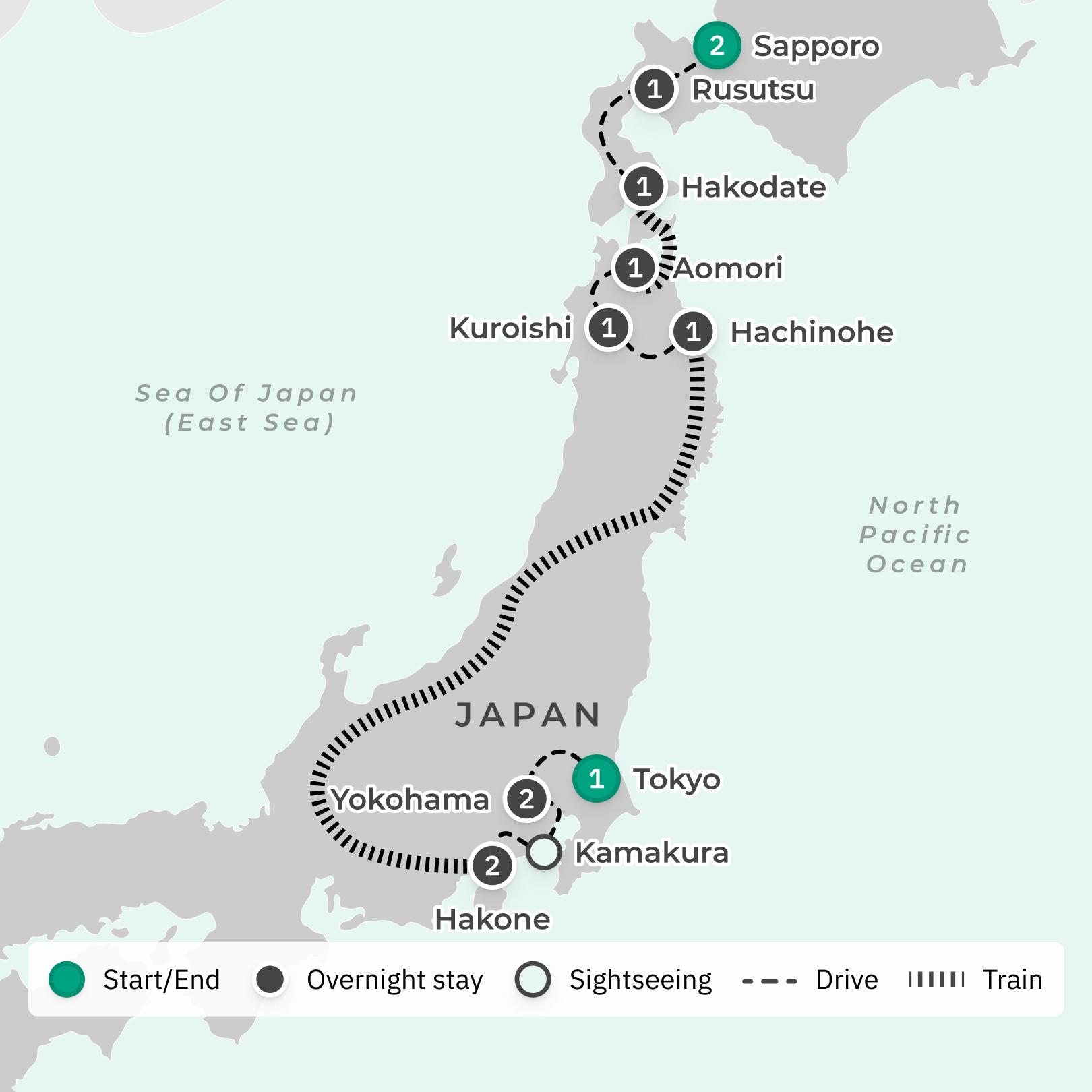
Travel through Japan's northernmost reaches in one of the most famed form of transport linked with Japan – the Shinkansen bullet train. Following its successful launch in Japan more than 50 years ago, the Shinkansen's success has influenced public transport in countries all over the world, including France, China, Taiwan and Germany. Named for their ergonomic bullet shape, which reduces friction on the tracks and thereby significantly cuts down travel time, the bullet train will carry you on two separate journeys in comfort and style as you traverse the land from Sapporo to Tokyo. You'll even soar beneath the sea via the 50-kilometre-long Seikan Tunnel on your way from Hakodate to Aomori. Experience the thrill of zipping past landscapes at speeds upwards of 300 kilometres per hour, with extraordinary vistas unfolding in the distance.
Lake Ashinoki is a natural marvel, the filled-in basin of a crater caused by the volcanic eruption of nearby Mount Hakone over 3,000 years ago, forming a still lake among untouched woods and onsen villages. As you glide across crystal waters, you'll have a front-row seat to its extraordinary scenery. Keep an eye out for touring replica pirate ships based on 18th-century war vessels. If the day is clear, you'll be treated to panoramic views of the iconic, snow-capped Mount Fuji beyond the surrounding hills. And at the lake's southern end, the striking vermillion of a torii gate, part of Hakone Shrine hidden between the trees, gracefully floats above the water.
- 12 nights of handpicked accommodation
- 17 meals included – 12 breakfasts and five dinners
- Ride the high-speed Shinkansen bullet train on two separate journeys
- Wander the grounds of star-shaped Fort Goryokaku where samurai used to train
- Discover the pristine piece of Lake Toya on a scenic cruise
- Marvel at Hirosaki Castle's timeless elegance
- Follow the crystal-clear streams of Oirase Gorge in Honshu
- Savour a tasting of authentic sakes, straight out of Hachinohe
- Take in unparalleled views of Mount Fuji on a cruise atop Lake Ashinoko
- Spend a full day each exploring Japan's two largest cities – Yokohama and Tokyo
- Gain insight from your dedicated English-speaking tour guide
- Travel in a comfortable coach with luggage transfers throughout
- All entry fees as per the itinerary
Booking Summary: After you book, please follow the instructions in your booking summary email and ensure you complete your traveller information details in full.
- Luxury Escapes asks that you please complete your Traveller Details form within 7 days of booking. Following its completion, our Tours Concierge Team will be in touch to assist with any additional arrangements – including flights.
- Traveller Details are required in full to confirm all arrangements for your tour. Please complete the Traveller Details form as soon as possible in your ‘My Escapes’ account. Failure to complete the form within 60 days of departure may result in losing your spot on the tour.
- If your booking is on a non-guaranteed departure, this initial email is not your tour confirmation. Tours often require a minimum number of travellers to go ahead, so your departure may not be guaranteed immediately.
- Please note that for guaranteed departures, a minimum of two people are required to book. In the event that only one passenger has booked, you will be given the opportunity to move your departure to another date.
- Once there is an update on the status of your tour, you will be contacted via email by the Luxury Escapes’ Tours Concierge Team, and they will advise if the tour has been confirmed. Please do not book flights or make any non-flexible arrangements until you receive this update.
- Should you require assistance with your tour, please contact our Tours Concierge Team at [email protected], who will be happy to assist with any of your queries and who will support you right up until you return from your journey.
- For tours that allow children, the child must be 12 years or over and must share a room with an adult.
- Children are the same price as adults.
7-Day Change of ‘No Questions Asked’ Refund Guarantee:
- Things don’t always work out. Our 7-day Change of Mind Guarantee is there to help. Bookings (except for cruise bookings and flights which are subject to the cancellation terms of the relevant supplier) may be cancelled with a full refund if cancellation occurs strictly within 7 days from the date of purchase and provided that the cancellation is made no less than 90 days prior to the departure date.
- All booking Deposits are non-refundable.
- After final payment is received, bookings are non-refundable unless otherwise provided for in our refund policy.
- Where Luxury Escapes Tours may allow a cancellation due to exceptional circumstances (and at its sole discretion) and where a cancellation/credit is not otherwise permitted, a service fee of A$300 per person will apply.
- For Trusted Partner operated tours, additional fees may apply.
Date Changes
- Any changes or cancellations made within the 7-day Change of Mind Guarantee, where applicable, will not incur any fees unless otherwise restricted to the product Fine Print. Booking changes may include, but are not limited to, name changes or name corrections.
- For date changes made after the 7-day Change of Mind Guarantee, the cost of your new tour must be of equal or greater value than your current tour.
- If the request is a change from a tour of higher value to a tour of lesser value, any difference in the tour prices will not be refunded.
- Changes are not permitted once the final payment has been collected.
- Date change conditions listed above do not apply to flights or pre- and post-tour accommodation booked with us. Flight fulfilment and changes are governed by the airline(s) selected at the time of booking. For your air travel, you are bound by the terms and conditions and fare rules of the selected airline(s). For pre- and post-tour accommodation, these reservations are not directly linked to your tour and may require a separate cost to change, as stated in your ‘My Escapes.’
Itinerary Amendments & Changes
- Occasionally our itineraries are updated prior to departure. This may be to accommodate changes in weather, public holidays, common seasonal changes to timetables and transport routes, and unforeseen circumstances.
- In the event of a change in itinerary (for safety reasons or due to events outside of our control) that results in cancellation or change fees in respect of flights (or other parts of your travel) we will notify you as soon as practicable.
- You will be responsible for any associated costs or will otherwise have the right to a refund (less any costs incurred or paid to third parties).
- After completing your booking, your tour cost may be subject to additional surcharges due to factors beyond the control of Luxury Escapes.
- Where the cost of delivering your selected tour materially increases between the time of purchase and delivery, we reserve the right to increase the balance due. Increases may be related to currency fluctuations, taxes, airfares, fuel surcharges, tour costs, or government changes due to health and safety restrictions. A material increase will be considered one in excess of 10% of the package price.
We reserve the right to modify prices for marketing and commercial reasons. Please note that full terms and conditions apply. Refer to website’s terms and conditions.
Accommodation for the duration of your tour is included in the Tour package.
- You can find relevant accommodation details for each day of the itinerary on the Tour offer page, or in your My Escapes.
Please note:
- Accommodation is subject to availability and may be substituted for a hotel of a similar or higher standard without notice.
- Rooms will be made available after 3pm on the day of arrival. Checkout is required by 10am. Early check-in and late checkout may be available upon request. Subject to availability. Additional fees may apply.
- Maximum room capacity (Twin Share) is two adults. Maximum room capacity (Solo) is one adult.
Pre- & Post-Tour Accommodation Pre- and post-tour accommodation can be booked to extend your stay before or after your tour by contacting our Tours Concierge Team at [email protected] .
Luxury Escapes uses a range of accommodation partners. For pre- and post-tour accommodation options where we can offer the same hotel as the start and end of your tour, your pre- and post-tour accommodation will be booked independent of your tour. If the hotel for your tour changes, this will be independent of your pre- or post-tour accommodation booking. In this instance, change fees may apply on your pre- or post-tour accommodation, if you choose to change; change fees can be found in your ‘My Escapes.’
For pre- and post-tour accommodation bookings, you may be required to check out of your room and check in again on the first or last day of your tour. You will need to confirm these details directly with hotel.
Please contact the Tours Concierge Team at [email protected] for further information.
- Return international flights
- Roundtrip airport transfers
- Single supplement
- Meals/drinks not stated in the itinerary
- Optional activities/tours, personal expenses/transfers not mentioned
- Travel insurance (required)
- Tips and gratuities
- Dining inclusions do not include drinks (unless otherwise stated). Menus are subject to change without notice.
Baggage Restrictions
- Passengers are permitted one piece of baggage with a maximum weight of 20kg on tour.
- Passengers may also bring one smaller, personal bag on tour.
Travel Insurance
- Travel insurance is required on all our tours, which (at a minimum) covers medical expenses and repatriation. You may not be permitted to join the tour group if evidence of travel insurance is not provided prior to your trip. If you are unable to obtain travel insurance for whatever reason, you may be required to sign a waiver and/or provide a letter from a medical practitioner which confirms you are fit for travel. For any enquiries regarding travel insurance, please call 1300 88 99 00 or email [email protected] .
Passports & Visas
- A visa may be required. It is the traveller’s responsibility to ensure they’re holding a current visa for the countries they’re visiting. If the traveller is on a non-Australian passport, a valid re-entry visa may be required.
- You are responsible for visas, entry, health and other requirements, and any documents required by laws, regulations, orders and/or requirements of countries visited. Luxury Escapes and/or its servants and agents are not responsible for passport and visa requirements or for any loss you sustain for failing to comply with laws, regulations, orders and/or requirements of countries visited.
- A valid passport with a minimum validity of 6 months beyond your return travel date is required for all passengers (including children and infants).
Traveller Details
- Traveller Details must be completed for each individual traveller. This information can be added directly to your ’My Escapes’ account.
- Travellers must advise of any medical conditions or dietary requirements. Failure to provide such information in advance of your tour may result in an inability to cater to your requirements.
- We work with exceptional local tour providers to present uniquely crafted packages that encompass sightseeing tours and excursions. Our tour provider partners are dedicated to making every effort to accommodate specific requirements. However, it should be noted that the extent to which they can address mobility and accessibility needs may vary, depending on the nature of the sightseeing tour and activities involved. Please contact [email protected] so we can advise whether your specific needs can be accommodated.
- Special dietary requirements can be catered for in most cases, however, on occasion this may not be possible due to location, lack of availability of unique ingredients, and other extenuating circumstances. It is always advised to carry any necessary supplies with you.
- Passport details are required for all bookings. In some cases, a digital copy of your passport may be requested by Luxury Escapes to book certain elements of your trip.
- If a photo of your passport is requested, failure to provide valid photo ID will result in your booking being cancelled and all monies paid remaining non-refundable. When requested, a digital copy of your passport must be provided for each guest at least 90 days prior to your tour departure.
- Should you require any assistance with your Traveller Details, please contact our Tours Concierge Team at [email protected] .
- Relaxed: Leisurely pace with limited walking or physical demands. Opportunity for ample free time and leisure activities. Suitable for individuals seeking a laidback experience.
- Moderate: Usually more than one day in a location. Balanced mix of exploration and physical engagement. Suitable for participants with a reasonable level of fitness. Exploring cities on foot, visiting landmarks and guided excursions. Requires a moderate level of stamina and physical activity.
- Active: Activities most days. Generally, not staying in a location for two days or more. Suitable for participants with high fitness levels and a sense of adventure.
Travel Styles
- Fully Guided Tour: You'll have a tour director and driver with you throughout the entire trip, from start to finish.
- Partially Guided Tour: You'll have a tour driver and local guides at specific locations or portions of the trip, but not the entire time. There might be different local guides for different regions.
- Self-Guided Tour: You will not have a guide for your trip. You will be provided detailed trip notes with elements, such as accommodation and transport, pre-booked for you.
Health and Fitness Acknowledgement:
- Travellers acknowledge that they are required to have a good level of health and fitness to undertake the activities in this tour.
- There are limitations to the degree of accommodations that can be made if travellers are unable to partake in the included activities on this tour. Please consider suitability as additional costs could apply.
- Travellers also acknowledge and agree that neither we nor the tour provider will be able to provide medical or other assistance in the event that they are unable to complete any aspect of the tour as a result of their health or physical condition (nor are we liable for any loss, damage, expense, injury or death arising from such).
Your tour begins at your Sapporo accommodation and ends at your Tokyo accommodation, WITHOUT airport transfers.
Roundtrip flights are not included in your package and must be purchased separately. ** If your chosen tour departure date is guaranteed at the time of booking, you may be able to purchase flights immediately. If your tour departure date is not yet guaranteed (still pending minimum numbers), flights should not be booked until you receive an update on the status of your tour.**
Please book your flights to arrive at New Chitose Airport (CTS) at any time on Day 1 and depart from either Haneda Airport (HND) or Narita International Airport (NRT) after breakfast on Day 13.
Roundtrip airport transfers are NOT included in your tour, please plan accordingly.
Important: Please allow for travelling time from international countries. International flights are not included in your package and must be purchased separately. It is your responsibility to make your own travel arrangements and ensure that you arrive at your starting location on your chosen tour start date.
A visa may be required for the destination you are visiting. It is each traveller's responsibility to ensure they are holding a current visa. Please take the time to visit our preferred vendor website, Visas Direct , to assist you with any visa application requirements and processes. If you require any supporting documentation when applying for your visa, please let us know and we will be more than happy to assist. Click here to visit the website.
Need flights? Our dedicated flights concierge can assist with all your flight requirements (subject to availability). Contact [email protected] .
Important Destination Information:
Time zone: GMT+9
Telephone: +81
Currency: Japanese Yen (JPY)
Accessing money: Cash is widely accepted and the preferred method of payment. ATMs are readily accessible in 7-Eleven. Ask your tour leader/guide about the best place to change money once you begin your tour. Please note: some ATMs may only accept four-digit pins.
Language: Japanese
Climate: Japan has four distinct seasons: cherry blossoms in spring (March-May), cool and leafy in autumn (September-November) and humid and muggy at times in summer (June-August) with snowfall at higher altitudes during winter (December-February).
We use cookies on this site to enhance your user experience. If you continue to browse you accept the use of cookies on our site. See our Cookie Policy for more information.
- Media & PR
- Meetings & Events
- School Groups
- Travel Trade
- Select Language 简体中文 繁體中文(香港) 繁體中文(臺灣) India (English) Bahasa Indonesia 한국어 ภาษาไทย Tiếng Việt Singapore (English) Philippines (English) Malaysia (English) Australia/New Zealand (English) Français Deutsch Italiano Español United Kingdom (English) Nordic countries(English) Canada (English) Canada (Français) United States (English) Mexico (español) Português العربية Japan(日本語) Global (English)
- India (English)
- Bahasa Indonesia
- Singapore (English)
- Philippines (English)
- Malaysia (English)
- Australia/New Zealand (English)
- United Kingdom (English)
- Nordic countries(English)
- Canada (English)
- Canada (Français)
- United States (English)
- Mexico (español)
- Global (English)
- Fujiyoshida
- Shimonoseki
- Ishigaki Island
- Miyako Island
- Kerama Island
- Tokyo Island
- Koka & Shigaraki
- Hida Takayama
- Ginza, Nihonbashi
- Beppu & Yufuin (Onsen)
- Ginzan Onsen
- Nagasaki Islands

- Kumano Kodo
- Shikoku Karst
- Amami Oshima
- Hachimantai
- Omihachiman
- Aizuwakamatsu

- Diving in Japan
- Skiing in Japan
- Seasonal Flowers in Japan
- Sustainable Outdoors
- Off the Beaten Track in Japan
- Scenic Spots
- World Heritage
- Home Stays & Farm Stays

- Japanese Gardens
- Japanese Crafts
- Temple Stays
- Heritage Stays
- Festivals and Events
- Theater in Japan
- Japanese Tea Ceremony
- Cultural Experiences in Japan
- Culture in Japan

- Local Cuisine Eastern Japan
- Local Cuisine Western Japan
- Local Street Food
- Japan's Local Ekiben
- Japanese Whisky
- Vegetarian and Vegan Guide
- Sushi in Japan Guide
- Japanese Sake Breweries

- Art Museums
- Architecture
- Performing Arts
- Art Festivals
- Japanese Anime and Comics
- Japanese Ceramics
- Local Crafts

- Scenic Night Views
- Natural Wonders
- Theme Parks
- Samurai & Ninja
- Iconic Architecture

- Wellness Travel in Japan
- Japanese Ryokan Guide
- A Guide to Stargazing in Japan
- Relaxation in Japan
- Forest Bathing (Shinrin-yoku)

- Experiences in Japan
- Enjoy my Japan
- National Parks
- Japan's Local Treasures
- Japan Heritage
- Snow Like No Other
- Wonder Around Japan

- Visa Information
- Getting to Japan
- Airport Access
- COVID-19 Practical Information
- Anime Tourism
- Countryside Stays
- Sustainable Travel
- Accommodation
- Sample Itineraries
- Travel Agents
- Deals and Tours

- Traveling by Rail
- How to Travel by Train and Bus
- JR Rail Passes
- Train Passes and Discounted Tickets
- Scenic Railways
- Renting a Car
- Yokohama Cruise Port Access
- Travel Brochures
- Useful Apps
- Accommodation Types
- Online Reservation Sites
- Eco-friendly Accommodation
- Luxury Accommodations
- Traveling With a Disability
- Hands-free Travel
- How to Book a Certified Tour Guide
- Volunteer Guides
- Tourist Information Center

- Japanese Manners
- Sustainable Travel in Japan
- Spring in Japan
- Summer in Japan
- Autumn in Japan
- Winter in Japan
- Seasonal Attractions
- Monthly Events Calendar
- Cherry Blossom Forecast
- Autumn Leaves Forecast

- Japan Visitor Hotline
- Travel Insurance in Japan
- Japan Safe Travel Information
- Accessibility in Japan
- Vegetarian Guide
- Muslim Travelers
- Safety Tips

- All News & Blog
- Travellers Blog
- Guides to Japan
- Stories of Japan
- The Other Side of Japan
- Media Releases
- JAPAN Monthly Web Magazine

My Favorites
${v.desc | trunc(25)}
Planning a Trip to Japan?
Share your travel photos with us by hashtagging your images with #visitjapanjp
Why Northern Japan is a fabulous place to Travel
“It’s so green”, murmurs the gentleman seated next to me, as our plane descends into the regional airport of Akita in Northern Japan.
It is just over an hour since our take off from Haneda Airport, views over the Tokyo skyline spectacular – the clear day showing off Mt Fuji in all its glory. Yet the landscape now is a vibrant patchwork of forest and precison neat rice fields – another world all together.
The scene mid-summer is green – and as I am about to find out; clean, welcoming, historic, rustic, fascinating and very much why Northern Japan is a fabulous place to travel.

On previous visits our family has been thrilled by the temples in Kyoto, enjoyed exploring every corner of Tokyo, skied the Alps of Nagano. Yet the Regional Areas (known as prefectures) are unchartered territory – Northern Japan is where you should be visiting for a taste of Japanese Culture off the beaten track.
I hesitate to make comparisons between countries, however if pressed I would say first impressions make me think of New Zealand (replace the rice fields with wheat fields).
A seamless transfer from our dawn flight from Sydney via ANA (their 787 Dreamliner aircraft are superb); we arrive in Akita in time for morning tea.
Tohoku Region of Japan (North East Region), comprises six prefectures on Japan’s largest island of Honshu.
We visit Akita, Aomori and Iwate – as yet unspoiled by major tourism – one of those destinations you really need visit …now as it won’t stay a secret for long!
I cover quite a bit of ground in five days in ‘Rustic Japan‘ – yet leave feeling there is so much more to discover…
The western side faces the Sea of Japan and has abundant flowing rivers, flatlands, and expanses of rice growing on fertile farmlands (even in the heat of Summer it was green, everywhere). High mountains surround the northern, southern and eastern sides. The inland areas are blanketed with heavy snowfalls in the winter – thus Akita (& Iwate) is known for Skiing in Winter (26 Resorts) and Cherry Blossoms in Spring.
A former castle town and samurai stronghold (often called ‘little Kyoto’). While Kakunodate Castle no longer remains, the town is famous for samurai tradition and the magnificent Cherry Tree display in Spring (late April-early May) – remarkably unchanged since 1620, the samurai district still has some of the best examples of Japanese samurai architecture.
The village is charming, we stroll and view local craftsmen, enjoy a variety of Japanese cuisine (my pick is black sesame ice cream), the gardens are verdant and the museums manageable for even the youngest travellers.
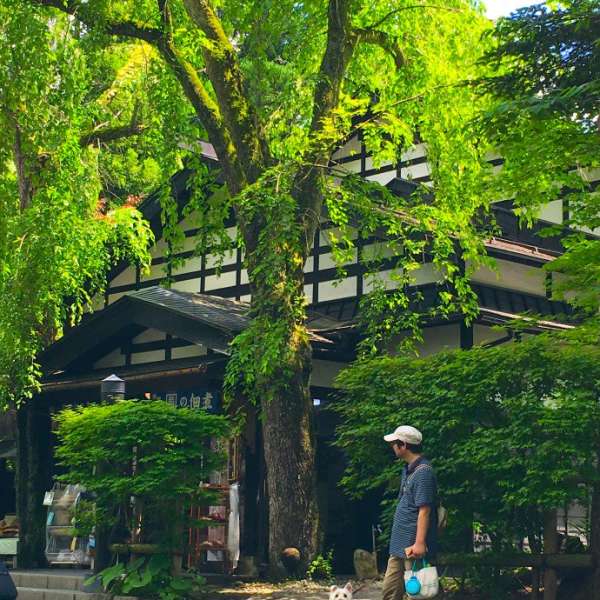
Akita Museum of Art
Designed by renowned architect Ando Tadao. The museum exhibits a large collection of work by Fujita Tsuguharu (1886-1968), also known as Leonard Foujita, who is arguably Japan’s most famous Western style painter. The Akita Museum of Art is one of the few places in the world to exhibit a collection of his works, and features his twenty meter long mural “Annual Events in Akita”, illustrating Akita life in the four seasons, on permanent display as the museum’s focal piece.
(This attraction escaped my attention this time, on the list for my next visit)

Lake Towada
Part of the Towada-Hachimantai National Park and is the largest caldera (volcanic crater) lake on Honshu.
Lake Towada-ko is at the top of a 400-meter-high mountain on the border between Aomori and Akita. A peaceful retreat for hiking and enjoying the natural beauty, well known for the Autumn colours. We spend the night at the Prince Hotel Towada, the mist rising across the Lake at first light is otherworldly – other guests are Japanese, seeking the peace and Onsen experience.

AKITA IS BEST FOR
Everyone…a relatively hassle free opportunity to get out of the well worn travel route and into the Japanese countryside. Even if you travel no further within the Region you will be well served having visited the area surrounding Akita.
Lake Towada (& Oirase Stream) are stunning natural beauties – however I suggest a driving holiday with a languid time frame as they are off the beaten track.
Fly – 60 min from Tokyo Haneda to Akita Airport, and 40 min by bus from the airport to JR Akita Station.
Morioka is the Capital (2.5 hours North of Tokyo by Shinkansen) – Iwate Prefecture gives visitors to enjoy historical sites (Hiraizumi – Temples), Hot Springs (Onsen), nature (Autumn colours, cherry blossom in Spring), action (golf, skiing, watersports, hiking).
Our visit coincides with a local Festival (Chagu Chagu Umako Horse Festival), which on the face of it doesn’t sound like my cup of tea – yet surprises are in store.
We are dropped a few kilometres from the start of the ‘parade’, as the sun climbs higher the vast blue of sky highlights Mt Iwate in the distance – snow just still visible on the peak. Our path takes us along rice fields, past a cluster of Media gathered to capture the colourful event. We reach Sozen-jinja Shrine just as the families finalise their horses and costumes.
200 years ago farmers first organised this event to celebrate the concluion of the hard toil of rice planting.
Today it is a vibrant morning offering an insight to the local community – I feel honoured to be a part of it – my suggestion is to watch the beginning of the parade and enjoy morning tea before visiting the golden Shrine – a magical morning.

The air is filled with the smell of stalls offering local cuisine for sale – its not long since breakfast so I opt for a refreshing Crushed Strawberry Ice…

Have you heard of the tradition of the Wanko Noodle challenge? Neither had I, and it is an Iwate dining experience like no other.
Not for the faint hearted, guests are invited to consume as many bowl of Soba Noodles as they can (a member of our group makes it to 102..) – a certificate issued when you reach 100+ (my efforts a paltry 4 bowls…). A great value ‘when in Rome’ experience.
Several restaurants across Morioka specialize in Wanko Soba.

Sake Tasting
We take a tour through the process of making this Japanese national drink at Asabiraki Shuzo (award wining brewery) – however the highlight is tasting at the tour culmination. I ask if it is appropriate to drink Sake hot or cold – the tip; the finer the brew should be sampled cold – so now you know.

Morioka Handi-Works Square
We make the regional speciality biscuits (peanut, best eaten warm), craft wooden horses (a surprisingly therapeutic activity), and admire centuries old techniques of iron teapot skill. It is a fun location I know my boys would enjoy.

We stay at Shizukuishi Prince Hotel, nestled on the edge of a 36 hole Golf Course & Ski Resort. The Onsen (Hot Baths) overlooks the forest – the guest rooms (recently renovated), offer a fabulous perspective of the surrounding countryside.

Everyone – families will love the variety of activities, skiers will be spoilt for choice and golfers can choose from many stunning (& challenging) courses.
By train – Two hours 30 minutes from Tokyo Station to Morioka Station by the JR Tohoku Shinkansen Line.
The Northernmost region on Honshu, containing the world’s largest virgin forest of beech trees (named a UNESCO World Heritage Site). Reminders of ancient times still abound. Cherry Blossom in this region is said to be so magnificent many Japanese state the experience as the one they would most like to have before dying…
Oirase Gorge
An easy walking trail follows Oirase Stream, stunning in every season – we visit in Summer when Waterfalls are cascade and the cooler air is welcome. The trail is 9 kilometers long and takes about 2.5 hours to walk one way – winding among trees which, while a lush green in spring and summer, turn brilliant shades of red, yellow and orange from late October through early November. We visit enroute to Lake Towada.

Aomori Nebuta Festival
Said to have begun by Shogun Generals to distract enemies. Held in August, a parade of massive Lantern Floats are pulled through the streets.
If you visit at another time of the year kids of all ages will love the colour of Nebuta Warasse Museum, dedicated to showcasing this festival – marvel at the paper art displayed on past floats, learn about the techniques passed through the generations, have fun hands on with the Taiko Drums.

The Rice Paddy masterpieces are certainly uniquely Japanese, farmers in the small village of Inakadate use coloured rice (during summer plantings) to create field sized artworks.

Towada Art Centre
At the permanent exhibition in Towada Art Centre (fabulous glass walkways connect the buildings), 22 works by 21 artists from 12 countries such as Yoko Ono,Choi Jeong Hwa and Australian Ron Mueck are exhibited.
Most of them are large art installations. We lunch at the Cafe, fresh and European style – the adjoining shop sells quality local art and craft.

Make sure you sample some of the Apple Products in Aomori, this is the home of the Fuji Apple, first grown here in the 1930s.
Leisurely Travellers – I can imagine returning when time is not of the essence. I suggest a driving holiday to this Region to be the easiest way to get around and offering the best flexibility. Distances between the different areas are not particularly long by Australian standards, however too far to add to a brief visit.
Aomori City – fly – 80 minutes from Haneda Airport to Aomori Airport. Train – Shinkansen from Tokyo is 3.5 hours.
Lake Towada – 3h 20 min from Tokyo to Shin-Aomori Station by JR Tohoku Shinkansen Line then 135 mins bus to Towada-ko (it stops at Oirase Stream along the way).
WHERE TO STAY IN TOHOKU
Prince Hotels & Resorts are situated in prime locations throughout the Tohoku Region – we stayed in two of their properties (41 throughout Japan).
Prince Hotel Shizukuishi – Ski Resort in Winter and Golfing/Hiking in Summer – stunning mountain location, excellent food & beverage, beautiful Onsen.

Prince Hotel Towada – Open Spring to end of Autumn – a charming lakeside location, perfect for exploring the local nature trails, lovely Onsen in-house, superb restaurant.

FINAL VERDICT:
There is much to explore in Northern Japan. As an adjunct to oft visited larger cities I would absolutely recommend time spent in beautiful,uncrowded Regional Japan. Where nature dominates and the people are welcoming.
There are not many destinations left in the world where you can say you were there first… that is why Northern Japan is a fabulous place to Travel
My trip to Northern Japan (& Tokyo) was generously hosted by Prince Hotels & Resorts. My flights were provided by ANA…nevertheless all views are my own…
About Travellers Blog
- Fukushima 3
- Hiroshima 2
- Tokushima 2
- Kagoshima 1
- Yamanashi 1
- Previous Article
- Back to Overview
- Next Article
- JNTO Sydney
Please Choose Your Language
Browse the JNTO site in one of multiple languages
- +61 7 3368 1966
Home / Small Group Tours /
2025 Cherry Blossom Tour of Northern Japan
Top tour highlights.
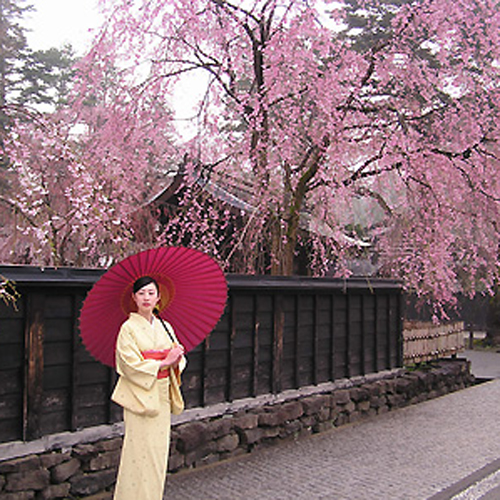
Visit samurai town of Kakunodate
Kakunodate is one of Japan’s most photogenic historic sites with weeping cherries framing the old samurai houses
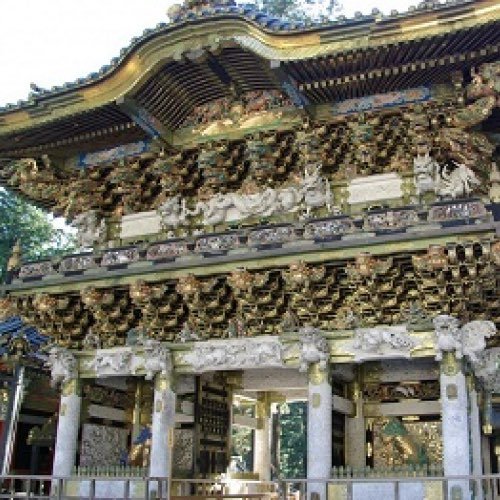
Appreciate the grandeur of Nikko
The ornate grandeur of Toshogu Shrine in UNESCO-listed Nikko, the resting place of Japan’s most famous shogun
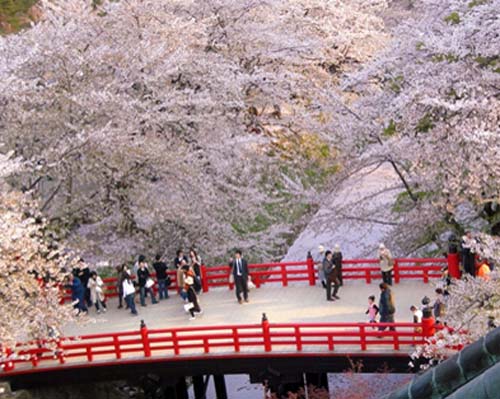
Be surrounded by cherry blossoms in Hirosaki
Boasting 5,000 cherry blossom trees, Hirosaki Castle Park is one of the most popular places in Tohoku in spring
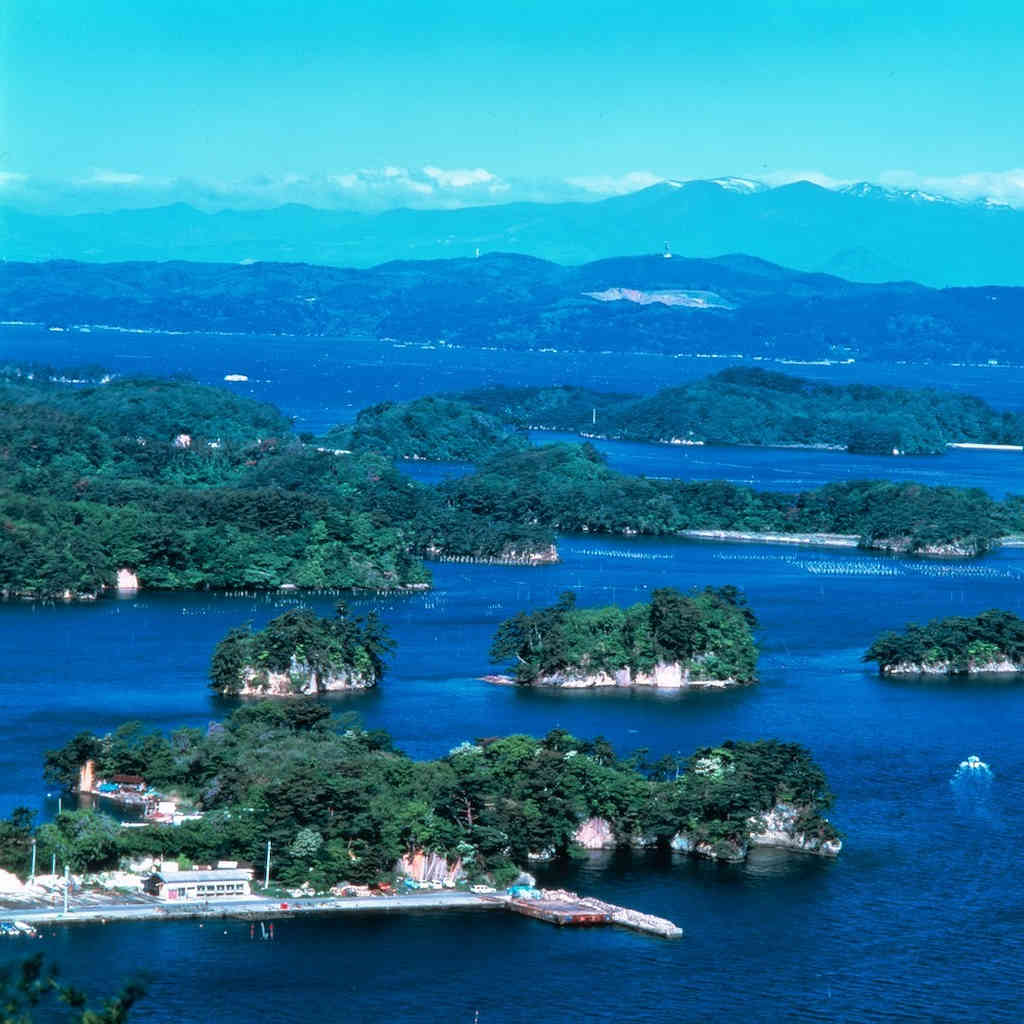
Cruise down the Matsushima Bay
The pine-covered islands of Matsushima Bay, regarded as one of Japan’s top three scenic sights
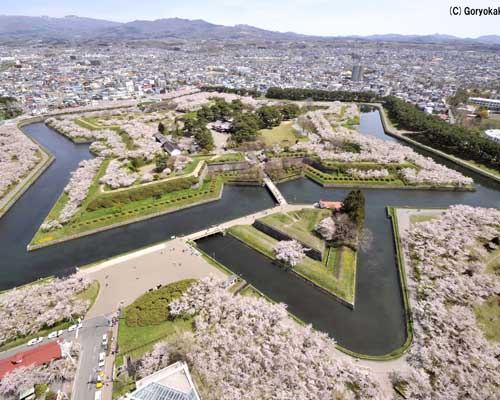
Tour the former foreign trading outpost of Hakodate
Hakodate is a melting pot of cultures with Japanese, Ainu, Russian and other European countries
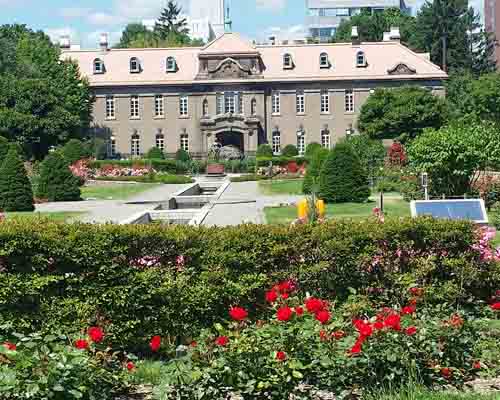
Feel the spring air in Sapporo
Japan's northern most city of Sapporo bursts into spring
Tour Overview
The 2025 Cherry Blossoms Tour of Northern Japan introduces you to a less-hurried side of Japan during the country’s peak cherry blossom season. Leaving Tokyo behind, you journey to Japan’s Tohoku region and the northern island of Hokkaido to experience some of the most spectacular cherry blossoms in the country, which bloom later here than other parts of Japan, and with relatively less crowds!
Over 13 inspiring days, you enjoy the warm hospitality of the people, outstanding regional food, and natural mineral hot-springs – and all against the backdrop of landscapes blanketed in pink. Centuries of isolation have ensured tracts of unspoiled natural beauty, unique traditions, well-preserved samurai towns and historic trading outposts.
This is the perfect tour for those looking for a culturally immersive experience and a Japan that lies beyond the big cities. Our small 8-member groups led by expert local guides mean you benefit from their local knowledge, as well as access local restaurants, lodgings and hidden sites where you can truly experience the unique flavour of Northern Japan, one of Japan’s best-kept secrets!
*From 2025 all our 8-member Small Group Tours will have guaranteed departure from 2 guests.
Welcome to Japan and your 2025 Cherry Blossom Tour of Northern Japan ! On arrival at one of Tokyo’s international airports, you’ll be met by a Journey to the East guide and escorted to your Tokyo hotel by airport bus or train.
Today is an arrival day and no group program is scheduled. Stretch your legs if you like and explore the local neighbourhood around your hotel, such as Ginza . Let us know if you need any local tips. You’ll be staying here for two nights, which will help you ease into the trip and recover from any jet-leg.
*Many of our guests arrive a day or so early to settle in before the tour starts. Please contact us if you’d like us to arrange additional night’s accommodation in the same room as the tour.
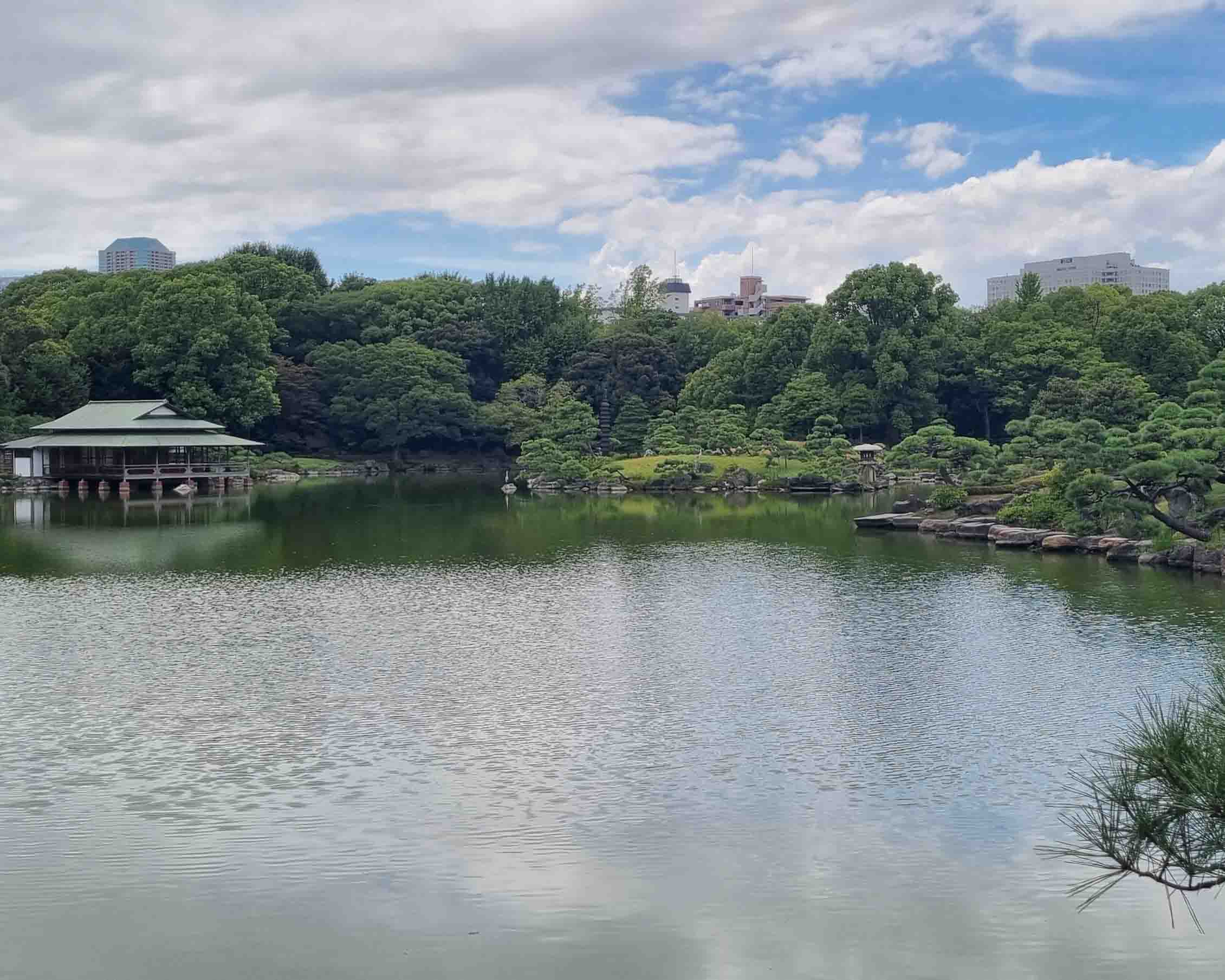
After orientation with your guide, you begin your exploration of Tokyo . A dazzling metropolis characterised by soaring towers and neon, Japan’s capital is also an intriguing collection of small neighbourhoods each with their own distinct flavour. As you explore the city, you’ll also get beyond its surface to discover some of the local places where ordinary Tokyoites live and socialise.
Today you make good use of Tokyo’s efficient train system and head to the lovely neighbourhood of Fukagawa . Despite being close to the business districts of central Tokyo, Fukagawa has a laid-back and serene atmosphere, characteristic of Tokyo's traditional "shitamachi," the old heart of the city. This bayside district was historically a merchant neighborhood, and it still retains an unpretentious, down-to-earth feel. At this time of the year, the area bursts into pink air of cherry blossoms along the rivers.
While you are in the area, you will visit Kiyosumi Garden . Originally built by a local lord in Edo period, the garden was later owned by the Iwasaki family, the founder of Mitsubishi conglomerate as a place to entertain guests and employees. It is an exemplary stroll style garden with a large pond in the middle punctuated by magnificent stones transported from all over Japan.
After a full day’s exploration we head back to our hotel and a welcome dinner at a local Japanese izakaya pub .
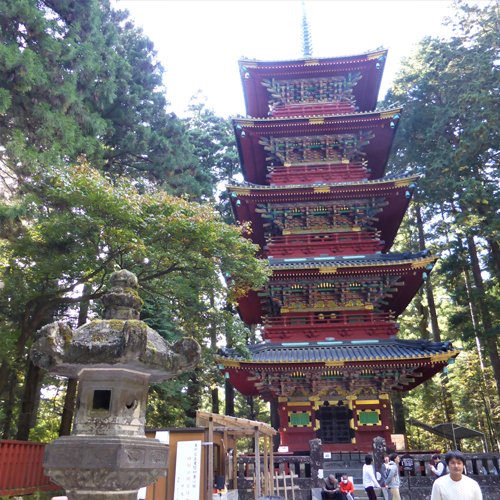
Today you leave Tokyo by express train for Nikko, a UNESCO heritage site . Once a remote mountain hermitage, Nikko rose to fame in 1617 when it became the mausoleum for Tokugawa Ieyasu, Japan’s most famous shogun. We walk through an impressive avenue of giant cedar trees before arriving at the brilliantly decorated Toshogu Shrine . There will be time to explore the extensive complex of shrine and temple buildings as well as beautiful Chuzenji Lake and Kegon Falls, part of Nikko National Park.
Tonight you’ll experience your first hot spring onsen bath of the tour at a traditional ryokan inn. Our guide will talk you through basic bathing etiquette and explain why a visit to an onsen remains one of the nation’s most popular pastimes. Unwind in the mineral waters , enjoy a multi-course kaiseki banquet , and sleep on futon in the simple elegance of a tatami mat room – a quintessential Japan experience!
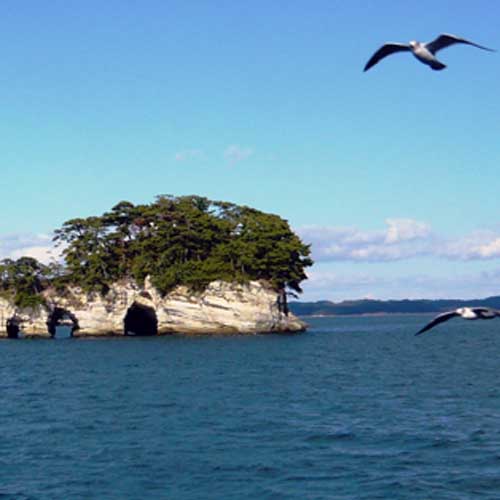
Back onboard the shinkansen, you head north for Sendai and transfer to a local train for the seaside town of Shiogama , where you will see a spectacular sight of the cherry blossoms at Shiogama Shrine. After having sushi lunch, which Shiogama is famous for, you take a bay cruise to reach Matsushima, regarded as one of Japan’s top three scenic sights. Matsushima most famous for its impossibly picturesque bay , dotted with over 250 pine-covered islands. Onboard the cruise boat, you can see up close how sea-winds have shaped the pine trees trunks silhouetted against rocky outcrops.
The Matsushima area is also well-known for its seafood and the buffet-style dinner at your hotel tonight features fresh seafood as well as other local specialties.
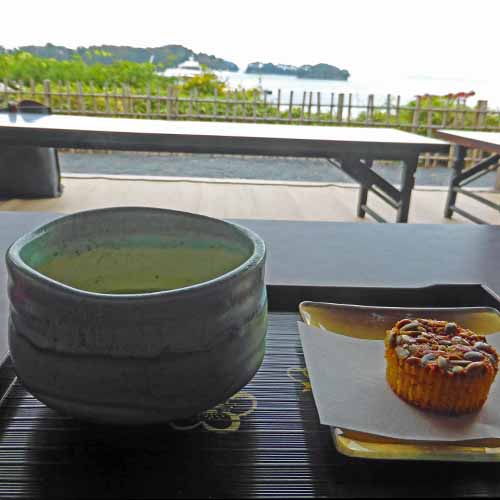
Matsushima Bay is populated with tracts of cherry blossom trees along its coast and you spend the morning walking among the trees and enjoying their beauty in the fresh sea air. You also explore ages-old Zuiganji, Entsu-in and Godaido temples, which rank among the oldest temples in northern Japan. While here, you will sample a bowl of frothy matcha tea and traditional sweets at a centuries-old teahouse.
The afternoon is free to do your own exploring. You may like to visit compact Ojima Island which offers a number of notable sites including some intriguing pilgrim caves, or perhaps try some of the local oysters, Matsushima’s most famous food for lunch.
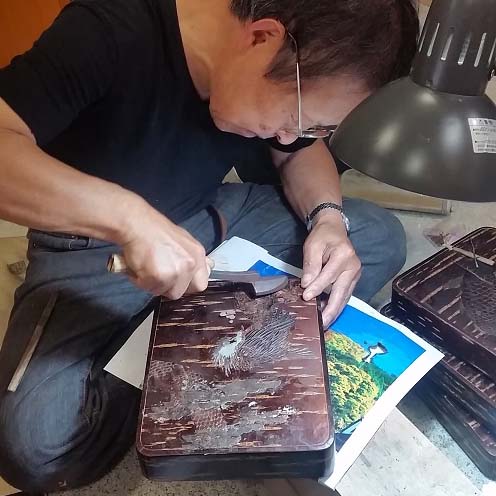
Journeying further north, you take the shinkansen to the former castle town of Kakunodate in Akita Prefecture. Kakunodate is often referred to as Tohoku’s “little Kyoto” due to the rich crafts and traditions introduced from the old capital when this northern fortress was first established. While its castle was destroyed long ago, the old samurai and merchant districts remain remarkably unchanged since the 1600s, making Kakunodate one of Japan’s most photogenic towns . You visit some former samurai residences and the Cherry Bark Work Museum with its displays of beautiful items covered in fine strips of cherry bark, the area’s main traditional craft.
For dinner, you’ll enjoy a soul-warming hotpot of Kiritampo nabe , Akita’s famous signature dish.
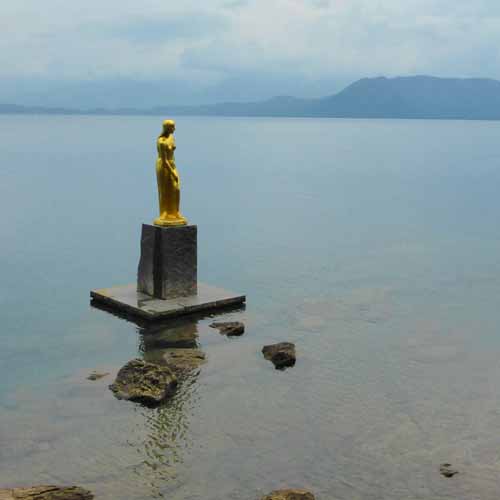
Your tour continues this morning with a circuit of Tazawa-ko , Japan’s deepest lake famous for its clear blue waters and absolutely stunning mountain setting. Your guide will recount the tale of the female dragon spirit , who is believed to inhabit the lake, before we explore the shrine and statue associated with the legendary spirit. You stop by a charming historic schoolhouse, fortunately rescued from demolition by a group of passionate locals.
Then it’s back to central Kakunodate and the afternoon is yours to wander freely. Stroll through the atmospheric streets of the samurai district beautifully framed by weeping cherry trees or hike through a tunnel of pink formed by 400 cherry trees overhanging the bank of the Hinokinai River. Truly one of the best cherry blossom sights in the country! Enjoy exploring some of the traditional shops selling crafts and food items such as miso paste, dashi stock and Japanese pickles.
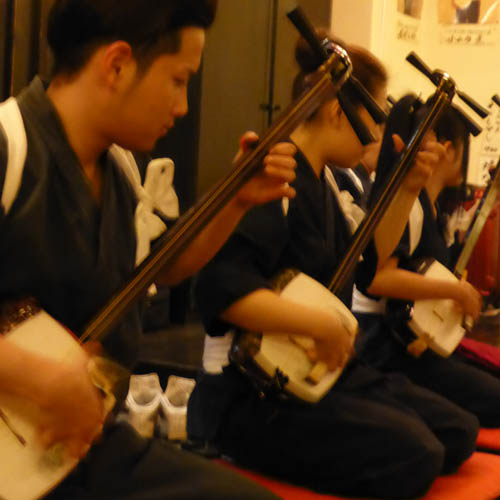
This morning a private minivan will drive you through the countryside of central Tohoku to Hirosaki in Aomori Prefecture, another former castle town. Today, it’s a welcoming city with a hilltop castle and expansive parks at the foot of scenic Mt Iwaki. In spring, the castle’s park literally erupts in a sea of pink as thousands of cherry trees respond to the warming weather, as do the locals who flock to the park to soak up the sun after a long, cold winter. You visit the ancient remains of Hirosaki Castle to enjoy the sight of cherry trees on mass framing the castle’s network of solid stone walls and moats .
Over dinner you enjoy a live performance of the Tsuguru shamisen , the local version of Japan’s traditional three-stringed instrument played with great energy to express the distinctive sound of the region’s folk songs.
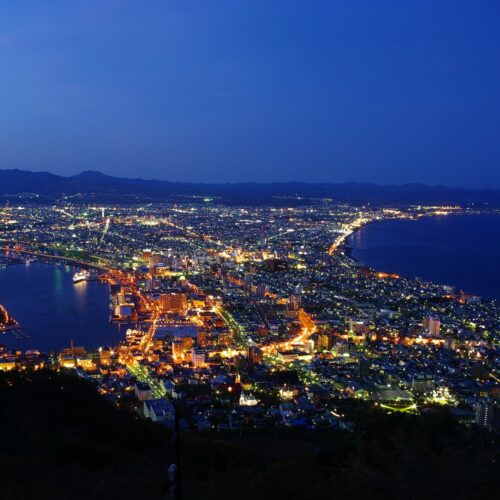
The shinkansen takes you to Japan’s northern island of Hokkaido via an underwater sea tunnel, an impressive feat of engineering. You disembark at Hakodate , a historic port city with a distinctly European feel. The city was one of Japan’s foreign trade ports allowed to engage with Russian and other foreign traders during Japan’s self-imposed period of seclusion and that legacy is still apparent today.
You tour unique Goryo-kaku Park , a fascinating western-style fortress built in the shape of a star to defend Hokkaido against western powers in the mid 19 th century. Come evening, you head up Mount Hakodate to enjoy the stunning panoramic view of the harbour lit-up at night, one of Japan’s best! Hakodate is also known for its excellent cuisine and we enjoy a delicious kaiseki meal at one of its local eateries.
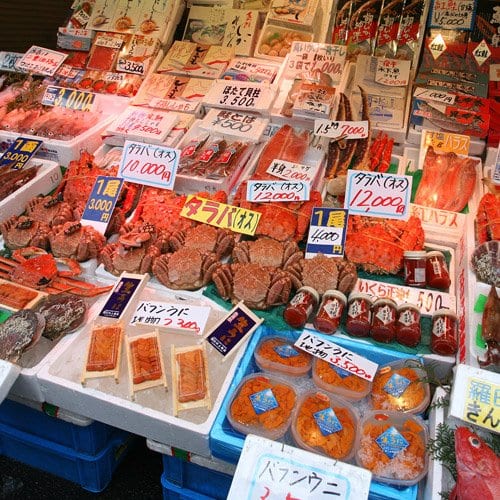
The day starts with an early-morning visit to Hakodate’s seafood market , known particularly for premium crab and squid caught daily from local waters. You hop on one of the city’s vintage street cars to the old hillside district of Motomachi where you take a walking guided tour, stopping by the former British Embassy and the heritage Red Brick Warehouse district on the waterfront to get a sense of the city’s early cosmopolitan history.
Hakodate was not only one of the early gateway ports for Japan’s trade with the west, but also between the local Ainu people and the Japanese settlers who moved to Hokkaido around 500 years ago. You visit the small but insightful Ainu Museum today to learn about the intriguing culture of Hokkaido’s indigenous people.
Step out tonight to sample some of Hakodate’s local cuisine – fresh seafood served up in a casual izakaya or perhaps a bowl of tasty ramen noodles. Chat with your guide if you’d like some recommendations.
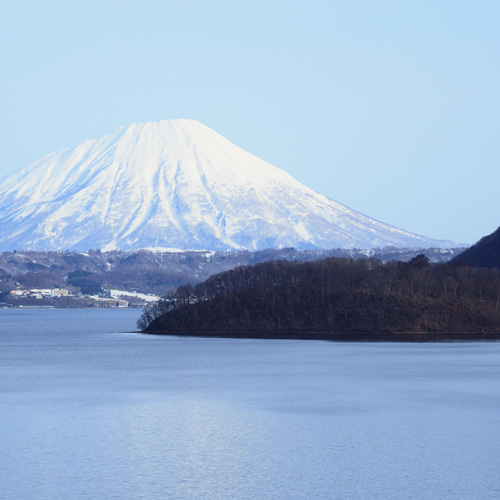
Finally you travel to your last destination on this trip, Sapporo by a private minibus. But before reaching Sapporo, you will stop by another landmark of Hokkaido, Lake Toya. It is a popular leisure destination for Hokkaido residents It also has an active volcano, Mt. Usu, and a beautiful forest at the foot of photogenic Mt. Yotei. You take the ropeway to see the lake from the top of Mt. Usu and look out over the Showa-shinzan, a lava dome created by volcanic activity in 1943.
You continue your journey to Sapporo , Hokkaido’s prefectural capital. With its wide boulevards and large public parks, Sapporo is a welcoming, cosmopolitan city with a lively food scene and stylish shops. In February the city hosts the Sapporo Snow Festival, one of Japan’s most popular events. However over April-May the atmosphere is distinctly spring-like, with masses of flowers on display in Odori Koen, the long stretch of public park in the city’s centre.
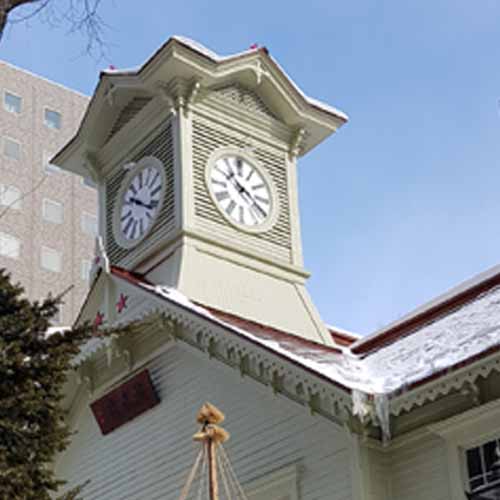
Our guide takes you on a walking tour of Sapporo this morning. You stop at Sapporo TV Tower for a great view of the city from above, and check out the historic Clock Tower and charming weatherboard barns of the former Agricultural College, which introduced livestock farming to Hokkaido 150 years ago, now one of its key industries. You may like some classic Hokkaido-style ramen, which Sapporo is most famous for.
After lunch you head to the quaint town of Otaru . Once a vibrant trading centre, Otaru has converted its stone and brick warehouses from its boom times into attractive museums, glass workshops, craft breweries and sake distilleries. You explore Otaru’s central canal with its Victorian-era buildings and street lamps and visit intriguing Aoyama Villa , once the home of a wealthy herring merchant built during the hey days of Otaru’s prosperous herring trade.
Return to Sapporo for a farewell dinner over a delicious modern cuisine with a great night view of the city and share your best memories of the trip!
This morning, you check out of your hotel after breakfast and your 2025 Cherry Blossom Tour of Northern Japan concludes.
You can take a domestic flight from Sapporo to the international airports in Tokyo, or if you’d like to linger in Japan a little longer, we would be delighted to plan your personal post-tour extension to show you a different part of Japan. Please see our Model Extension Itineraries on Private Tour page for inspiration.
Note: The cost of an escorted transfer to your departure airport is not included in our Small Group Tours as we found many guests choose to stay in Japan a bit longer. However, we would be happy to arrange your transfer to your next destination or your departing airport. Please see our FAQ for more details.
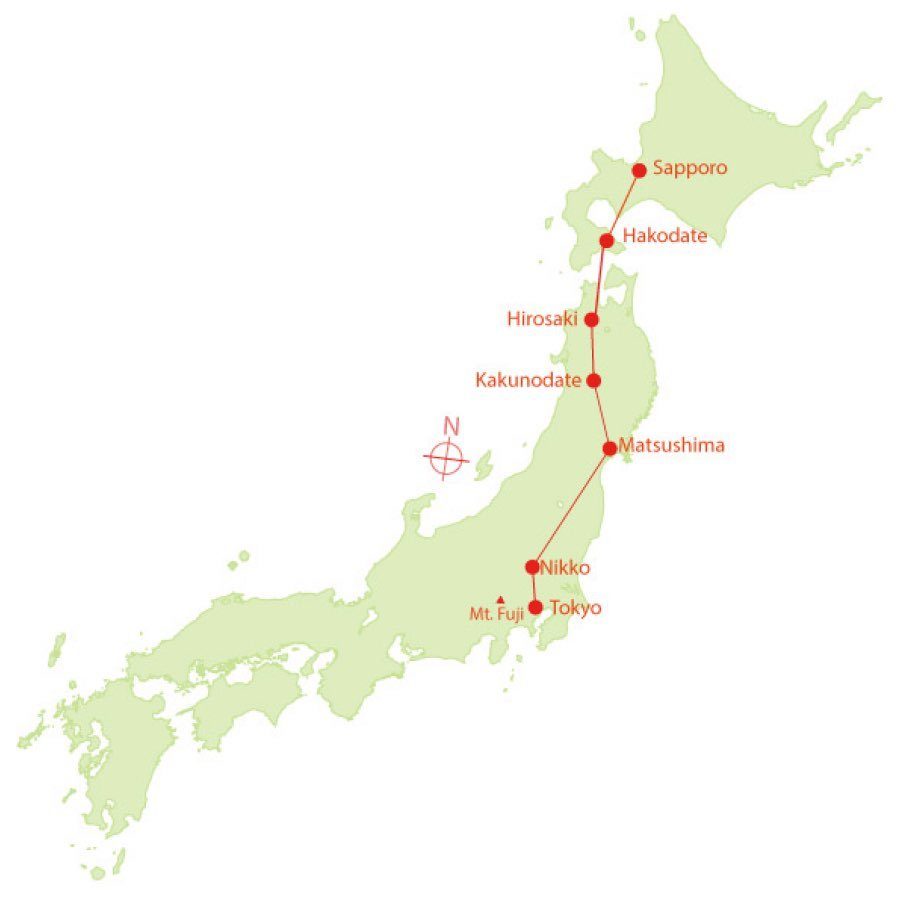
Dates & Prices
Per person twin share:, single supplement.
Each guest is personally looked after with one-on-one interactions with our hand-picked, expert tour guides. As part of your investment, this tour includes:
- First-class wisdom and higher standard of individual care and attention
- 12 nights’ accommodation (including traditional Japanese inns)
- All breakfasts
- 4 lunches (7 free choice lunches)
- 10 dinners (1 free choice dinners)
- Airport meet & greet on arrival
- Hotel transfer by public transport on arrival
- All local transport (train, bus and private minivans)
- Expert English speaking tour guides (locally licensed)
- Cultural activities and entry fees included in itinerary
- Luggage transfers (1 piece per person)
DISCLAIMER: Unless otherwise stated, this tour does not include the costs of international and domestic airfares, transfers on the last day, travel insurance, alcoholic and non-alcoholic beverages, transport during free time, personal expenses (laundry, internet, telephone, coin lockers etc.) and Visa (if required).
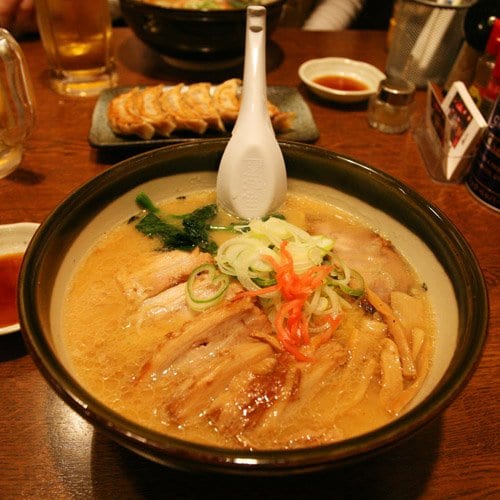
Who this Japan tour is for...
This is a perfect tour for people who:
- Want to appreciate cherry blossoms in historic sites with less crowds
- Wish to experience authentic cultures of Japan
- Enjoy the guidance of professional tour guides as well as some free time
- Like extra small group tours designed with healthy 55+ travelers in mind
- Be up-close and interact with locals through public transport
- Experience a variety in style , and typically 4 star boutique accommodation with private bathroom
For anyone interested in seeing and experiencing the best of Japan, Journeys to the East is the go-to tour company, with the most wonderful guides, great planning and organisation, and the best all-round, guaranteed fabulous experiences!
Journey to the East excelled again. This was our second trip with them and we couldn’t speak highly enough of them. Their attention to detail is second to none. We’ll be back for a third time!
We have travelled to Japan three times with Journey to the East. We love their concept of small group tours with excellent guides, varied and really well chosen hotels and superb dining experiences. All of the trips we have taken, to different areas of Japan and with different themes, have been very professionally organised, varied and fascinating.
Catherine & Bill McCourt
Have a question about this tour get in touch with our staff directly., privacy overview.
Your browser is outdated
Please upgrade to a more modern version to fully experience JapanToday site and for security reasons

- Real estate
- Classifieds
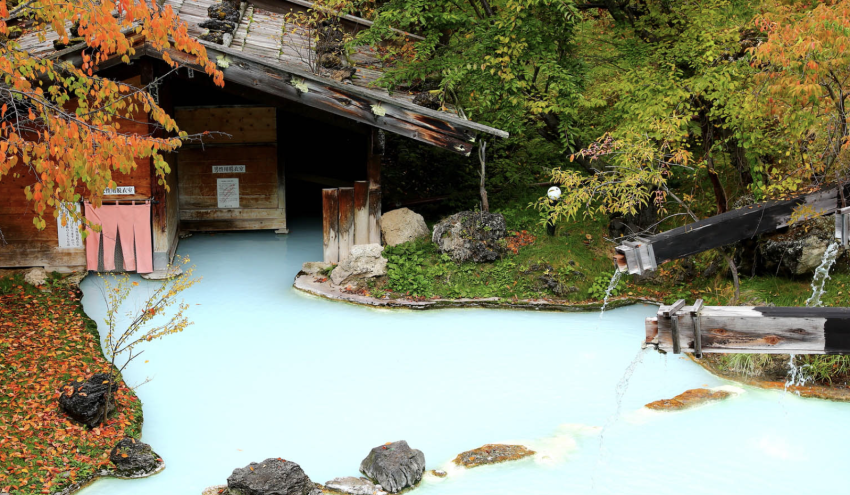
Shirahone Onsen: Located in Chubusangaku National Park, its unique milky waters are worth the trip
Shirahone Onsen is located in the quiet and peaceful Chubusangaku National Park in Nagano Prefecture . This hot spring resort in the northern Japanese Alps may be small, but its unique milky waters rich in calcium and magnesium and beautiful scenery are worth a special trip.
While the village of Shirahone has a four centuries-long history, it is thought that the hot springs have been in use since the Kamakura period (1185-1333). Because of the special milky-white waters, villagers in the area noticed that the hot springs were effective at treating ailments, such as sore muscles. By the mid-nineteenth century, as the Edo period (1603-1867) drew to a close, farmers from nearby municipalities, like Matsumoto , were soaking in the onsen.

The milky and silky water of the baths comes from the mineral sediments of magnesium and calcium which turns the water an almost opaque white color. While white waters are usually highly acidic, those here contain high amounts of carbonic acid and sulfur and are considered mild and safe for the skin of children and the elderly to enjoy. As locals long suspected, the springs are said to be effective at combating gastrointestinal problems, stress and muscle tension. They are also wonderful for warming the body. It is even recommended to drink the onsen water to help with digestion! Look around for bamboo water spouts around the village for a taste.
Things to See and Do
Click here to read more.
- External Link
- https://gaijinpot.com/

A must-buy product at Don Quijote!
See what's trending at Don Quijote in Japan and why you should get them!

Teach English in Japan
Join the leaders of English Education for Children in Japan!
No Comment Login to comment
Login to leave a comment, facebook users.
Use your Facebook account to login or register with JapanToday. By doing so, you will also receive an email inviting you to receive our news alerts.
Login with your JapanToday account
Articles, offers & useful resources.
A mix of what's trending on our other sites

The 10 Best Things To Do in Kobe
GaijinPot Blog

The 10 Best Things To Do in Shinjuku

Understanding Mount Fuji’s New Fees and Rules

The 10 Best Things To Do in Saga

25 Things to Do in Yokohama

The Best Things To Do In Sapporo

Top 10 Nighttime Sakura Spots in Japan

The 10 Best Things To Do in Hiroshima

See Where Cherry Blossoms Are Blooming Now in Japan on GaijinPot Travel

The Best 10 Things To Do In Kyoto

How to Visit Onsen With Tattoos in Japan for 2024

The 10 Best Things to Do in Osaka
More From Forbes
Discover the land of the samurai: 7 immersive shogun tours in japan.
- Share to Facebook
- Share to Twitter
- Share to Linkedin
Narai-juku, Nagano, Japan historic post town along the Nakasendo historic route at dusk. It's just ... [+] one of 7 tours available that highlight Japan's Shogun history.
With the recent release of the acclaimed Hulu historic epic TV miniseries Shogun, travelers are itching to explore firsthand the land of samurais, geishas, picturesque villages and urban centers throughout Japan that epitomize the thrilling spirit of Shogun. Based on James Clavell’s 1970s novel, Shogun is the story of William Adams, better known as Anjin-san, who rose to become the top advisor to Shogun Tokugawa Ieyasu in feudal Japan in the early 17th century.
Seizing the momentum of the highly anticipated new series adaptation, InsideJapan Tours has unveiled its latest Shogun campaign, which is designed to bring together a mix of historical sites and immersive experiences that echo the culture and history depicted in Clavell's epic. Travelers are now invited to tread their own path along the Shogun trail. These 7 tours can be added to any of InsideJapan Tours’ fully tailored cultural adventures or small group tours.
Tohoku, Japan The rural Tohoku region is jam-packed with fascinating feudal history and culture.
Traverse Tohoku
Discover the northern Honshu mainland and the Tohoku region as you walk in the footsteps of William Adams and Tokugawa Shogun just before the Battle of Sekigahara, a pivotal moment in the climax of Shogun. The rural Tohoku region is jam-packed with fascinating feudal history and culture. The samurai past is especially present in the town of Kakunodate where much of the architecture remains unchanged since it was erected in the early 1600’s.
The 7 -night Rural Tohoku Trail features a stay in a restored samurai Kura storehouse in Kakunodate.
Best High-Yield Savings Accounts Of 2024
Best 5% interest savings accounts of 2024.
Samurai culture of Kyushu
William Adams and his shipmates first landed near Kyushu's southern coast, and later Adams spent time in Nagasaki and the serene isle of Hirado. Today Nagasaki stands out as one of Japan's most picturesque cities, nestled between a scenic bay and verdant mountains. The city exudes a relaxed atmosphere and is dotted with echoes of its storied history, most notably the restored artificial island of Dejima, which stands as a prominent symbol of Japan's period of seclusion, being the sole point of contact with Westerners for more than two centuries.
This 13-night Kyushu Adventure cultural adventure explores the southern island and its culture.
Nijo Castle is one of the seventeen assets of Historic Monuments of Ancient Kyoto which is ... [+] designated by UNESCO as a World Heritage Site
Conquer a samurai castle
When William Adams first landed off the coast of Kyushu, the Shogun commanded that he and his crew be arrested and they were then held captive in Osaka castle. Today, a restored castle stands in a city famous for its cuisine and dubbed ‘Kansai’s kitchen’. In nearby Kyoto you’ll find Nijo castle, a UNESCO world Heritage site erected by the Tokugawa Shogun in the early 1600’s. It’s filled with secret rooms and cleverly designed defenses for Shogun guards.
The Gastronomic Adventure gives travelers the chance to experience both Osaka and Kyoto and explore one of Japan's twelve authentic Edo-period castles in Matsumoto, alongside the historic Nagamachi samurai district.
Channel Your Samurai with Kenbu
As portrayed in the tale of Shogun, samurai would master their concentration and call on their strength before a fight by engaging in a kenbu ritual, which is a dance with a katana sword and a fan. Experience a two-hour kenbu class in Kyoto, where skilled instructors guide you through fundamental sword techniques, fan dances, and the intricacies of samurai etiquette. The session ends with a captivating kenbu demonstration.
A Kenbu experience can be added to any trip to Kyoto.
Dating back to the 17th century, the Nakasendo runs 332 miles across central Japan, and was once a ... [+] thoroughfare for Daimyo Lords and their Samurai between Kyoto and what is now Tokyo, (formerly Edo).
Walk the way of samurai
Dating back to the 17th century, the Nakasendo runs 332 miles across central Japan, and was once a thoroughfare for Daimyo Lords and their Samurai between Kyoto and what is now Tokyo (formerly Edo). The route takes you along cobblestone paths shaded by trees, quaint villages and towns set in the mountains of central Honshu.
This 14 night Honshu Hiking Self-Guided Cultural Adventur e features walks along some of the best preserved Nakasendo route over two days between the castle town of Matsumoto and Kyoto.
Visit a Sword Master
Few things epitomize the samurai more than a katana or Japanese sword. Outside Tokyo you can visit one of Japan’s last traditional swordsmiths to tour their workshop and see how they fold steel the way it was done for centuries. A not-to-be-missed experience for a Shogun fan.
InsideJapan can integrate a swordsmith experienc e into any cultural experience.
Tosho-gu Shrine. Founded in 1617, the remains of the first shogun Tokugawa Ieyasu are entombed here.
The spirit of the Shogun
Set in the mountains of Tochigi, just a few hours from Tokyo, lies the town of Nikko, home to one of Japan's most magnificent shrines dedicated to Shogun Tokugawa Ieyasu. The exquisitely crafted Toshogu Shrine is a beautiful memorial to Japan's first Shogun, featuring intricate wooden carvings adorned with gold leaf. This awe-inspiring shrine complex is located in the lush forests of Nikko National Park, at the base of Mount Nantai, and is surrounded by pristine crater lakes and waterfalls.
A stay two-night stay in Nikko and a visit to Toshogu is included in A Northern Soul small group tour.
- Editorial Standards
- Reprints & Permissions
National Geographic content straight to your inbox—sign up for our popular newsletters here
Done the Camino? Try tackling Japan’s 88-temple Shikoku Trail
This challenging pilgrimage route takes in Buddhist temples, mist-shrouded mountains, steamy baths, and ages-old cultural traditions.

Bow respectfully at the temple gate. Cleanse hands and mouth at the fountain. Sound the bell. Leave a name slip with your wish in the main hall, light a candle and three sticks of incense, toss coins in the offering box, and chant sutras. Get your pilgrimage book stamped. Exit the gate, and bow again. Follow the red markers to the next temple.
Repeat 87 times.
Or not. On the Shikoku Henro , one of the longest pilgrim routes in Japan , there are many ancient customs but few hard-and-fast rules. You don’t even have to walk it: Many Japanese now take cars or bus tours; others ride trains or bikes. You can tackle the trail counterclockwise instead of clockwise. Or break the circuit into segments. You can wear the traditional white vest or look like an ad for REI—as most of us did on the small-group tour I joined last September to hopscotch a section of seven temples.
“Buddhism is more a way of life than a religion that tells you what you can or can’t do,” said David Moreton, a Shikoku-based researcher specializing in the Henro. “However, showing respect is important.”
Travelers’ interest in long-distance walks is at an all-time high. The famed Camino de Santiago in Spain saw a record 446,000 pilgrims last year. The Henro sees a fraction of that. Nevertheless, the numbers of walkers and foreign visitors seem to be rising.

The circular route crosses all four prefectures of Shikoku, Japan’s fourth largest island. As befits its evolution over a millennium, the Henro is a bit of a patchwork. The road to enlightenment runs through small family farms, busy highways, and suburban streets punctuated by vending machines. But the route also reveals expansive coastal views and Edo-period landscapes straight out of a Hiroshige woodblock print.
Visiting Shikoku’s 88-temple trail
The most obvious place to start was Temple 1, in Tokushima Prefecture in the island’s northeast. Next to its carp-filled pond, Jun Hashiba, a guide for Kyoto -based tour company Oku Japan , attempted to answer questions about how a Japanese monk born in the eighth century inspired the development of an over 700-mile circuit of 88 temples still in use more than a thousand years later. “Everyone knows Kukai; we study him in school,” said Hashiba.
Born on this island, Kukai founded one of the country’s more popular sects of Buddhism, called Shingon. He’s revered, but not only for his esoteric teachings, which are aptly named. “We mostly admire him for his abilities as a poet, scholar, and artist; he was a great calligrapher,” said Hashiba. The peripatetic and polymathic Kukai’s real-life feats morphed into the stuff of legend and eventually led to the popularization of the current route. Hashiba suggested the real answers would come once we started walking.
The four-mile section from Temple 20 to Temple 21 was lined with cathedral-high cypress, cedar, and bamboo. Rope-garlanded boulders, the embodiment of deities, kept us company, as did vermilion-bibbed stone statuettes, called jizo, which are guardians of children and travelers. Kukai, also called Kobo Daishi, was here too, personified in the pilgrim’s walking staff inscribed with words that translate to “traveling together.”
(These Japanese prayer plaques became symbols of hope.)
“When I walk, I sometimes think too much, but I keep walking, and then I think of nothing—in a good way,” said Tomoko Imaizumi, a guide who has made the pilgrimage four times.
At the Temple of the Great Dragon (21), a part of which dates from the 12th century, it was easy to see why so many religions built their altars atop mountains. In his writings, Kukai claimed to have climbed to the hilltop aerie and chanted mantras a million times. Despite Shingon Buddhism’s opacity, at its core is this: that everything is part of a cosmic whole and that enlightenment can be achieved by ordinary people. “I have received so many blessings from the Henro,” said Kizumi, a woman I met at Temple 6 (Temple of Everlasting Joy). She didn’t give me her last name, but she did press into my hand a pale green friendship bracelet made of string.
The trail’s culture of kindness
Indeed, pilgrims along the trail invariably spoke of the kindnesses of the locals. This is the culture of osettai, a unique feature of the Shikoku pilgrimage. “I experience this almost every day as a pilgrim,” said Imaizumi. “Usually it’s a mandarin or some sweets; one time a woman stopped her car and jumped out to give me 300 yen.”
Close to the Vulture Peak Temple (1), our group met Ranshu Yano, master of the dwindling art of ai-zome. The Tokushima region produces natural indigo for dyeing. Indigo textiles were once used in samurai clothing.

Yano invited us into his workshop to watch a portion of the painstaking process. He slid the lid off a large vat. The blue stew needed to be inspected, stirred, and allowed to ferment.
“It’s a living thing,” he said, holding up permanently blue hands. “I have to feel it.” The finished textiles are fashioned into exquisite kimonos.
(The mystery of Japan’s traditional washi paper.)
On the Henro, gifts come in all forms, not least of which is the chance to connect with people still tied to the land, still bound to artistry and traditions long abandoned in other places. “People have been doing what I do for a thousand years,” Yano said. “I stand in the middle, between the past and the future.”
What to know
Related topics.
- PILGRIMAGES
- RELIGIOUS TRAVEL
- MONASTERIES
- BACKPACKING
You May Also Like

How to visit Japan's shrines and temples—with respect

Temples, meditation and contemplation: staying with monks on Japan's holy Koyasan
Free bonus issue.

3 ways to plan a Camino de Santiago hiking pilgrimage

How to plan your pilgrimage to Montenegro‘s sacred spaces

Why did these monks in Japan choose to mummify themselves?

Can tourism help protect the iconic Mont-Saint-Michel?

Open a portal to the underworld at these Buddhist ‘hell parks’
- Perpetual Planet
- Environment
- Paid Content
History & Culture
- History & Culture
- History Magazine
- Mind, Body, Wonder
- Gory Details
- 2023 in Review
- Terms of Use
- Privacy Policy
- Your US State Privacy Rights
- Children's Online Privacy Policy
- Interest-Based Ads
- About Nielsen Measurement
- Do Not Sell or Share My Personal Information
- Nat Geo Home
- Attend a Live Event
- Book a Trip
- Inspire Your Kids
- Shop Nat Geo
- Visit the D.C. Museum
- Learn About Our Impact
- Support Our Mission
- Advertise With Us
- Customer Service
- Renew Subscription
- Manage Your Subscription
- Work at Nat Geo
- Sign Up for Our Newsletters
- Contribute to Protect the Planet
Copyright © 1996-2015 National Geographic Society Copyright © 2015-2024 National Geographic Partners, LLC. All rights reserved
Japan's snowy alpine route opens after winter closure
Tourists are flocking to a spectacular snow corridor in Japan's Northern Alps. The Tateyama Kurobe Alpine Route opened on Monday after it was closed throughout the winter.
The road stretches over 37 kilometers. It connects Tateyama Town in Toyama Prefecture and Omachi City in Nagano Prefecture. It features a ropeway and cable cars.
An opening ceremony took place near Murodo Terminal at an elevation of 2,450 meters. The last time vehicles were able to travel on the route was four and a half months ago.
Tourists at the ceremony headed along the snowy corridor.
A male tourist from Singapore said, "This place is very, very special, unique and different from anything else that we have seen in Japan. We recommend it to anybody, all friends and family. It's a great place, something everybody should see."
The route's operator, Tateyama Kurobe Kanko, says a strong earthquake that struck the Noto Peninsula farther north on New Year's Day did not damage the route.
Tourism officials say many visitors are expected, as subsidies for promoting tourism in the quake-hit region have helped dispel their concerns.
Please view the main text area of the page by skipping the main menu.
The page may not be displayed properly if the JavaScript is deactivated on your browser.
- Entertainment
Japan's Alpine sightseeing route showcasing giant snow walls opens
April 15, 2024 (Mainichi Japan)

TOYAMA (Kyodo) -- A sightseeing route that runs through the Tateyama mountain range in central Japan featuring tall snow walls opened Monday for this year's tourist season.
The Tateyama Kurobe Alpine Route, typically closed during winter, connects the town of Tateyama in Toyama Prefecture and the city of Omachi in Nagano Prefecture in the Northern Alps via bus and cable car. The route is open until the end of November.
This year, the snow walls created by snow removal work reached 14 meters. The 500-meter pathway, named "Yuki no Otani," is located near the Murodo plateau at an altitude of 2,450 meters.
Takeshi Nishizawa, a 62-year-old company employee from Ibaraki Prefecture, northeast of Tokyo, who visited the snow corridor with his wife for the first time, was impressed.
"The snow walls are higher than I imagined. I've seen pictures before, but seeing them in person is truly moving," he said.
This year will mark the end of a 3.7-kilometer trolley bus service that runs inside a tunnel piercing through part of the mountain range.
The trolley bus service, the only one of its kind in Japan, is scheduled to end on Nov. 30.
An official of the operating company said, "We hope visitors will enjoy the final journeys of the trolley bus as much as they have cherished their past experiences here."
Also in The Mainichi
Latest articles.

More Articles
- Go to Page Top

IMAGES
VIDEO
COMMENTS
Northern Japan Tours & Trips. Find the right tour package for you through Northern Japan. We've got 19 trips going to Northern Japan, starting from just 6 days in length, and the longest tour is 90 days. The most popular month to go is October, which has the most tour departures. 19 Northern Japan tour packages with 15 reviews.
Our Charms of Northern Japan Tours are great for those looking to escape the bustling cities and see a more quiet side of Japan. Enjoy the perks of an English-speaking guide at your side, as you visit highlights of the North, including Sapporo, Hakodate, and Nikko. Enjoy seasonal attractions during each itinerary, such as the cherry blossoms of ...
Hokkaido & Northern Japan Tour. A Luxury Immersion into Hokkaido. 9 Days 14 Cities from USD 6,989. from Tokyo to Hokkaido. 2024 Schedule Available. View Tour. Our Northern Japan Tours uncover Tohoku and Japanese festivals including the Kanto Festival, Nebuta Festival, and Sendai's Tanabata Matsuri.
Best of Northern Japan. Map data ©2022 Google. This unique tour will lead you to the most beautiful spots of Tohoku (Northern Japan). You will first start in Tokyo and soon head to Nikko. Nikko's colorful shrines and temples and its national park offer visitors a wonderful combination of both Japanese history and natural beauty.
Touring Northern Japan - 9 Days. Get ready for a tour that celebrates the history, beauty, and culture of Japan. This nine-day adventure focuses on the north, where you'll enjoy city tours of Tokyo, visit iconic Mount Fuji, and (if you visit in spring) see the cherry blossoms in bloom. Rounding out the experience is a trip to the historic port ...
Community, Culture, & Cuisine Itinerary - 9 Days Eat your way through Northern Japan on this nine-day road trip that explores the culture, cuisine and community of Tohoku. You'll marvel at centuries old temples, indulge in fresh seafood and taste wine from some of the area's magical vineyards. Outdoor Adventure Itinerary - 12 Days Adventure ...
Basho's most famous poetic travelogue, Narrow Road to the North, is one of the great works of Japanese literature. This 7-day, 6-night fully-guided tour takes us on a unique, authentic experience following in the footsteps of seventeenth-century Japanese poet, Matsuo Basho (1644-1694). The walking is along quiet country lanes, forest trails ...
The 11-Day 2024 Autumn Tour of Northern Japan takes you to the best autumn colours destinations in Tohoku region, the northern part of the Honshu Island. This Tohoku autumn itinerary is crafted specifically for this time of the year. The tour starts in Tokyo and travels to Nikko, Oirase, Lake Towada, Kakunodate, Lake Tazawa, Hiraizumi, Naruko Gorge and Matsushima.
Our Northern Routes of Japan tour from Tokyo to Kyoto is a fast paced addition to our collection of Japan tours . Unlike our other tours, the Northern Route Tour to Kyoto is a quick paced tour for those who want to see and experience a lot of Japan in a short period of time, this tour of northern Japan is a 7 night getaway which delivers much ...
Read reviews and enjoy exclusive savings on Bunnik Tours 16 Day Colours of Northern Japan. Discover the incredibly scenic, historic and diverse areas of northern Japan on this unique small group tour. From the bright neon lights and modernity of Tokyo and Sapporo to the impressive waterfalls and limestone caves along the Geibikei Gorge, the stunning Hirosaki Castle and the three delicious ...
Day 1: Arrive in Tokyo. Spend the night in Tokyo; if you wish to spend a few days in the capital sightseeing, refer to the itineraries earlier. Days 2 & 3: Akan National Park. Fly from Tokyo's Haneda Airport 1 1/2 hours to Kushiro Airport, where you should stop by the small tourist office for a pamphlet on tours of Kushiro Marshland National ...
Small Group Tour : Experience the unexplored beauty and deep-rooted culture of Japan's northern region with our exclusive Hokkaido & Northern Japan Immersion Tour. This luxurious multi-day journey takes you from the bustling urban scenes to the tranquil natural beauty of Hokkaido and Aomori, and Iwate. *This tour requires a minimum of 4 ...
Our Japan Deluxe Tours are accomodated with professional tour guides, fluent in both Japanese and English, to ensure an educational and valuable visit. Air-conditoned, private coaches are also included, so you can enjoy a comfortable and hassle-free time in Japan. Our tours range from 7 to 21 days, to various regions of Japan.
Enjoy the good life - Japanese style. Our Onsen tours only stay at Onsens. On the Northern Japan Onsen tour, you will enjoy the best local food specialties and the famous Japanese hospitality while relaxing in some of the best onsens in Japan and visiting out-of-the-way destinations. 15 Days / 14 Nights. Max Tour Size : 8.
This trip to Japan will take you from Kyoto to Tokyo and then up again, by boat, to the island of Hokkaido ! Discover a less touristy Japan, closer to nature. Travel around Hokkaido by car and discover the natural parks of this large island in the north. A variety of accommodation and transport, a guided tour of Kyoto and pocket Wi-Fi : an organised trip in total freedom !
Where scenic landscapes, enriching heritage and modern marvels converge, dive into the soul-stirring allure of Northern Japan on this 13-day small-group tour (max. 24 travellers). Cruise across the hypnotically blue surface of Lake Toya surrounded by lush hills and discover the allure of the star-shaped Fort Goryokaku, where legends of the Samurai are told. See Hirosaki Castle, seemingly ...
WHY GO. The western side faces the Sea of Japan and has abundant flowing rivers, flatlands, and expanses of rice growing on fertile farmlands (even in the heat of Summer it was green, everywhere). High mountains surround the northern, southern and eastern sides. The inland areas are blanketed with heavy snowfalls in the winter - thus Akita ...
Tour Overview. The 2025 Cherry Blossoms Tour of Northern Japan introduces you to a less-hurried side of Japan during the country's peak cherry blossom season. Leaving Tokyo behind, you journey to Japan's Tohoku region and the northern island of Hokkaido to experience some of the most spectacular cherry blossoms in the country, which bloom ...
Shirahone Onsen is located in the quiet and peaceful Chubusangaku National Park in Nagano Prefecture.This hot spring resort in the northern Japanese Alps may be small, but its unique milky waters rich in calcium and magnesium and beautiful scenery are worth a special trip.. While the village of Shirahone has a four centuries-long history, it is thought that the hot springs have been in use ...
Narai-juku, Nagano, Japan historic post town along the Nakasendo historic route at dusk. It's just ...[+] one of 7 tours available that highlight Japan's Shogun history. getty. With the recent ...
Next to its carp-filled pond, Jun Hashiba, a guide for Kyoto-based tour company Oku Japan, attempted to answer questions about how a Japanese monk born in the eighth century inspired the ...
Tourists are flocking to a spectacular snow corridor in Japan's Northern Alps. The Tateyama Kurobe Alpine Route opened on Monday after it was closed throughout the winter. The road stretches over ...
April 15, 2024 (Mainichi Japan) Tourists walk in an area surrounded by tall snow walls on April 15, 2024, in Tateyama, Toyama Prefecture, as the Tateyama Kurobe Alpine Route opened for this year's ...